The Perks of Rainy Days on Maui
After I had spent the first few hours at my hostel on Maui, Hawai’i, napping like a plump pile of dough left to ferment in yeast, massive blankets of clouds gathered above the Hawaiin Archipelago and decided to stay for camping. Well, you can’t blame them. After all, who wouldn’t want to linger around in paradise?
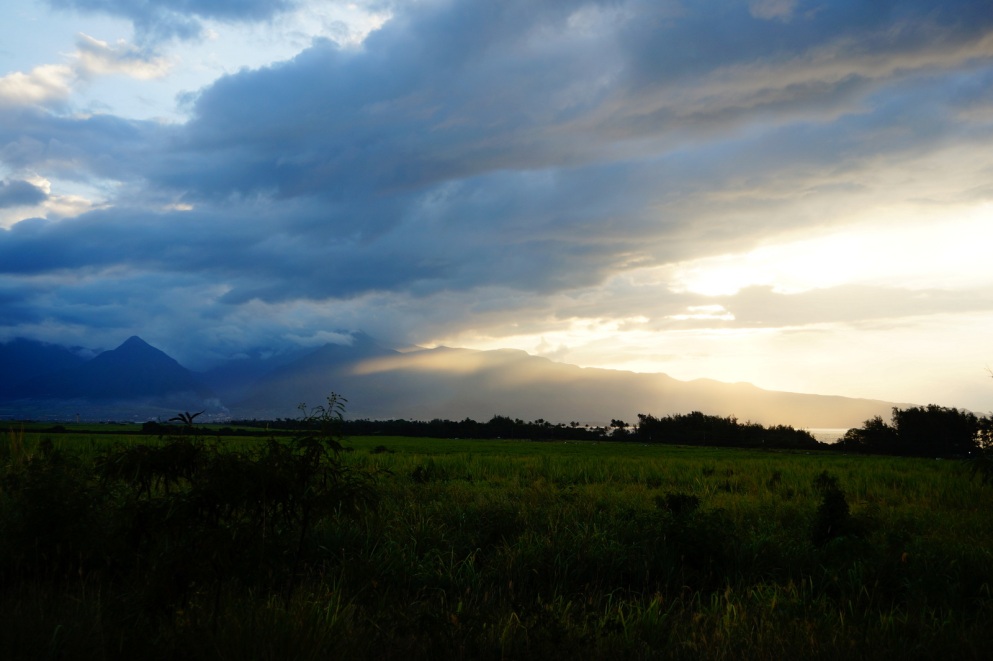
The clock was ticking; there were less than 48 hours until my flight back home. These were the only two days I had planned for Maui, and therefore I had high hopes to soak in the last bit of sunshine and aloha spirit before heading home.
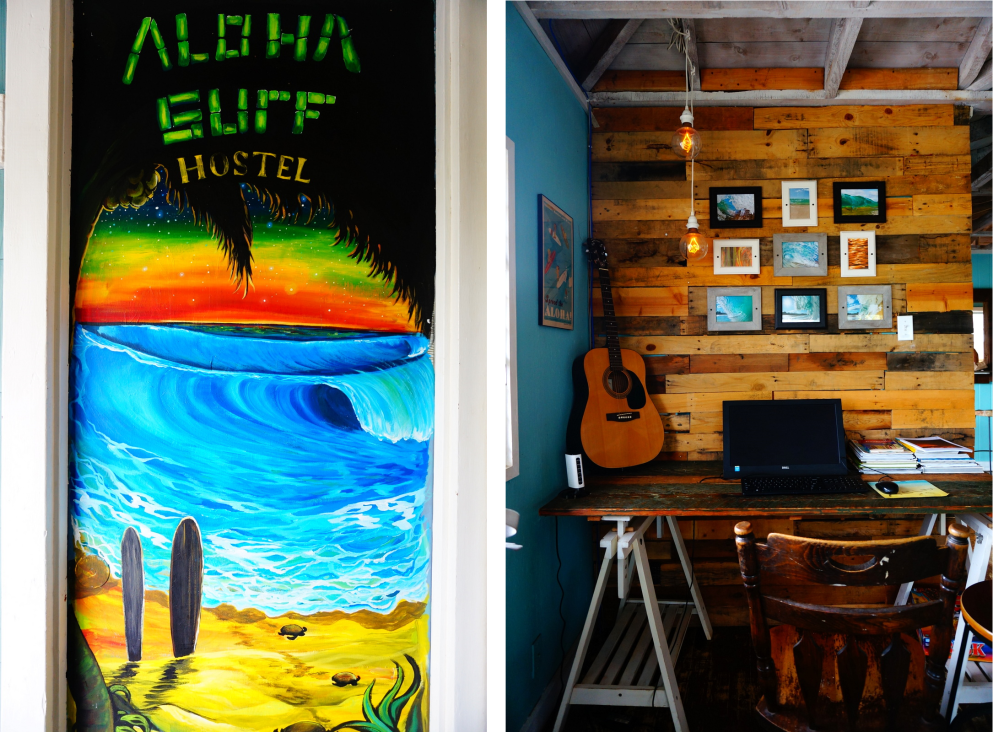
Apart from the hospitality and the free-spirited atmosphere, the most fantastic thing about Aloha Surf Hostel (which, just to clarify, did not sponsor me) was that they offered daily trips for hostel guests to embark on all sorts of fantastic adventures around Maui. The activities rotated on a weekly basis, and for people who did not (want) to rent a car, it was literaly the most awesome thing. I was super excited to have put down my name on the list for next day’s activity, a hike in the Iao Valley Park. The lush greenery surrounding the Iao Needle was the scene for half of the post cards depicting Maui.
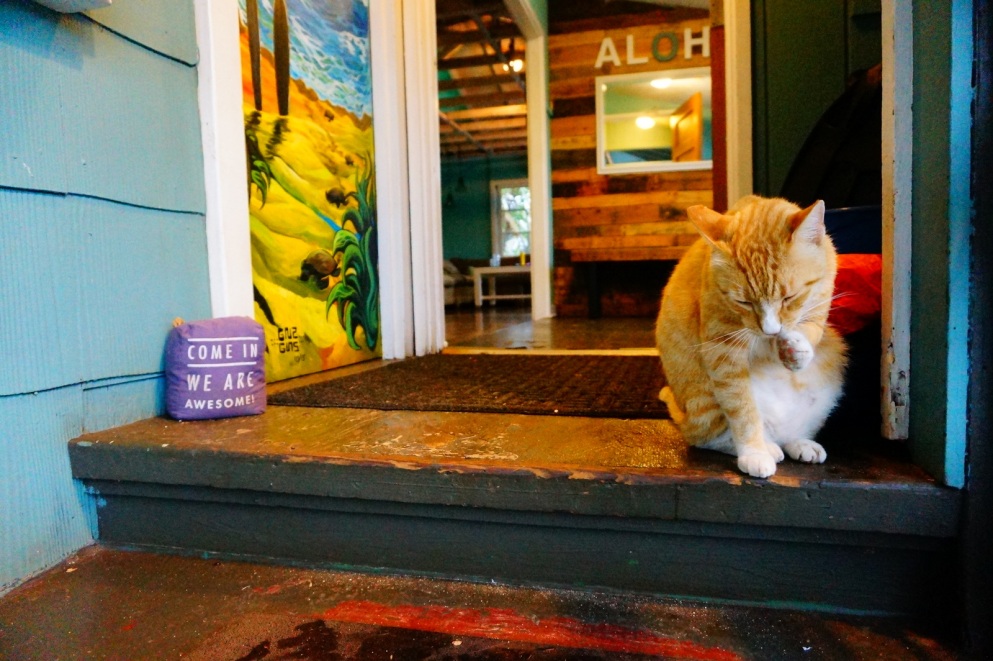
My hopes came crushing down with the rain and were then washed down the imaginary hills of the Iao Valley. The rain flooded the entire area and made it unaccessible to hikers unless you wished to slip and be burried alive by mud. It was not the kind of rain that allowed the adventurous type of people to happily wander around in squeeky slippers; it was the kind of rain that had me question how we had managed to use gravitational pull to put a spacecraft on a tiny piece of rock in space but how we had not invented a raingear capable of dealing with such weather.
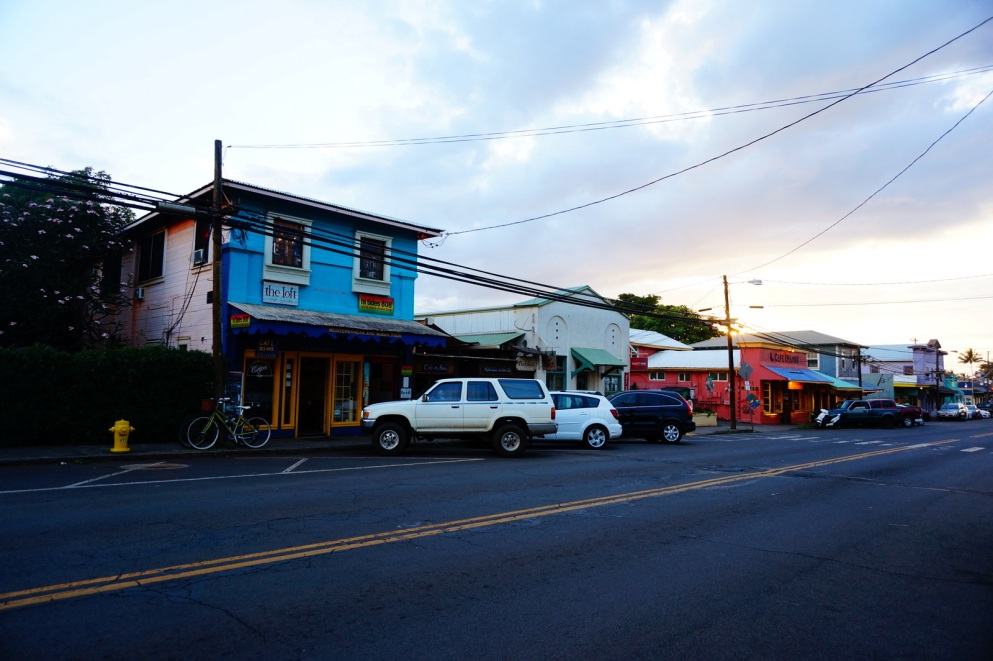
Luckily, I had caught a glimpse of the beauty of the little town of Paia right before all hell broke loose. On my way to the hostel the taxi driver recounted personal stories and thoughts. We drove on the plains between Haleakala and the West Maui Mountains; to both of our sides there were long stretches of sugar cane fields. The driver told me that it was not profitable anymore to grow sugar canes on these soils which his very own ancestors had tilled when they had migrated to Hawai’i. They were going to get rid of the fields to build houses and hotels to earn money with. Looking sideways to the greyish outlines of the volcano and the pleasingly green land to its foot I wondered if by the next time I came back here, there would be an unpleasant change of scenery awating me.
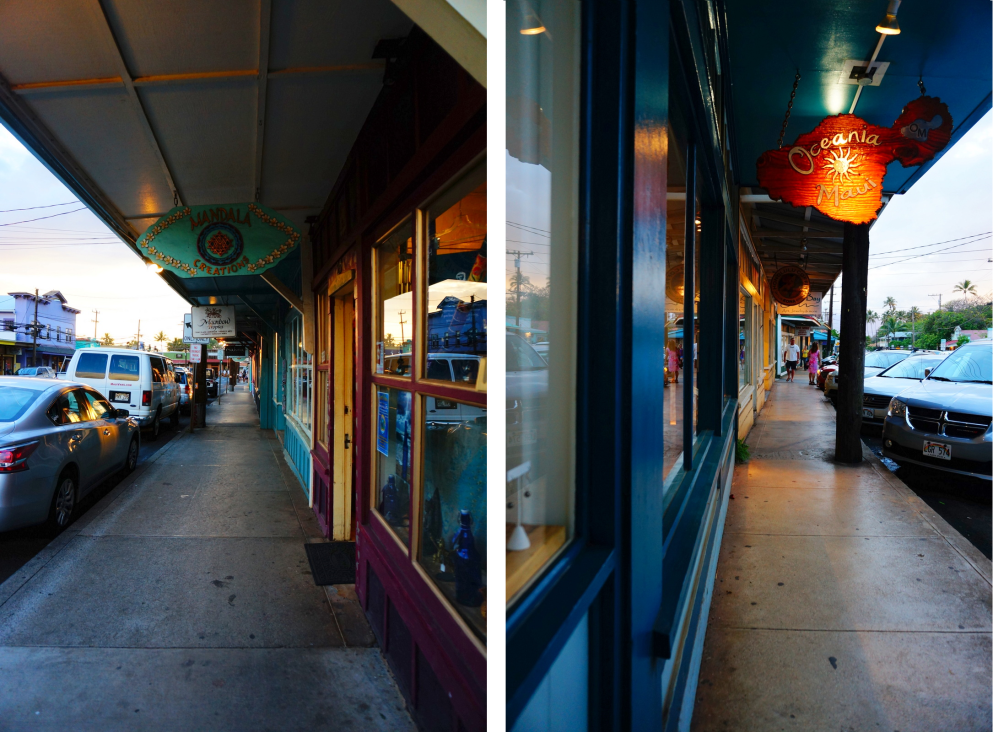
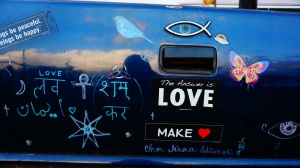 Paia was said to be a little hippie town, and sure it was. The one main street had many seafood restaurants and a variety of bars filled with young people from all corners of the world. The supermarket Mana Foods, which has been voted 250 times on Google and has a score of 4.8 (quite an accomplishment, if you ask me), was the heaven for health-concerned people. I had never seen such an extensive collection of vegetarian and vegan options (though it had a wide selection of meats and dairy products, too).
Paia was said to be a little hippie town, and sure it was. The one main street had many seafood restaurants and a variety of bars filled with young people from all corners of the world. The supermarket Mana Foods, which has been voted 250 times on Google and has a score of 4.8 (quite an accomplishment, if you ask me), was the heaven for health-concerned people. I had never seen such an extensive collection of vegetarian and vegan options (though it had a wide selection of meats and dairy products, too).
Keep in mind that a frozen pizza costs 8 $ on Hawai’i, you can imagine what kind of spending power you shall bring to this place. Despite the products being pricey, I did not regret a single Penny I spent there. I tried all sorts of new drinks and salads and whatnot, and everything was delicious in a new and unique way. And that is how I ended up sitting at the hostel kitchen counter in the evening, eating the most expensive organic strawberries I had ever bought and got happily distracted by the sheer juiciness.
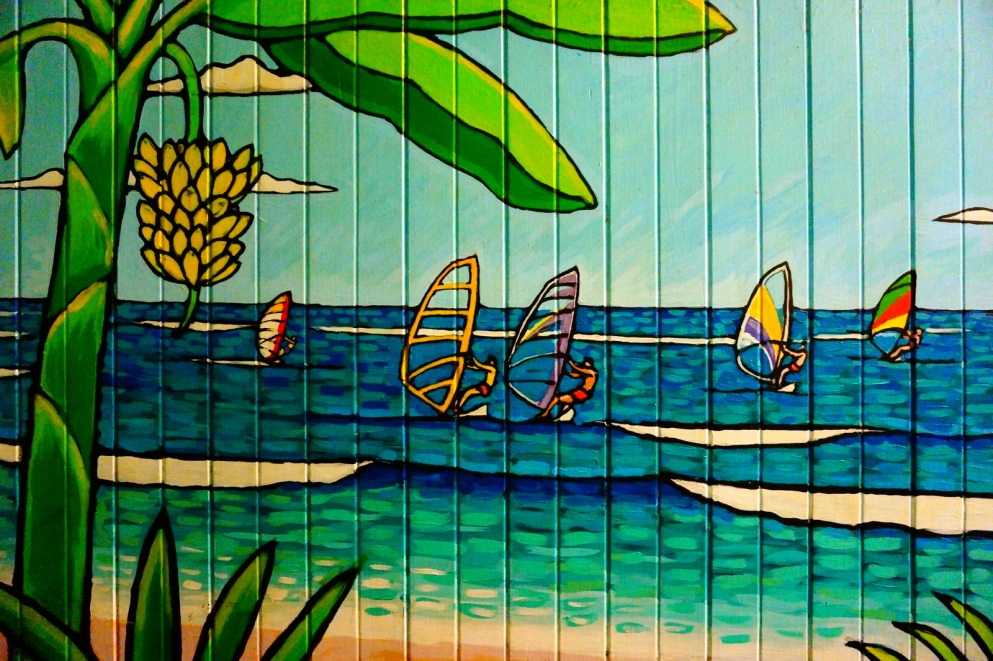
 The day of the flooded hiking dream came, and rain did not stop. After having eaten my breakfast pancakes with an overload of chocolate sprinkles, I was stuck without a meaningful vacationy activity. All the planning and careful selection of the best things to do on Maui were out off the window. The common room featured a few tall stools on which I sat to stare out of the window. A tall papaya tree in the neighouring yard waved its leaves in accordance to the conduct of the wind.
The day of the flooded hiking dream came, and rain did not stop. After having eaten my breakfast pancakes with an overload of chocolate sprinkles, I was stuck without a meaningful vacationy activity. All the planning and careful selection of the best things to do on Maui were out off the window. The common room featured a few tall stools on which I sat to stare out of the window. A tall papaya tree in the neighouring yard waved its leaves in accordance to the conduct of the wind.
And then, just like that, when I simply accepted my first world fate, it was not so bad anymore. The rain was peaceful, the world felt cleansed, and I enjoyed the solitude and forced vacancy to think about how this minor disappointment was an embodiment of life itself. Sometimes you get so caught up trying to accomplish the only option you saw for yourself that you have a hard time when things do not go that way. And usually things never go the way you plan them to do. Everybody comes to Maui and leaves after having taken the Road to Hana. Now I would go look for the non-obvious kind of beautiful bits and bites.
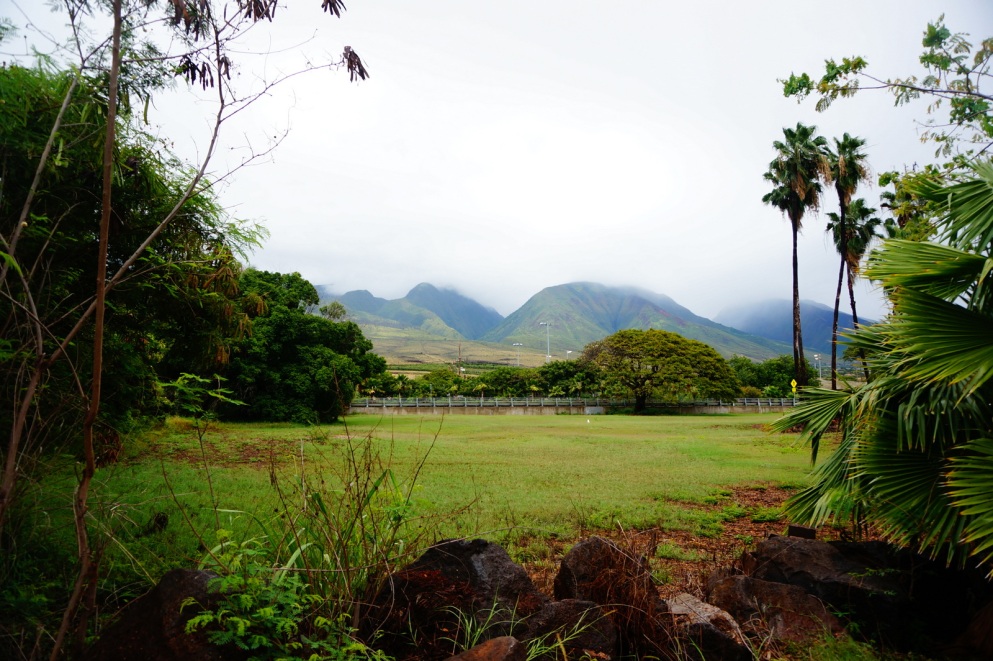
The next day my friend and I took a bus to Lahaina for three reasons: (1) Lahaina was on the sunny side of the island, so we had hoped that rain there would be less stringent to such a degree that we could at least snap a photo here and there. (2) There were only a handful of buses on the island, they ran sporadically and I had a flight to catch in the evening. (3) I had already finished scripting a 3D model of the hostel and Paia in my head the previous day, so another day doing that would be a tad bland.
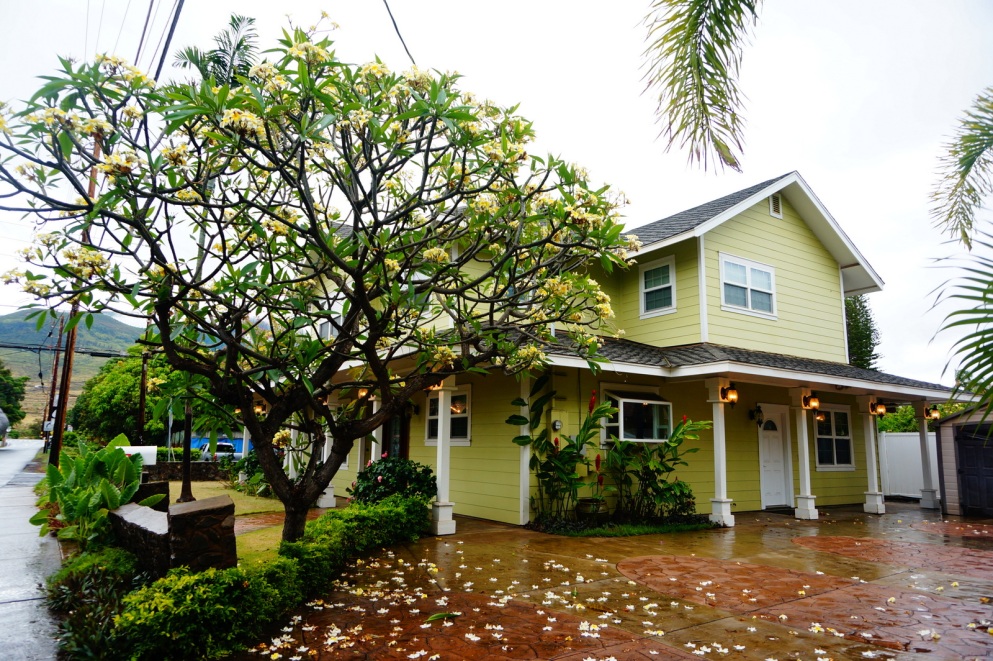
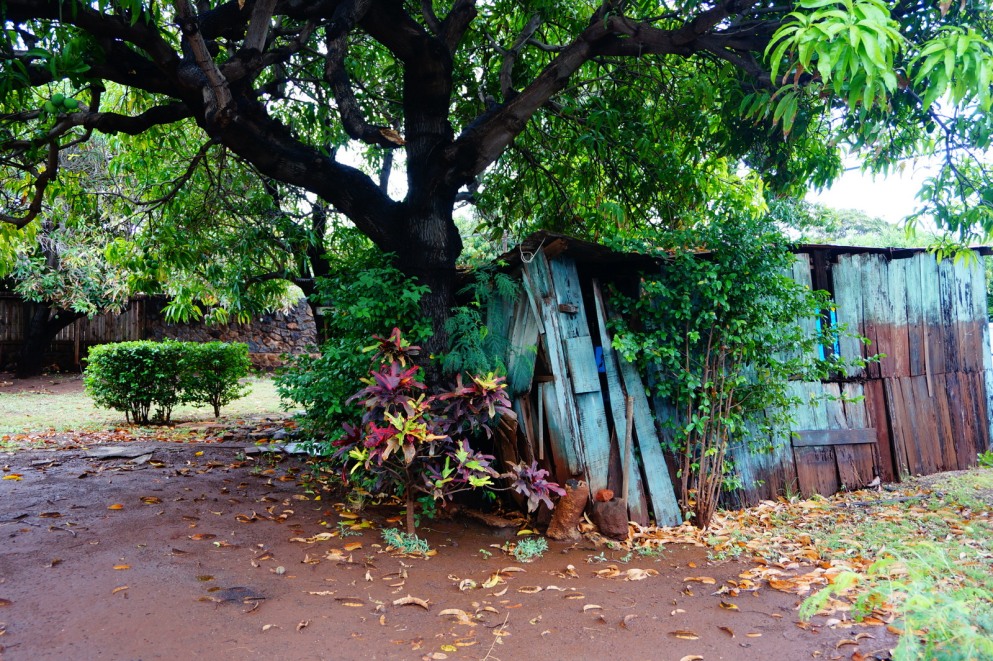
We were right regarding the rain. At times it even stopped in Lahaina. We got off the bus, had no sense of direction and just started walking randomly in the neighbourhood. After some time we tried to follow the “historic old town route” and ended up walking left and right anyways. The beauty of that cold morning was pristine and clear like the taste of a mouthful of mountain dew (not the softdrink, the real thing, and now I have ruined the metaphor). We ended up wandering around a residential area. The Hawaiin people have the most immaculate and colourful gardens. I could not help but photographing people’s gardens and porches and felt slightly criminal because of the potential of privacy invasion by lenses.

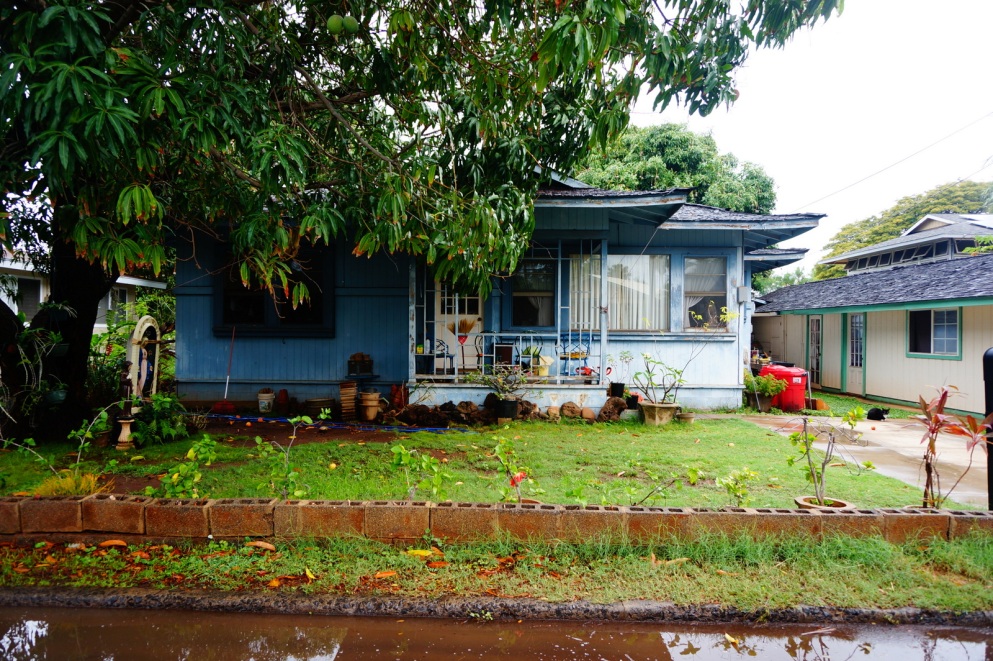
The plumeria trees were in the state of full blossom, a type of tree I had come to love during my stay on Bali. Each plump petal carried cupola-shaped rain droplets. One garden had a particularly lavish arrangement of bushes and trees. While we were gawking and commenting, the owner, an elderly man, came home and noticed us. Awkwardly, we tried to retreat and were then caught by him with a big smile. He plucked a flower from one of the plumeria trees for each of us and gave them to us to put in our hair. I happily wore that flower with its soft scent for the rest of the day until a shop clerk later on pointed out that I had been wearing it in the wrong side of my hair and thus signalised being married the entire day. Doesn’t matter, had flower.
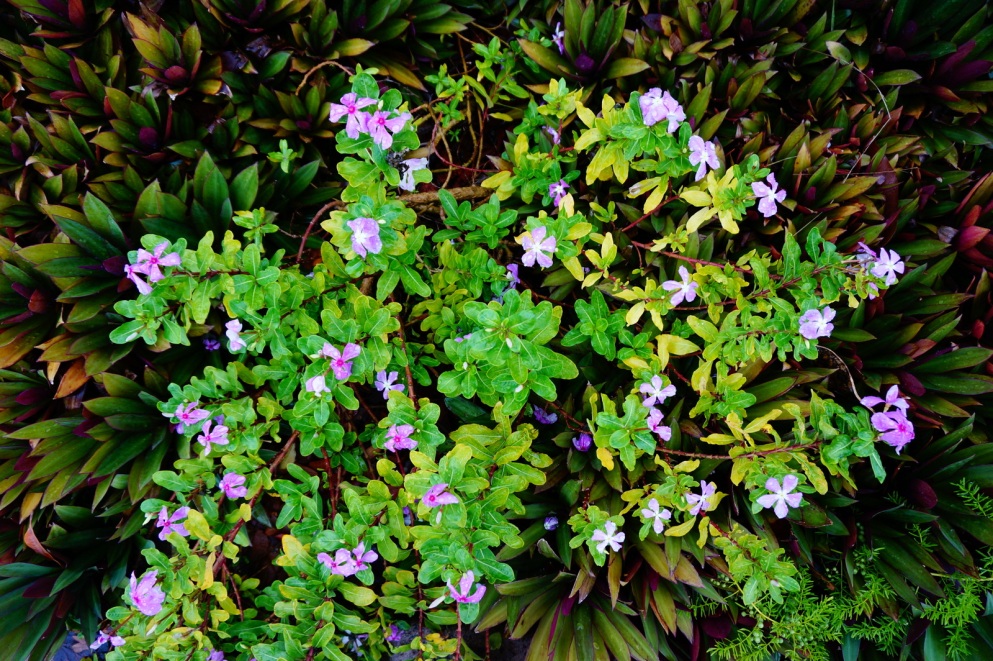
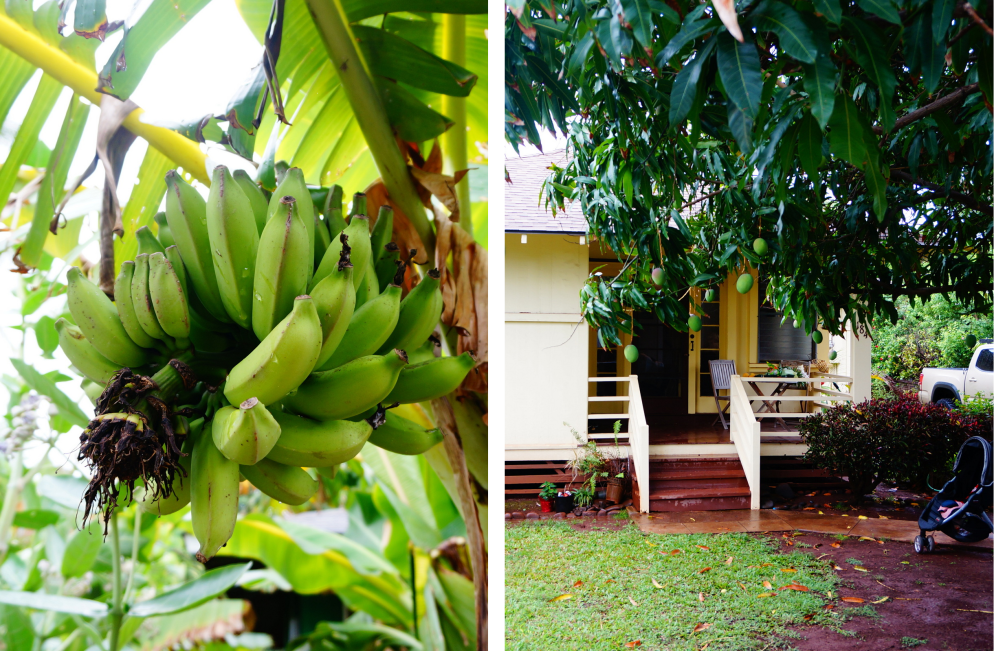
Eventually the chirping birds of the quiet residential area gave way to human noises and we found ourselves in the touristic part of Lahaina. For me, the density and number of the shops dedicated for tourists on Front Street were too high. And since the weather was less than ideal, the people who elsewise would have been at the beach gathered in and out of the shops.
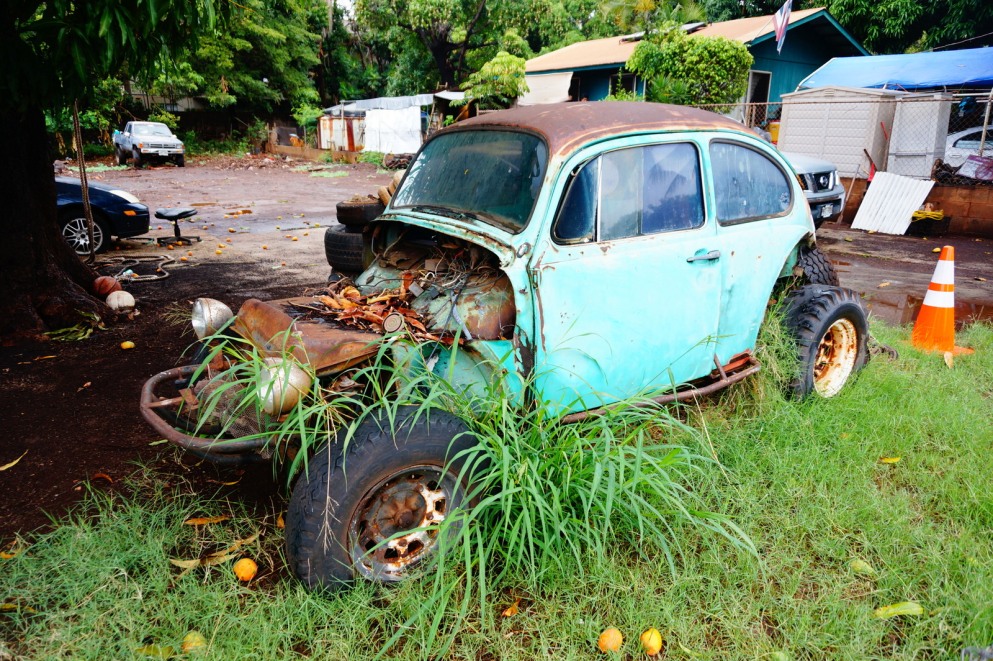
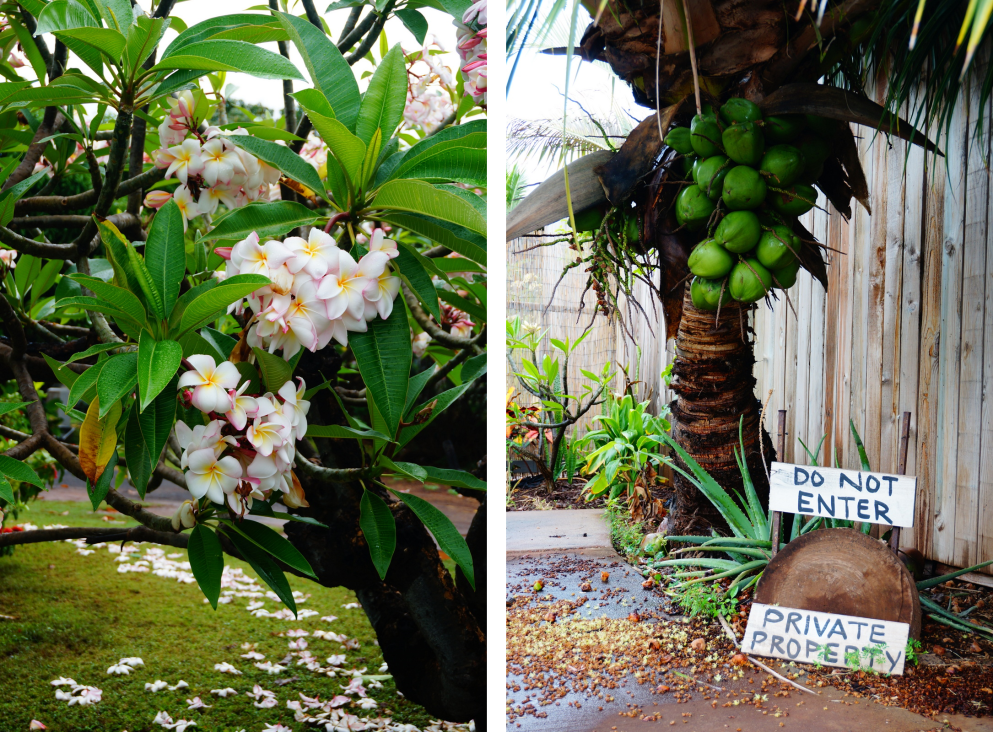
Naturally, we could not miss the 144 years old majestetic banyan tree, largest of its kind in Hawai’i. If you had the patience for it, you could queue up behind the Korean and Japanese families to have your picture taken in funny poses hinting at the impossibility of your hugging any one of the 16 tree trunks belonging to the same tree. The banyan tree is partially the eponym of the Lahaina Banyan Court Park on which it flourishes. Due to the town being the capital of the Hawai’in Kingdom in the 19th century, Lahaina is home to quite a few historic sites, though you would have to pay special attention to find them as they tend to be overshadowed by other more lively tourist attractions.
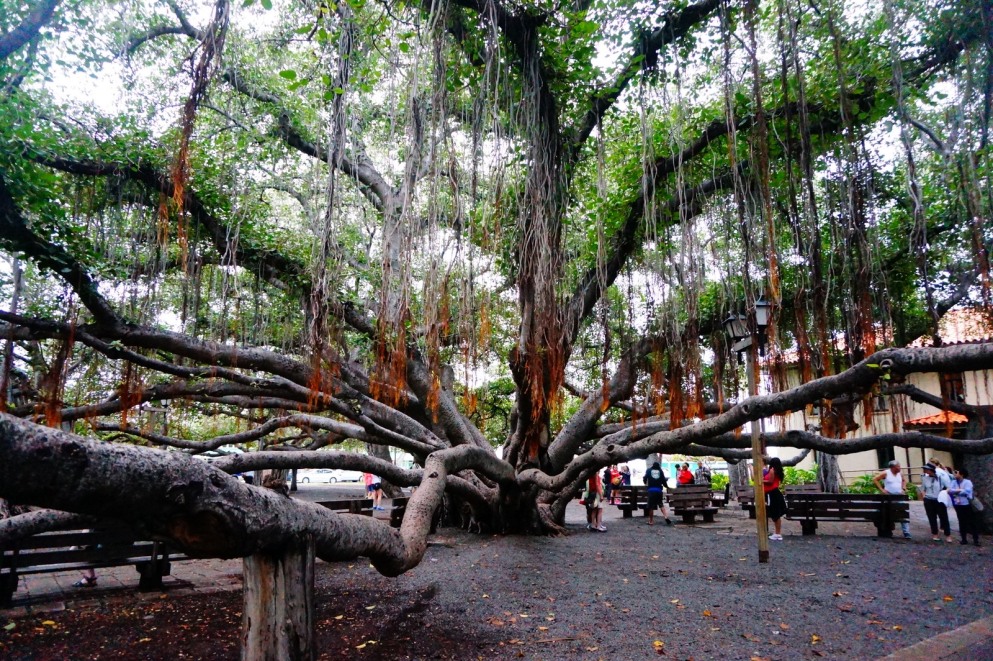
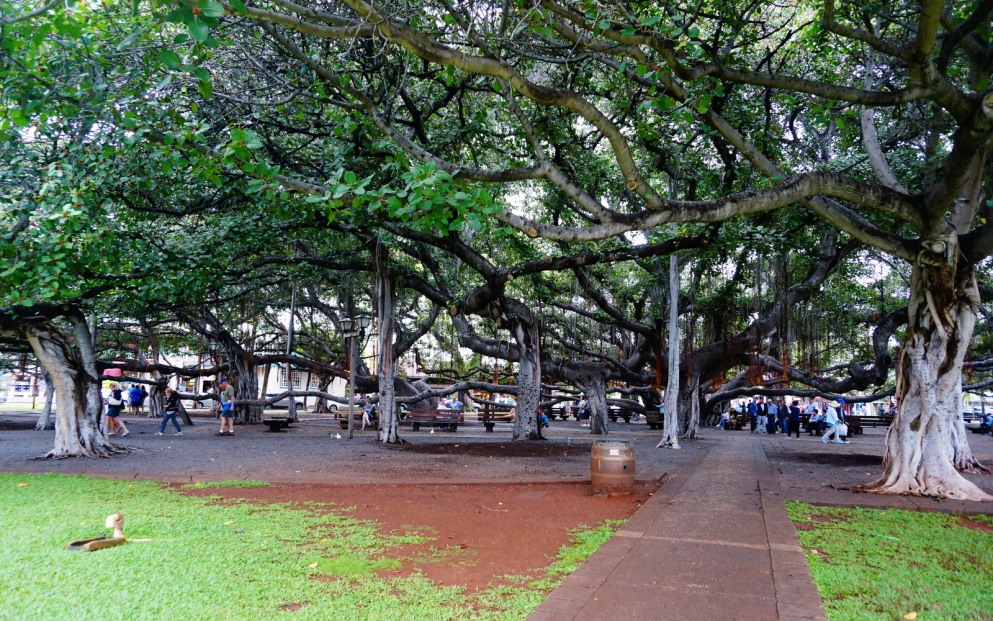
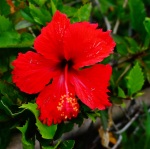
Back at the hostel around sunset, I stuffed my luggage in the shuttle service. The rain had finally completely stopped. Sitting in the passenger seat, I noticed the clouds clearing in the sky behind Haleakala. Patches of grey clouds let through a palette of orange and purple. Mahalo, aloha.
I visited Hawai’i in 2017. For other parts on Hawai’i click here.
Climbing the World’s Tallest Volcano on the Island of Hawai’i
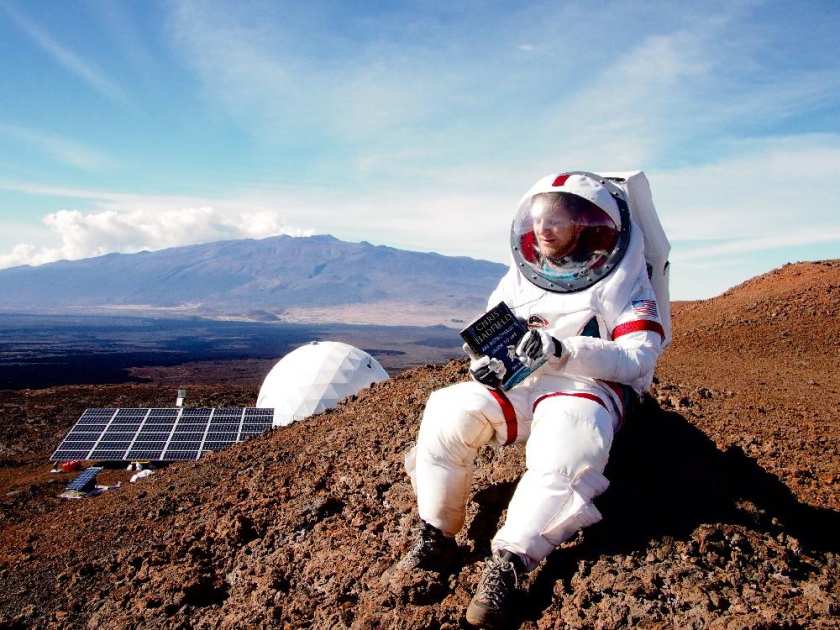
This photograph, which looks either photoshopped or straight out of a Hollywood production, is in fact neither and was taken outside the Hawai’i Space Exploration Analog and Simulation (HI-SEAS) Habitat situated on Mauna Loa (“Long Mountain”) on the Island of Hawai’i (also known as the Big Island). This location’s Mars-like geology was selected to emulate long duration (extraterrestrial) missions. “The Martian regolith […] is very similar to the weathered basaltic materials found in this part of Hawaii.” In the background of this photograph, the summit of the dormant volcano Mauna Kea (“White Mountain”) is visible.
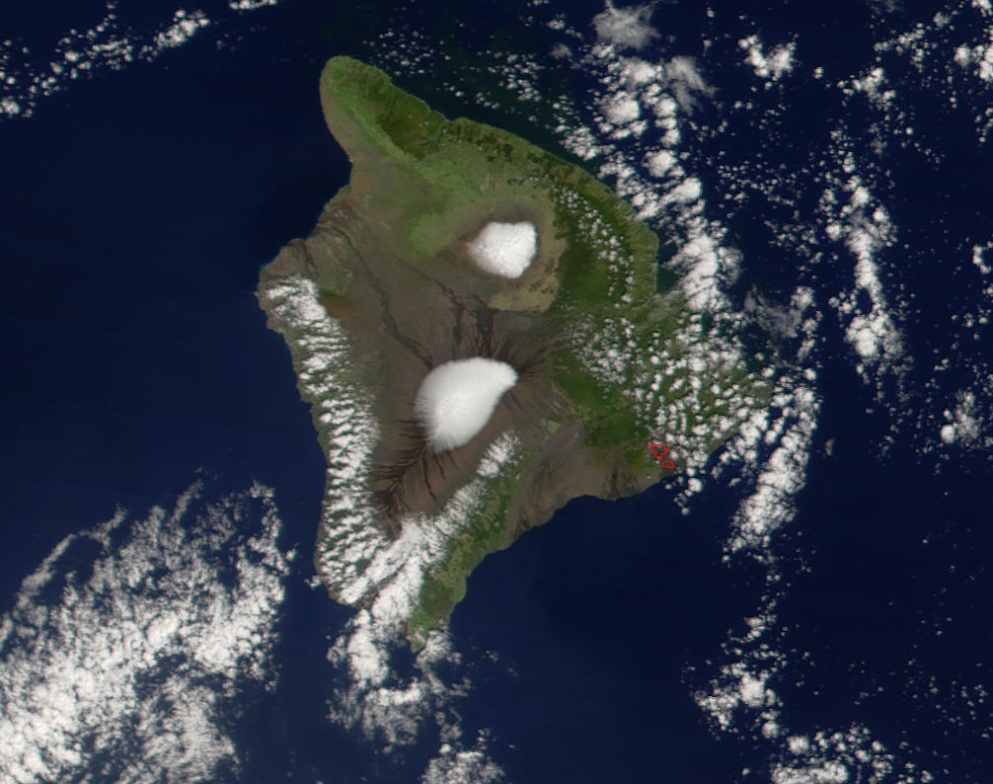
Mauna Kea and Mauna Loa are quite the eye-catchers even from afar in outer space. While Mauna Loa is the location of HI-SEAS, an abundance of scientific activity is happening on the summit of Mauna Kea, too. Situated at an altitude of 4,205 meters (13,796 ft) above sea level, the Mauna Kea summit is at above 40 percent of the Earth’s atmosphere. Furthermore, the air is extremely dry, the atmospheric condition exceptionally stable, and the light pollution scarce, establishing excellent conditions for astronomical stargazing. To quote the Institute of Astronomy, “there are currently thirteen working telescopes near the summit of Mauna Kea. Nine of them are for optical and infrared astronomy, three of them are for submillimeter wavelength astronomy and one is for radio astronomy.”.

According to geology.com and the Institute of Astronomy of the University of Hawaii, the summit of Mauna Kea rises 9,750 m (32,000 ft) above sea floor, which makes it not only the tallest volcano but also the tallest mountain on earth! (Mount Everest is the mountain at the highest altitude above sea level.)
The summit, sacred to the Native Hawaiins, also holds its own significance in the eyes of the scientists. It is a gateway to the past and the future to both groups of people. And for us, a group mainly consisting of physics and engineering students, it just made sense to venture on a hike that led to the eye and the ear of the Earth into the everything and nothing out there.
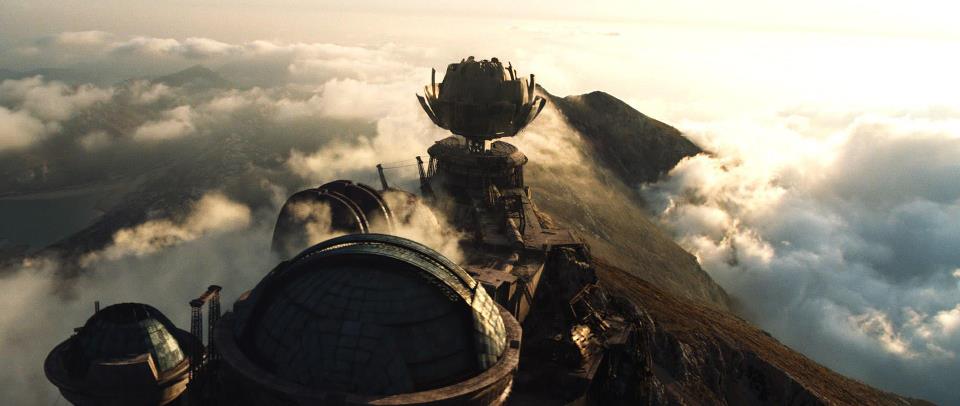
Our group of seven consisted of six moderately to highly athletic people with varying degree of athletic ambition and motivation… and me. Gym class was my worst subject at school. I have always been slower, clumsier and less durable than my peer. We were presented with three options on how to manage the distance between the Visitor Center at 2,800 m (9,200 ft) accessible by car and the summit at 4,205 meters (13,796 ft) above sea level:
- Option 1: Rent a four wheel drive (only allowed type of vehicle from the Visitor Center upwards due to high requirement on brakes). (We had already rented a car that did not satisfy that criterion.)
- Option 2: Book a > 150 $ tour. (We are PhD students, so youth is all we got, and money is not.)
- Option 3: Hiking. (We are PhD students, so youth is all we got, and youth presumably comes with strong legs and tight butt cheeks.)
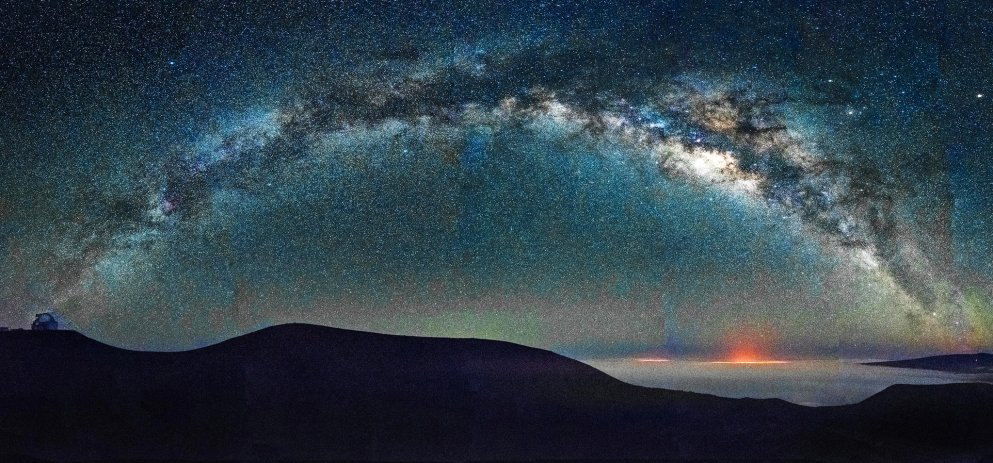
According to the official website, the hike takes 8 hours roundtrip for experienced hikers. From the Visitor Center to the summit a distance of 10 km (6 miles) has to be covered, while gaining an elevation of 1,400 m (4,600 ft). The average slope is, I calculated, 14%.
Initially I was sceptical whether this kind of quest was anything I would challenge myself with. The trail was rated with the highest degree of difficulty by all consulted sources. An altitude gain of 1400 m was double the amount of what I climb on Sunday afternoons in the hills near my town. Additionally, the thin atmosphere was not a hiking condition that I was experienced with. Before the trip, my friends and I talked over our doubts and agreed on only venturing the climb if weather and health condition were met. Also, in case of altitude sickness, a person would not be left to set out alone, whether downhill or eastward to the road.

After days of weather monitoring by the hour we decided that weather condition was above average optimal and stuck to our ascent plan. Sunny weather was predicted to dominate until noon. From that point on, clouds would amass quickly and bring snow to the summit and both hail and rain to the land at lower altitudes. This meant that in order to not be caught in bad weather, which would further increase the complications of the hike, we absolutely had to get to the summit swiftly in 5,5 hours of time. It was either being fast enough to manage the hike within the safe time range or abandoning it midway to avoid possibly running into the danger arisen from a combination of bad weather and (in that case probably even more so) less than ideal physical condition.
We considered this plan to be reasonable since it roughly matched the suggested average roundtrip time of 8 hours. For descents are usually less time-consuming, we would still have time to take a break at the summit, tour the only telescope that is open to public, and then be back at the Visitor Center a few hours before sunset.


We got up at 3 am, left the accommodation at 4 am and arrived at the Visitor Center at 5:30 am. The high altitude combined with the fact that the sun has not yet risen meant that we had breakfast in freezing winds while being covered in layers and layers of insolating outdoor gear from head to toe. We took our time acclimatising and set off at 6:30 am. Each of us wore hiking shoes, long pants, long sleeves and light jackets. We had fully charged phones equipped with GPS, an elevation map, at least 4 litres of water each, snacks, and aspirin for headache. After breakfast, we registered at the letter box of the Visitor Center so that people would look for us in case we were stuck on the trail for some reason.
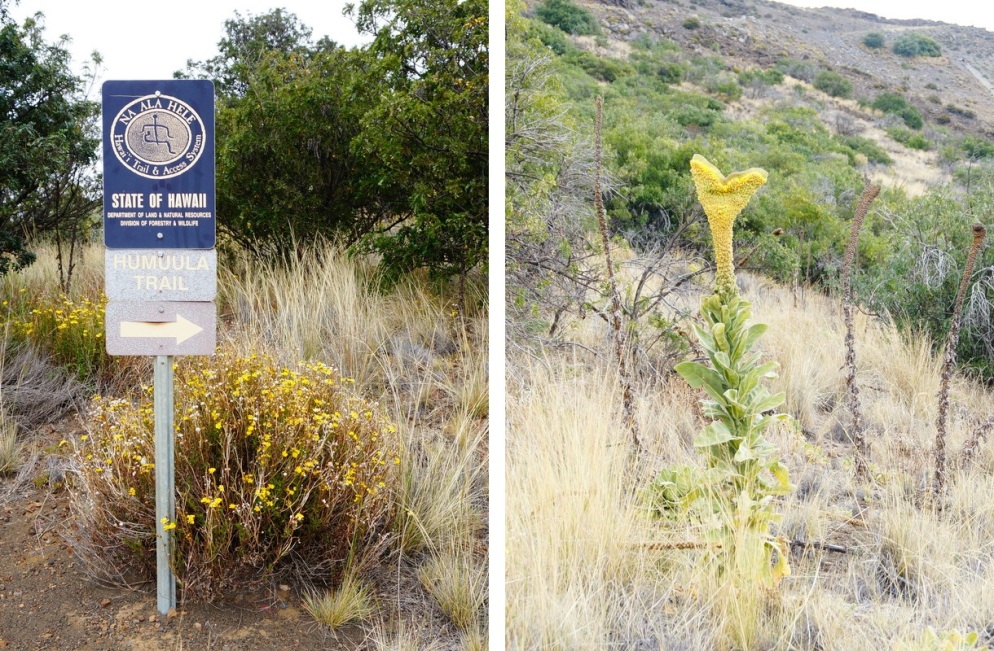
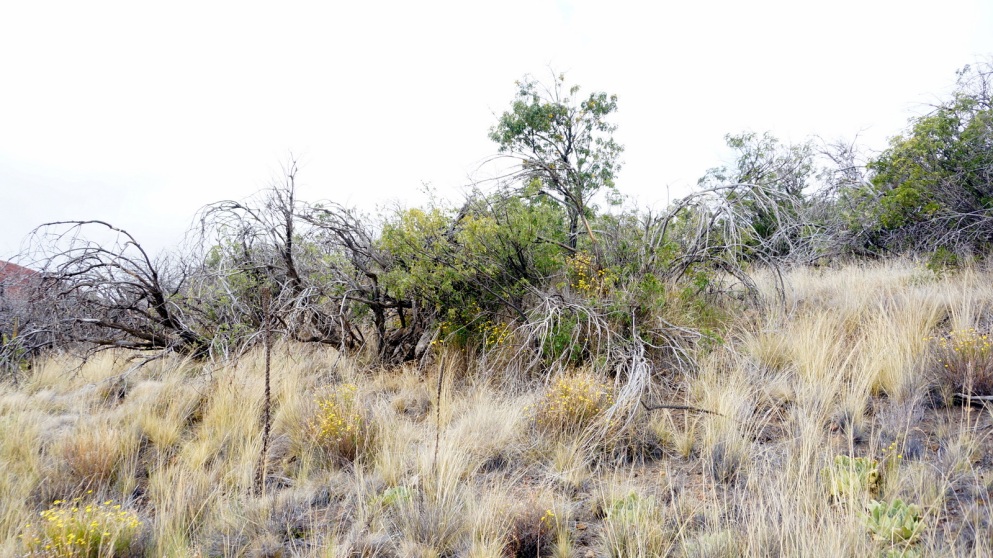
We split into two groups. The faster group had higher athletic ambitions and on average superior physical conditions. The slower group took the ascent with a more laid-back attitude and set the goal to climb as high as one can without overexerting oneself. I felt more tired than I should have at the very first step of the ascent. This was probably attributed the three factors. One, I had arrived in Hawai’i only four days earlier, and even though I did not feel jetlagged, the 24 hours of travel had probably been a toll on the body. Two, the previous two days had been weaved with hiking and (short) biking tours (the latter of which I had not done since the sixth grade) which led to some pre-programmed muscle tiredness. Three, I had slept 4 horus the night before, certainly not a whole lot to be bursting with energy.
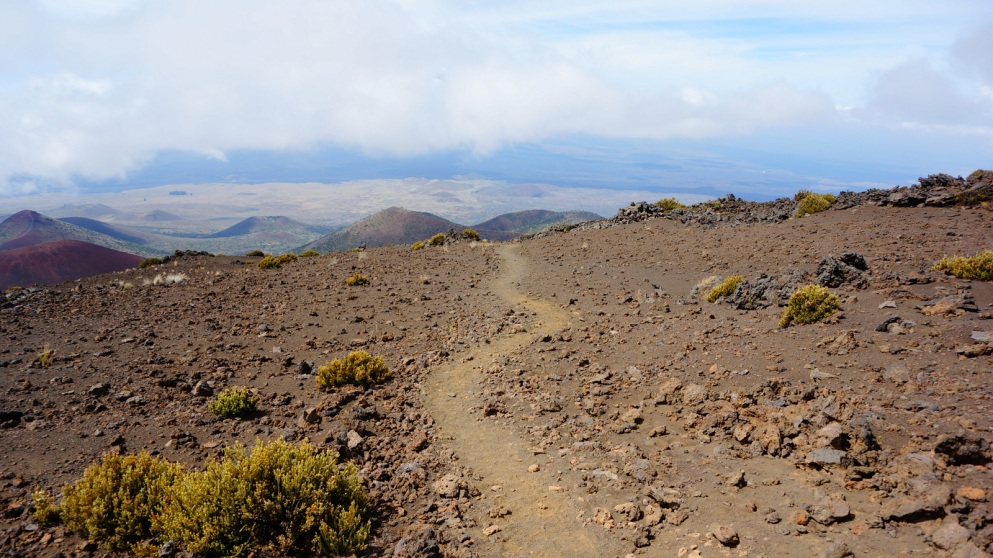
Soon after we had started the ascent the Hawaiin sun was blasting with such power that in combination with the physical efforts, clothes started to get soaked by perspiration. The air was chilly nevertheless, so that staying put resulted in the body to quickly cool down. Sunscreen was replenished and generously smeared on the face, the neck, the ears and the back of the hands. The cool wind was a wilfully deceptive magician that tricks you into thinking that you cannot get sunburned if your skin does not feel hot.
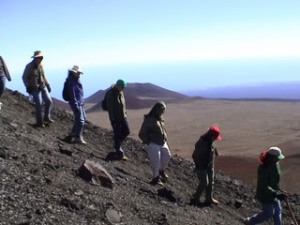
The soil beneath our feet consisted mostly of fine, loose rocks. One step up meant sliding half a step down. At times the sandy texture of the trail was so fine that it felt like climbing up a cruel sandbox for masochistic adults. Hiking uphill on sand made an elevation gain, which elsewise would not have posed any problem, an extremely strenous task. Standing still so that muscles could catch a short break was no use since it was so steep that the muscles were tightened regardless. Benches were, of course, not provided by mother nature, and the few rocks that were of the appropriate size to serve as seats were either far off the track or often of such unforgivingly spiky nature that one resorted to doing a quick, involuntary squat when trying to rest on one of them.

After roughly an hour Mauna Loa started to accompany us. We had a clear view on its summit during the early hours of the morning. The view to our back was spectacular. The lower section of Mauna Loa was enclosed by a veil of mist and water vapour. Several cone-shaped hills between Mauna Loa and Mauna Kea were of manifold intense discolourations. Even in a landscape as desolete as this volcano life still found its way to thrive. As we climbed uphill, the vegetation changed rapidly. Trees were substituted by bushes, scrubs and weeds.
The initial two hours of climb was largely demanding due to the steepness and the loose texture of the soil. Both factors made the elevation gain feel much more strenous than it would have been in the case of solid ground. The weight of the water bottles on the back and the more restrictive long clothes (in comparison to shorts and t shirts) did not make things easier.

Often, one could not see past the small hill on which one was walking. After having finally reached the top of one hill only meant stepping onto another hill, which stretched in front to an seemingly unattainable point, hidden from sight. Muscles became permanently fatigued and were in desperate need for a proper break. Some muscles in the hip area were complaining insistantly, for the fact that they had never been used this intensely before. My two companions both had more stamina and they waited for me a lot more frequently than I would have found comfortable. Clouds quielty enclosed the volcano around us, which reminded us that time and weather were running a race against us.

After roughly a third of the elevation gain and three hours of time since the start, I estimated that I only had enough energy to climb another third of the trail. After that, effects of the thin atmosphere would presumably really start to kick in, making the last third practically impossible to bring about. Additionally, reaching the top was not even the end of the hike. One needed to have enough stamina to climb all the way down while being fully concentrated so as not to slip and fall. The steepness did not facilitate a relaxing descent either. Leg muscles, though of another group, had to constantly be on braking mode so that one would not roll down the volcano like tumbleweeds. With my current speed, I would reach the summit by 3pm, earliest, which leaves me little time to climb down, and you definitely would not want to be stuck on a volcano in darkness that was fairly similar to its adjacent friend Mauna Loa, which served as a training ground emulating Martian environment for good reasons.
Even if I reached the summit earlier than that, I would not be in good shape, and nobody should be burdened with carrying me in case I twisted an ankle or felt abysmal 500 m before the finishing line due to altitude sickness. Furthermore, the other two would be faster without me, and judging by the current time and elevation gain, they still had a reasonable chance to reach the summit early enough to dodge the worst of the weather conditions during ascent.
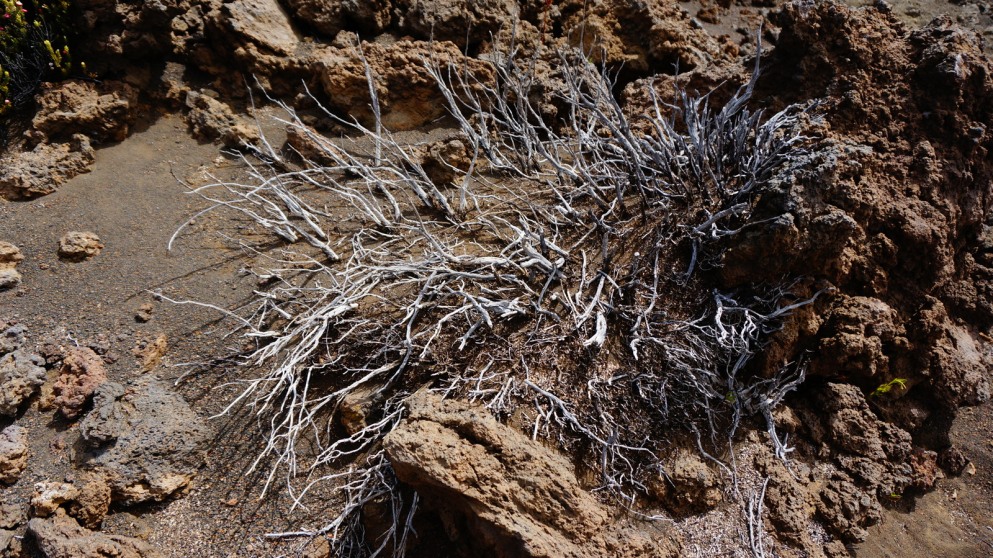
After two rounds of discussion, I persuaded my companions to keep on climbing without me. It took quite a bit of effort, since they felt that it was irresponsible to let me go downhill by myself. Up until that point, we had not encountered a single other hiker on the entire trail, so if I accidentally hurt myself, I would be alone to get myself out of a dire situation. They reluctantly agreed to it as I was feeling well and otherwise fit enough to hike down on my own. I promised to text them every hour to report on my whereabouts.
After a longer break, I started the descent at a cautious pace and took time to have a closer look at the surrounding, which I had had no energy to focus on earlier. At the relatively leisurely speed, it took me 2 1/2 hours to return to the Visitor Center. It would still probably had taken me 2 hours even if I skipped taking photos. More often than not, I would unintentionally slide in the sand due to the steepness. It needs not always be wet for it to be slippery!
Hiking down alone was an eerie experience. There was no-freaking-body in my vicinity. I could see far and wide from where I stood and I was completely exposed to the sun light without any vegetation to hide me from sight, yet not a single person could see me. I could squat down to do a number two for half and hour right in the middle of the trail without any fear of being spotted by passerbys (still not recommended though for obvious reasons).
I could not help but feeling small and insignificant despite (or exactly because of) standing above the clouds and on top of a volcano that had created itself out of nothing starting one million years ago. It was one of the exceedingly rare occasions for a human in the mordern world to find themself physically isolated from other people. The sound of the shoes sinking into the sliding sands was the only thing that kept me company, while the clouds silently reached their arms to embrace this extraordinary landscape of closely intertwined patches of dark grey, ochre yellow and burgundy red basalt.

Finally, half way down at around 11am, I met two hikers with whom I had a little chat. One of them asked me if I was just coming down from the summit, to which I almost replied “Ha ha, good one.”
When I arrived at the car, the clouds have fully engulfed the volcanoes on either side. Aside from ours, there was only one car at the parking lot, which, I assumed, belonged to the other two women I ran into. Only a total of 9 people ventured on this hike that day (can hardly see why).
I slid onto the backseat and slept like a baby, until one girl from the faster group knocked on the car window at 1 pm. We went to the Visitor Center to have coffee and cup noodles and later met the rest of us. The fast group reached the summit after 6 hours of climbing. To set things in perspective: two of the people from the fast group were training to run a half-marathon in June, one girl had been learning Kungfu for nine years and rode a bike up the volcano Haleakalā on Maui three days later (don’t even get me started on that), and one girl was a former track and field athlete. Even these four, who are among the most athletic people in the category “non-professional hikers”, took 6 hours to get up there. The suggested 8 hours falls on the surprisingly speedy end of the total hiking time spectrum for the roundtrip. Taking necessary toilet and food breaks into account, you would need 10 hours in total if you had superb fitness. And 10 hours are much closer to the daily sunlight hours of 12 hours, leaving even less room for complications.

A few hundred meters before reaching the summit, where other visitors who drove up there could be found, the girl who later woke me in the car became overwhelmed by dizziness and nausea due to altitude sickness. At the summit, she found strangers who quickly drove her down by car. The road was very steep and curvy and the car tires smelt baldy due to overheating during the braking process. This did not make things easier when you are trying not to throw up.
The two friends who started the hike with me were close enough to the summit to see the observatories from afar when they saw the three others from the fast group coming downhill. They decided that they had gone up far enough, so the six of them hitchhiked down as well. Even though they all came down by car, one should not count on that possibility; therefore one should always ensure having enough energy to manage the hike down oneself in any case.
I am still quite proud of myself for trying despite not having reached the summit. Going uphill for 6 hours straight was exhausting for the others as well. I gave my best shot. It was better to be reasonable and safe than sorry. Overall, it was a worthy experience on a hike unlike any other and as close to the Moon or the Mars as you can get.
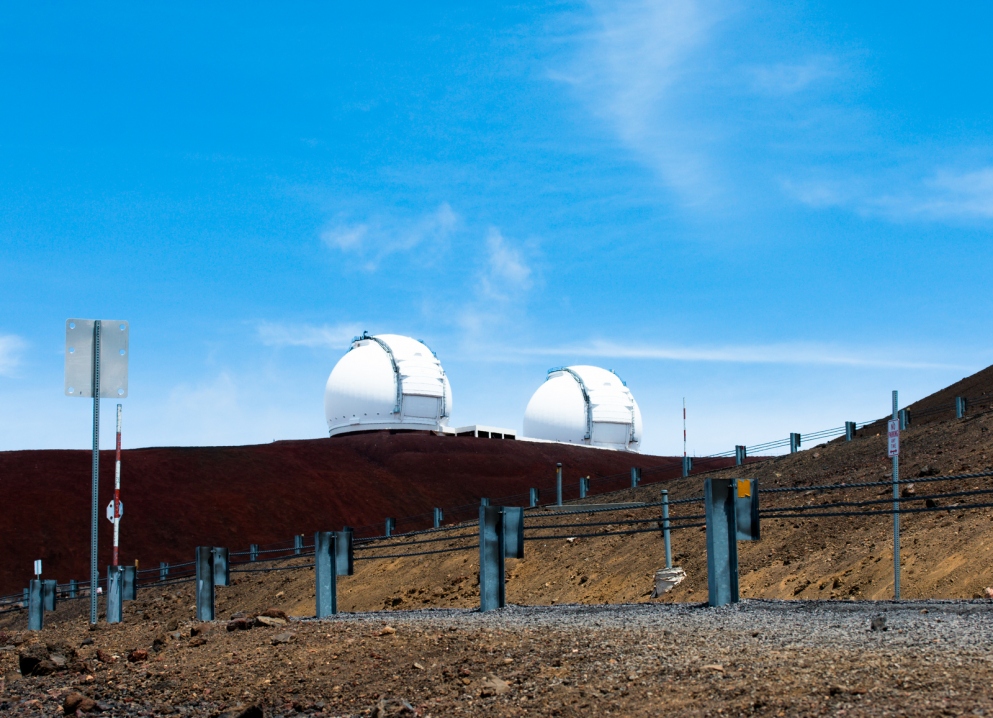
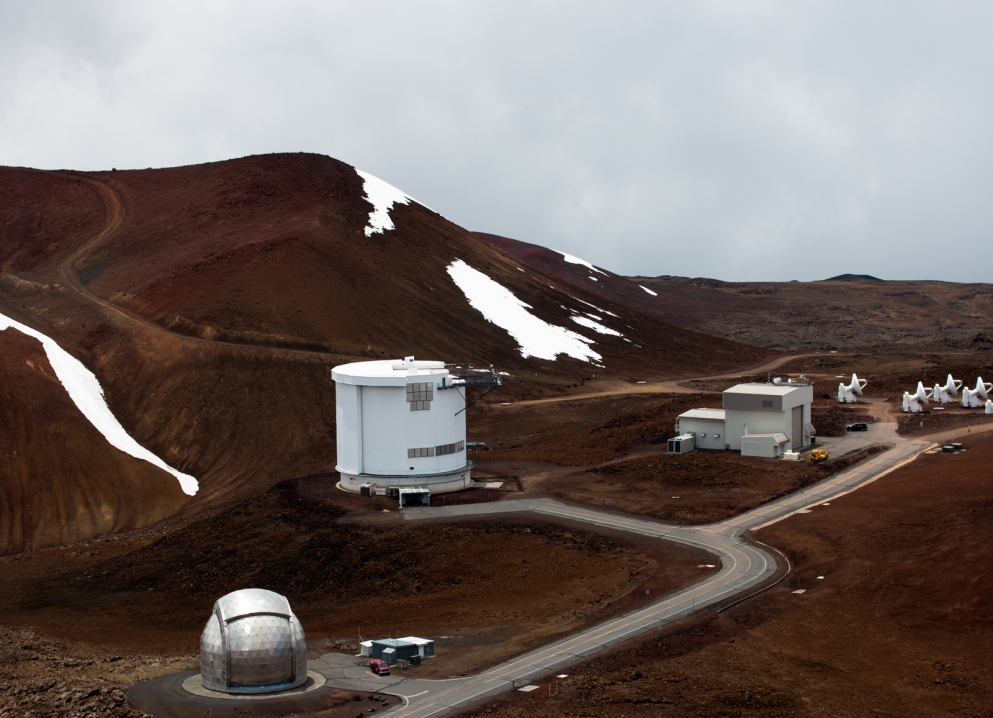
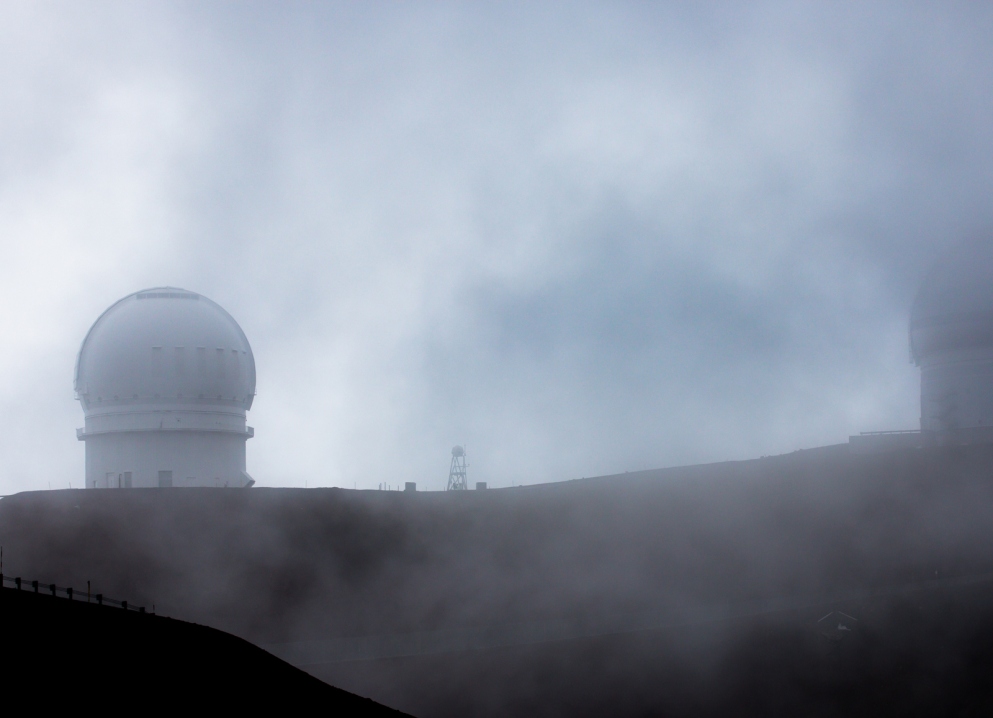
I visited Hawai’i in 2017. For other parts on Hawai’i click here.
Hawai’i: Teaser Gallery
The proper question to ask about Hawai’i is not what kind of fun you can have there; the proper question to ask is what kind of fun you cannot have there. And the answer is: no kind.
Now that I got your brain twisted, let me get that knot out of the way and have you tell me what you see when you think of Hawai’i? Does your mental image include heavenly beaches with surfers riding waves, colourful shirts with flower print and Hula girls with skin resembling milk chocolate?
The good news is that Hawai’i is exactly as exciting as you have always imagined it to be. The even better news is that there is so much more to discover besides the stereotypes. But the bad news is that it is near impossible to even come close to experience everything that the Hawaiin Archipelago has to offer, unless you book a one-way ticket. The unbelievable abundance of activities gave me a serious inner struggle while trying to select a satisfying series of photos to put on the teaser gallery that did not include a gazilion pictures.
Why don’t we dip into turquoise water and start our journey by spending the day at the beach sunbathing or surfing?


Got yourself a sunburn or still tired and bruised from your first surfing attempts? Turn 180° and head off to the mountains right at your doors and go hiking. You can choose among well-worn paths crossed by tree roots on the geologically older terrain and demanding hikes up the volvanoes with rapidly altering flora and fauna as you pass through clouds and mists.
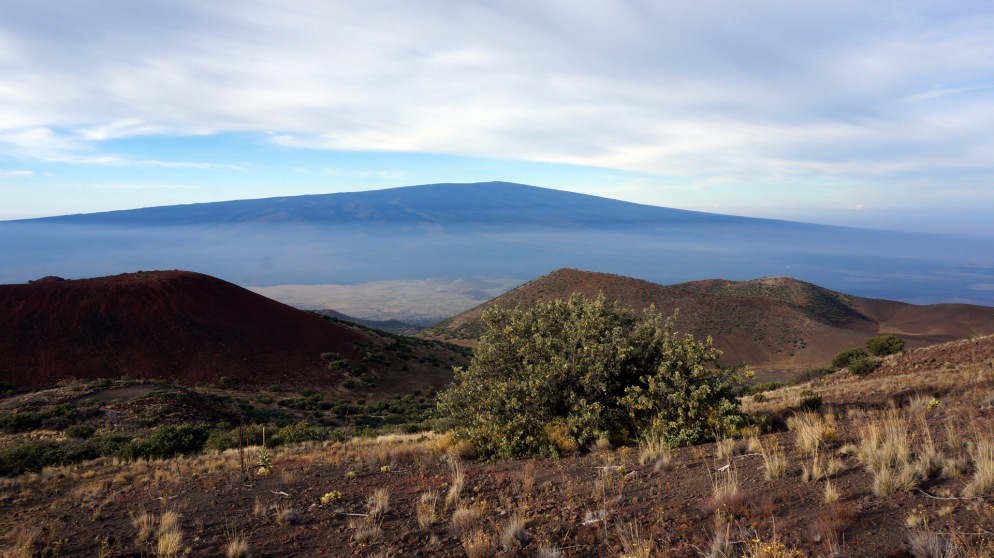
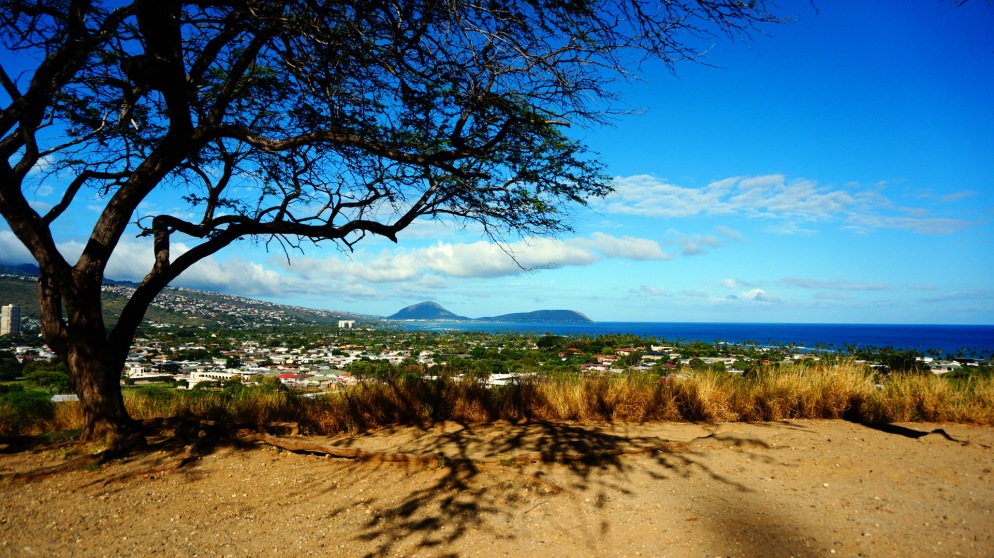
Legs still sore from hiking on martian terrain with sliding sands and sub-zero degree winds? Jump right into tropical rainforests with lush greenery und bizarre looking plants straight out of Jurassic Park!
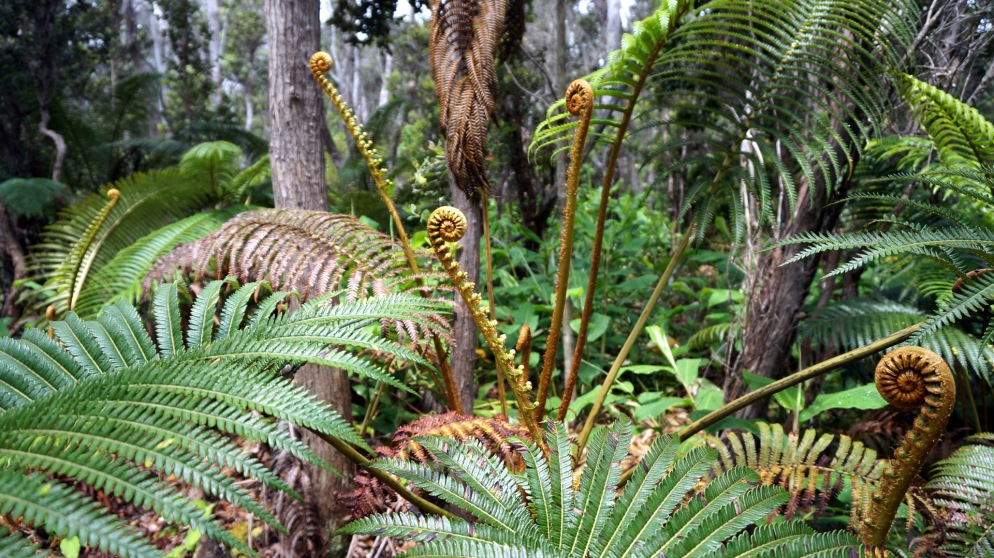

Soaked by perspiration and constant drizzle while hiking along bamboo forests and keen on a live show on the ever-changing mother earth? Step on the smooth pāhoehoe lava which stretches beyond the horizon and makes you wonder how magnificent it must have looked when it was still glowingly hot. Gawk at the loose and rubbly ʻaʻā lava and contemplate what chemical compositions gifted the volcanic rocks their distinctive brilliance and whether, in reality, the lava is just loose earth scattered from God’s garden.

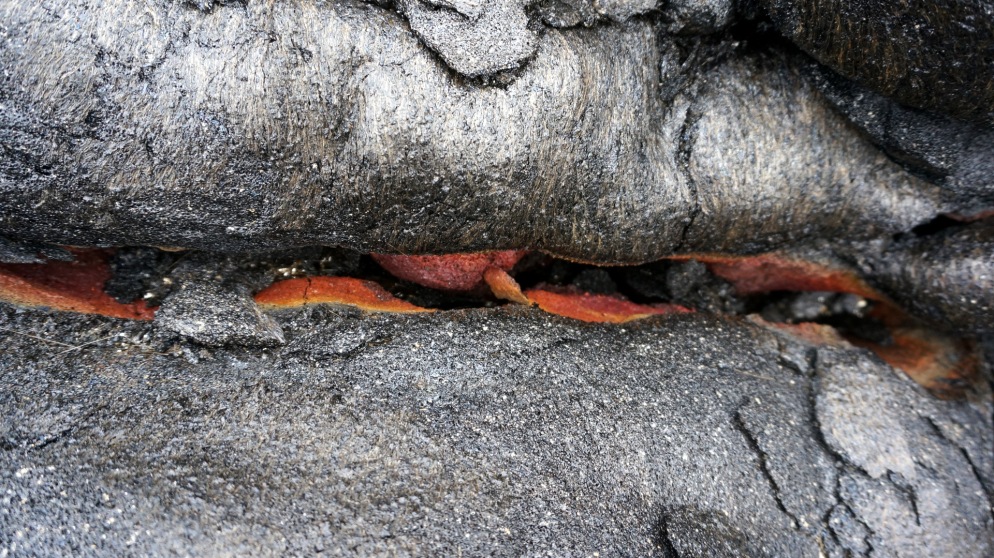
Having learned enough about lava rock formation? Enjoy the view from the summits and crater rims, refresh yourself afterwards by soaking in the ocean and snorkeling with plenty of brightly coloured tropical fish and, if you are lucky, nonchalant sea turtles. Those who look for unusual adventures can take a helicopter ride, go whale watching or dive with manta rays under the cover of moonlight (pre-requisite: $$$).
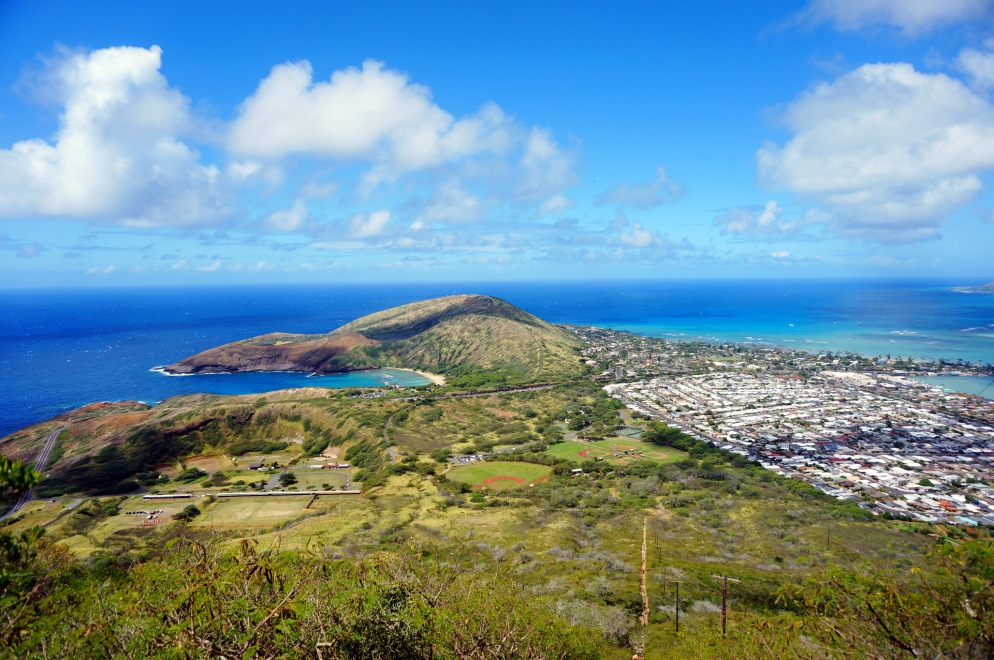
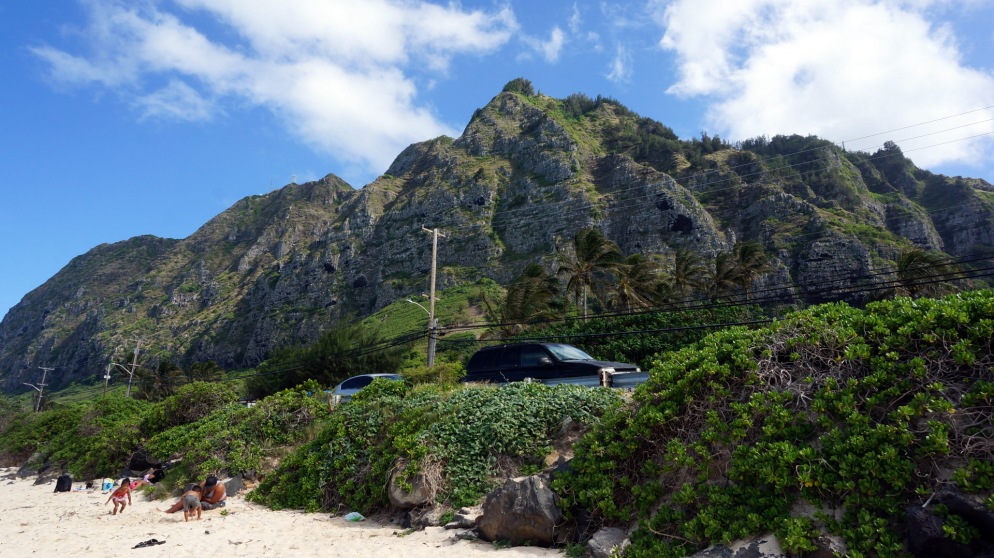
Interested in a glimpse into local life? Take a sharp turn from any touristic path and let the authentically decorated porches and the ripe mangoes, bananas and papayas guide you.

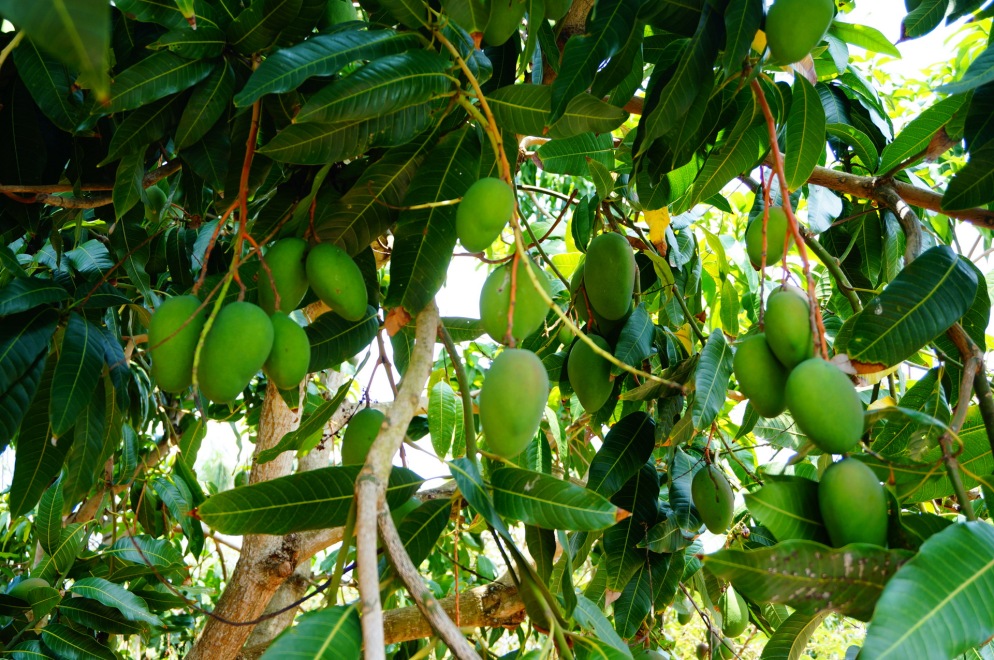
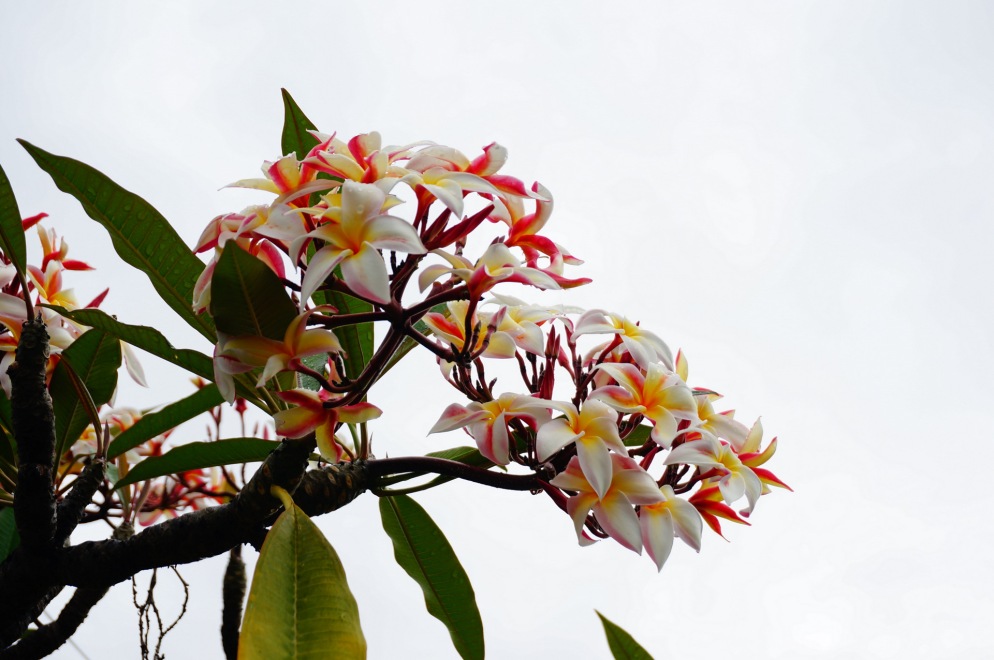
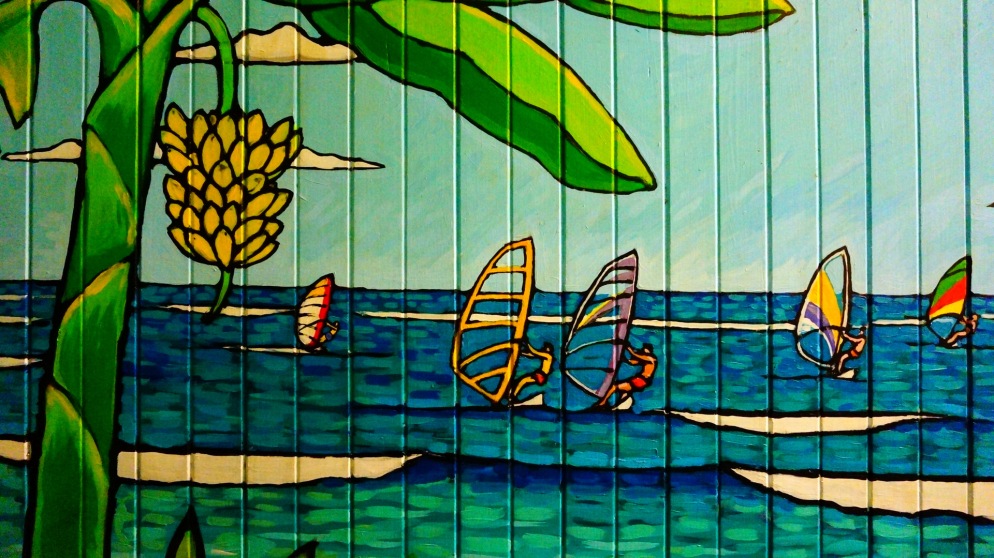
And at the end of the day, if you get lonely, courteous and laid-back locals are always there to keep you company, whether you are in the windward countryside or on the sunny Waikiki Beach, ready to end the day with a cold beer and ocean breeze while enjoying your view on downtown Honolulu.
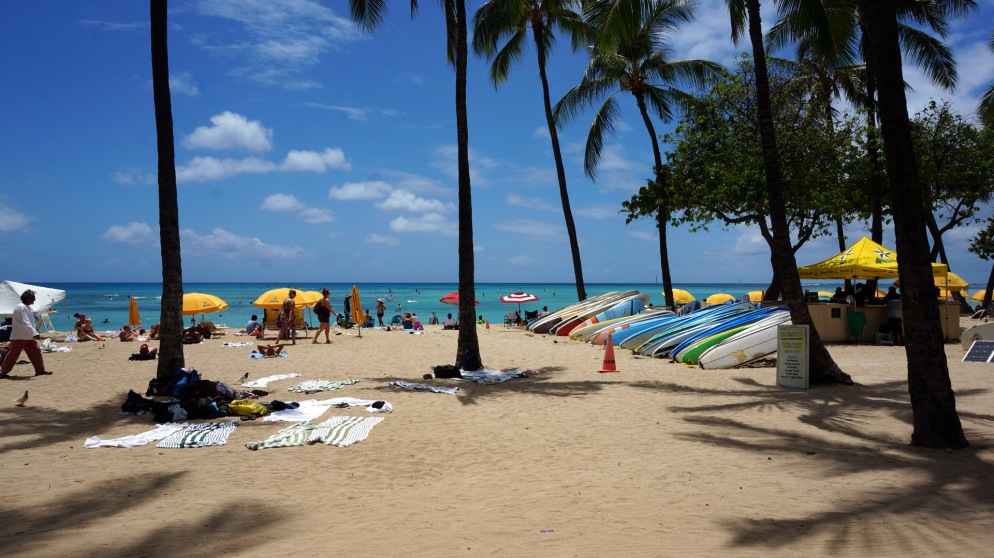
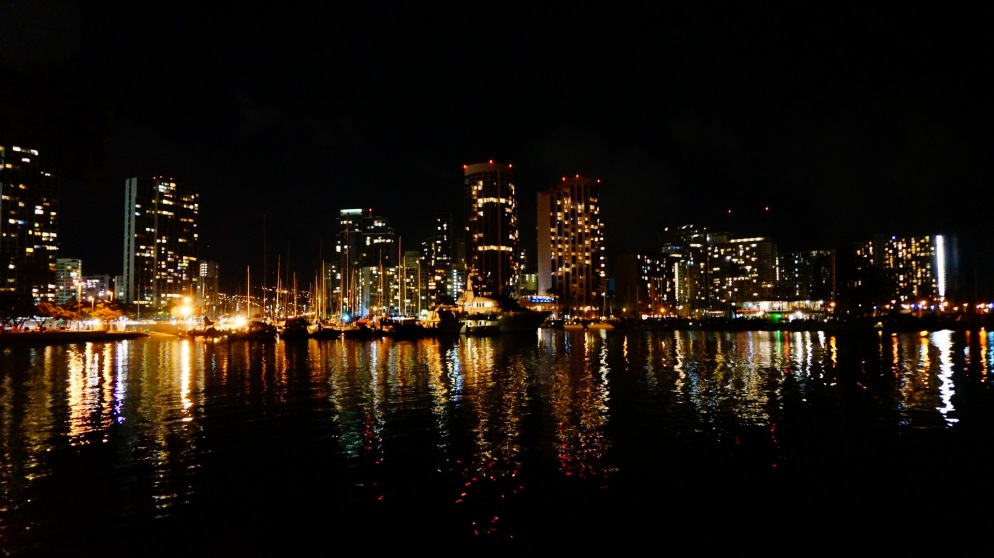
I visited Hawai’i in 2017. For other parts on Hawai’i click here.
Have you put grocery items in an MRI?
Well, I have 🙂 Let us play a little game: try to guess what you are seeing! The answers are listed in the bottom. Each column of image contains three views of the same object: axial (top), sagittal (middle), coronal (bottom). Each image is 60 mm x 60 mm. (Not sure what an MRI scanner does? Wiki Note that the physical principle of MRI is fundamentally different than that of CT/X-ray.)
1
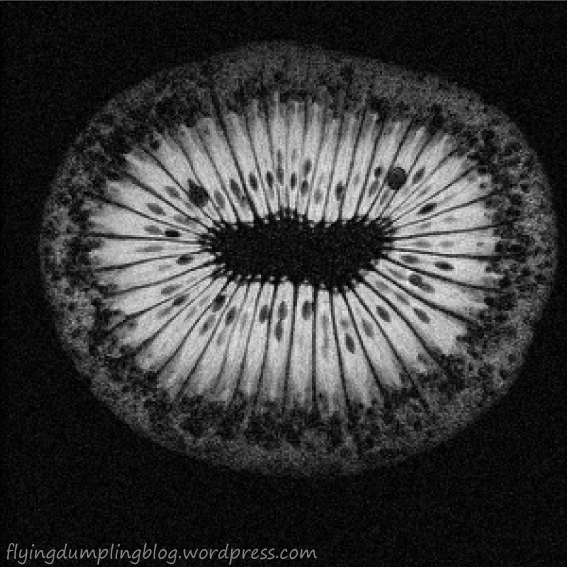

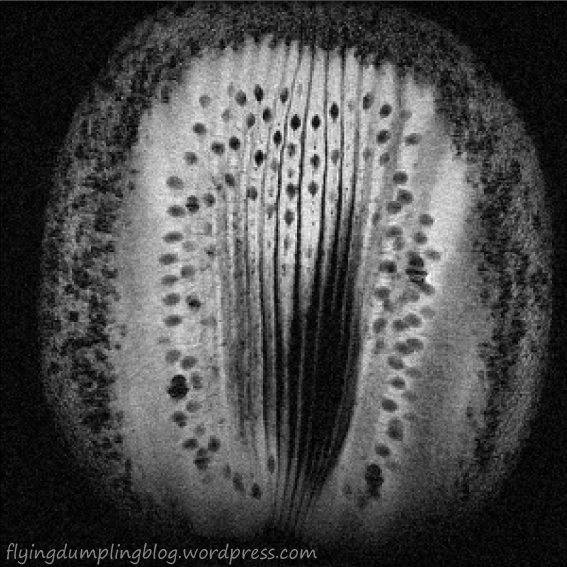
2
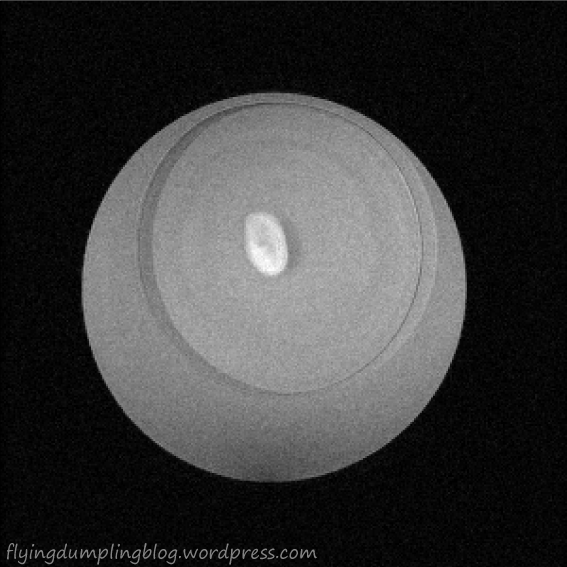
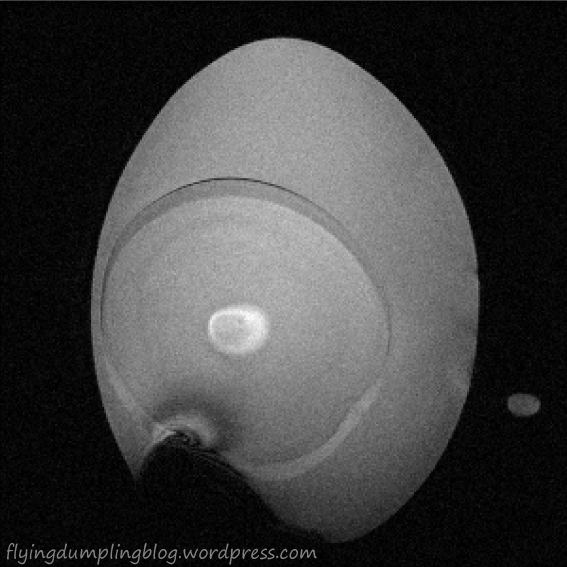

3
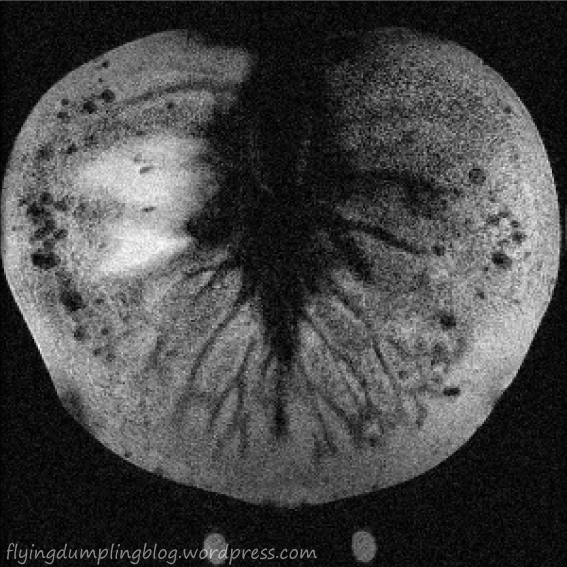
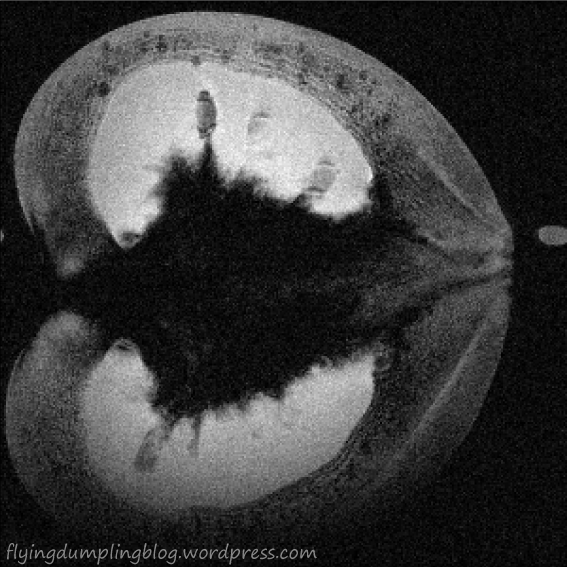
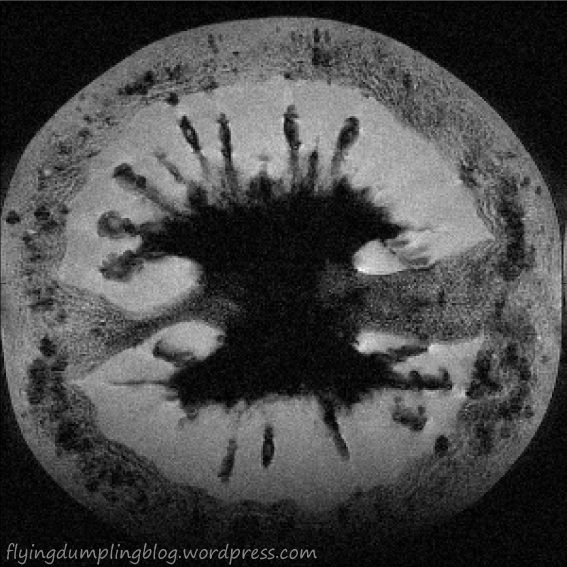
4
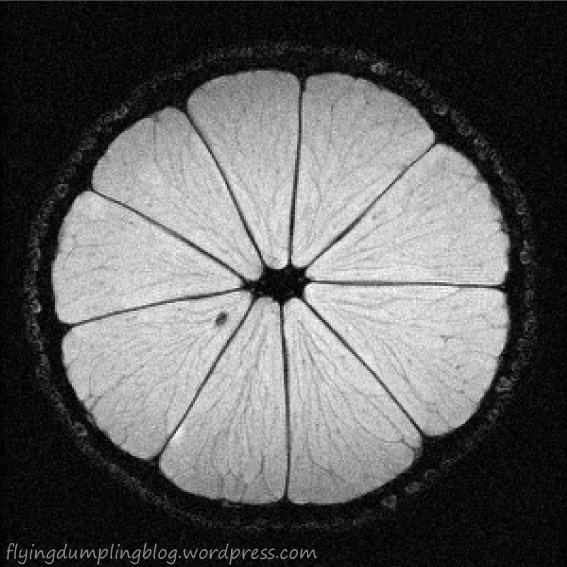

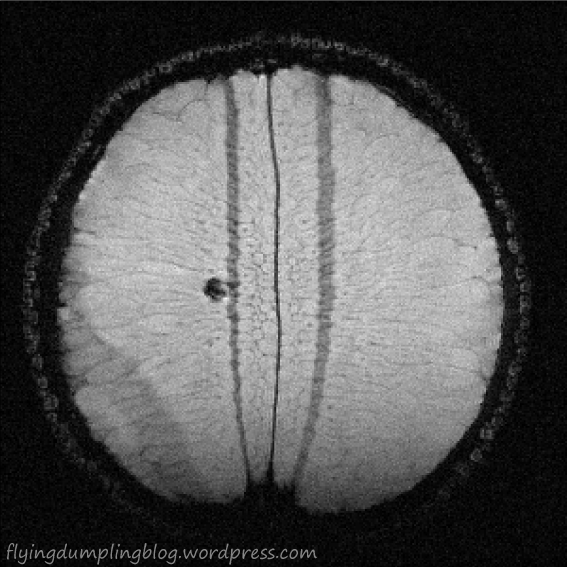
5
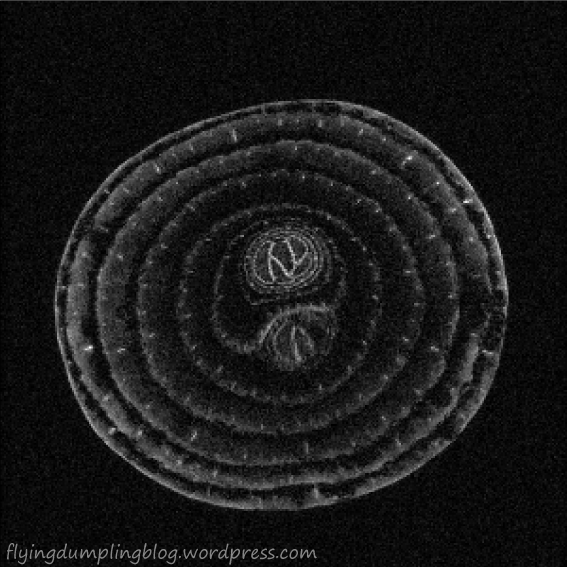
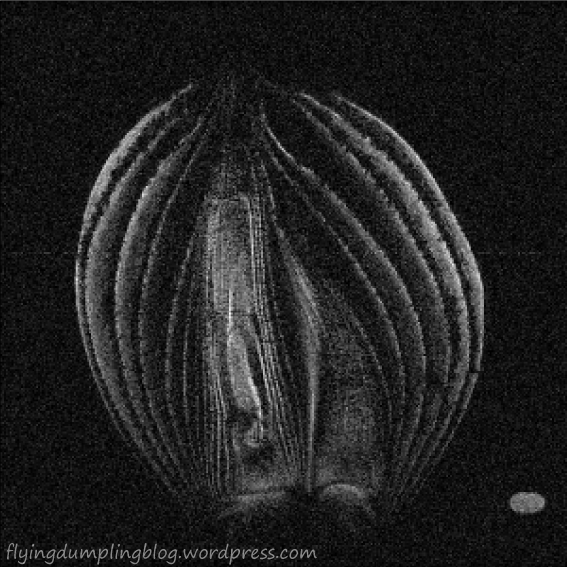

Answer sheet

- kiwi
- egg
- tomato
- lime
- onion
I would like to hear about your score! Do you have something that you want to investigate using an MRI? Put your suggestions in the comment section below and I will try to do as you wish! 🙂
Conditions:
- Items must not contain (ferromagnetic) metals.
- If an item contains water (air and solids are not visible), then it must be less than 70 mm wide in two dimensions. Baguette-like objects will fit; giant pomegranates will not.
- If an item does not contain water, then it must be small enough to fit in a water-filled tube with a radius of 30 mm and a length of 60 mm (reversed contrast).
Brief remark: I have not yet developed superpowers after eating these objects above.
Scenic Trails in Heidelberg
Off the beaten track of the breathtaking historic old town of Heidelberg, footsteps of locals mark the winding steps and paths through the forest on the hills enclosing the city on both sides like a pair of protecting hands. Hidden behind moss-covered stone walls and neatly trimmed hedges are buildings resembling miniature castles and houses with playfully decorated porches and embroided white curtains behind wooden window frames.
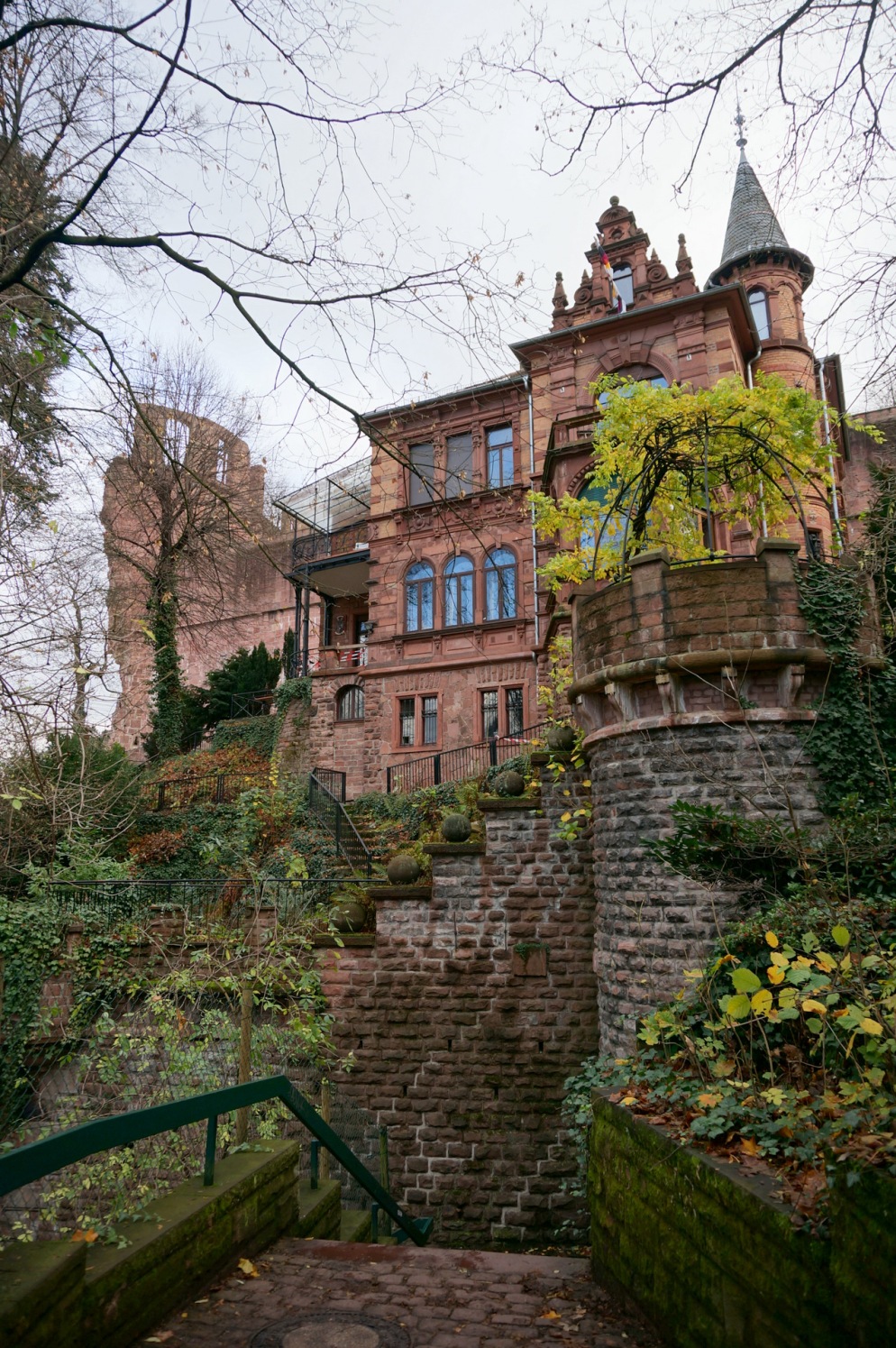
Every season offers an unparallel atmosphere. In spring, vibrant yellow flowers of young forsythia shrubs are found in every corner, pastel pink cherry blossoms are seen surrounding buildings along the river, and plump magnolia flowers in the trees resemble juicy peaches more than anything else. In summer, the forest has once again regained its luscious green leaves. The days are long and the nights are short, just like they were when we were children and eager to grow up. In autumn, leaves on the trees in the lower section of the hills turn their colour into a soft crimson, while pine trees retain their usual nonchalant composure, ready to be stroked by frosty flakes in the coming winter months.
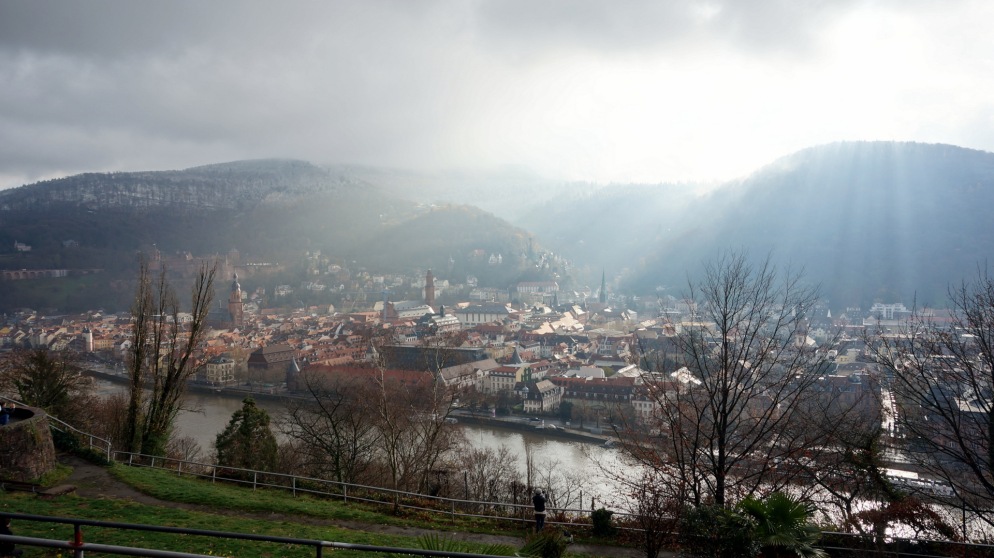
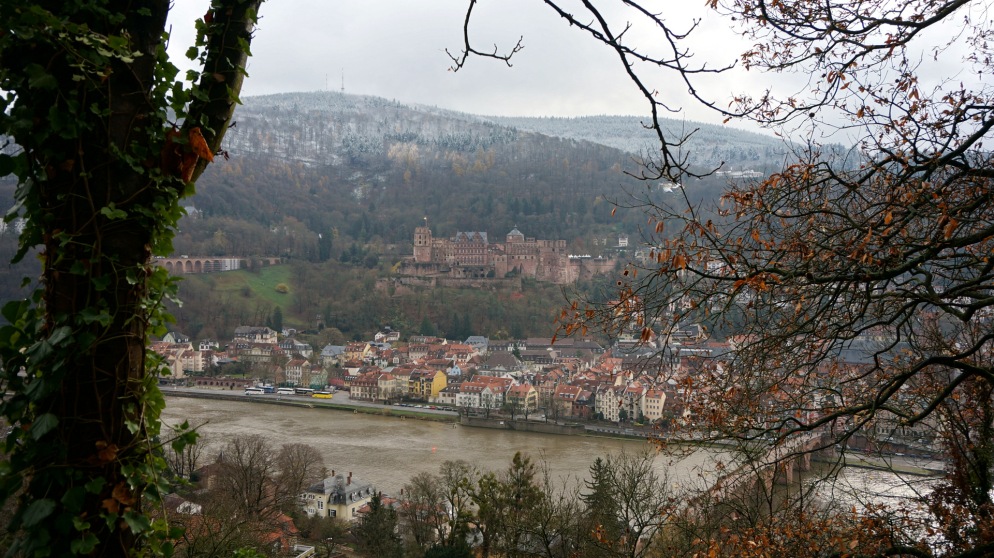
The Philosophenweg Trail runs parallel to the river Neckar on the north shore and offers a unique view over the old town. The Heidelberger Schloss sits at approximately the same height as the trail on the opposite side of Neckar. Whilst walking, the castle plays hide and seek: at times it stays hidden behind the bushes and trees next to the path, and then suddenly, as if out of nowhere, it appears in all its 800 years’ of glory.
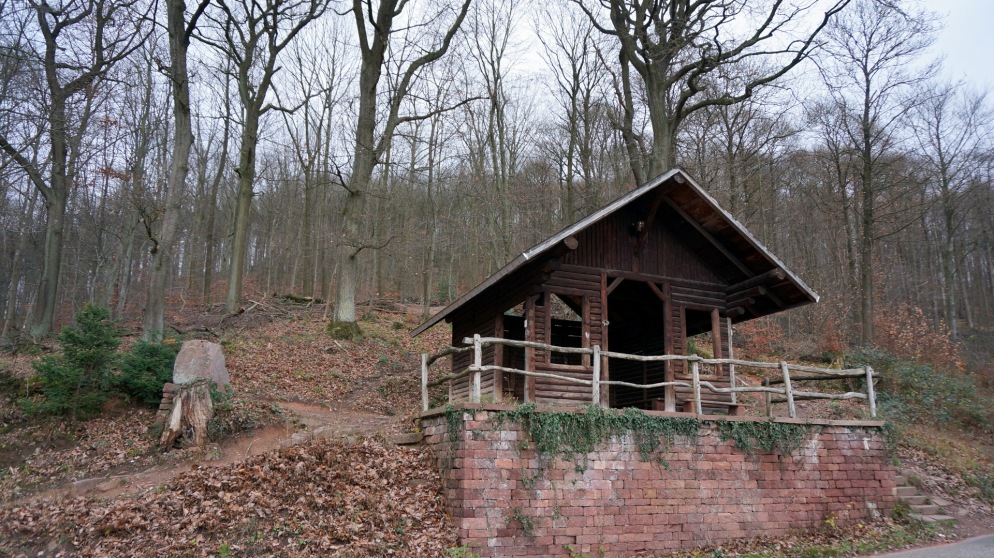
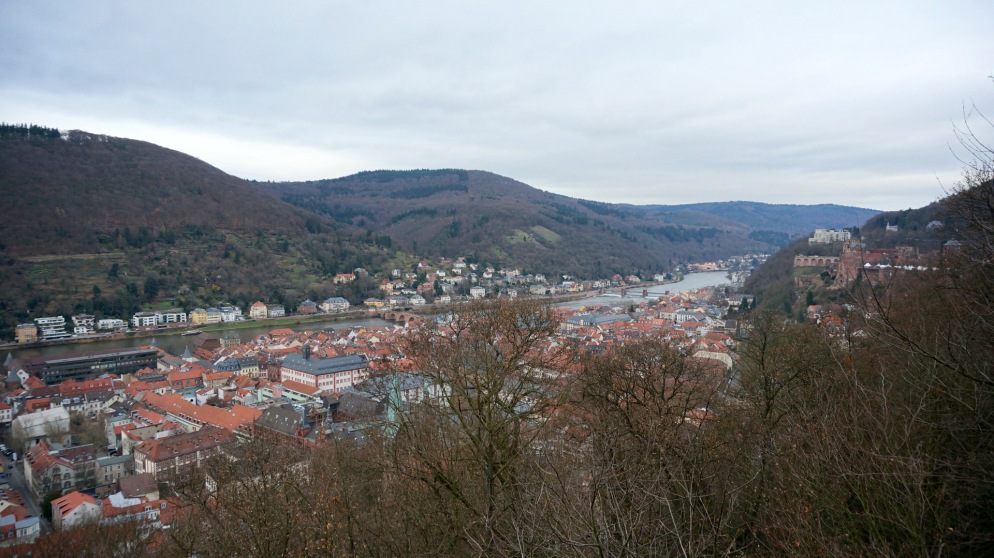
The Königstuhl Trail is on the same side of the river as the old town and leads to the highest point in the vicinity of Heidelberg. From the lookout at Königstuhl, neighbouring towns in the Rhine-Neckar region can also be seen in the distance. It leads into the mountain and away from city noises. The most beautiful part is the final ascent on stone slabs, passing by moss-covered rocks.
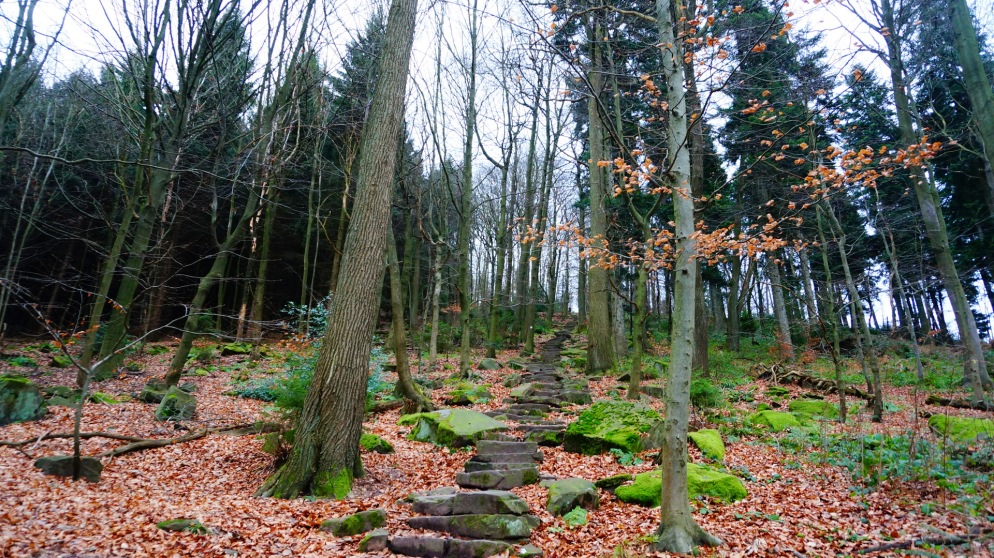
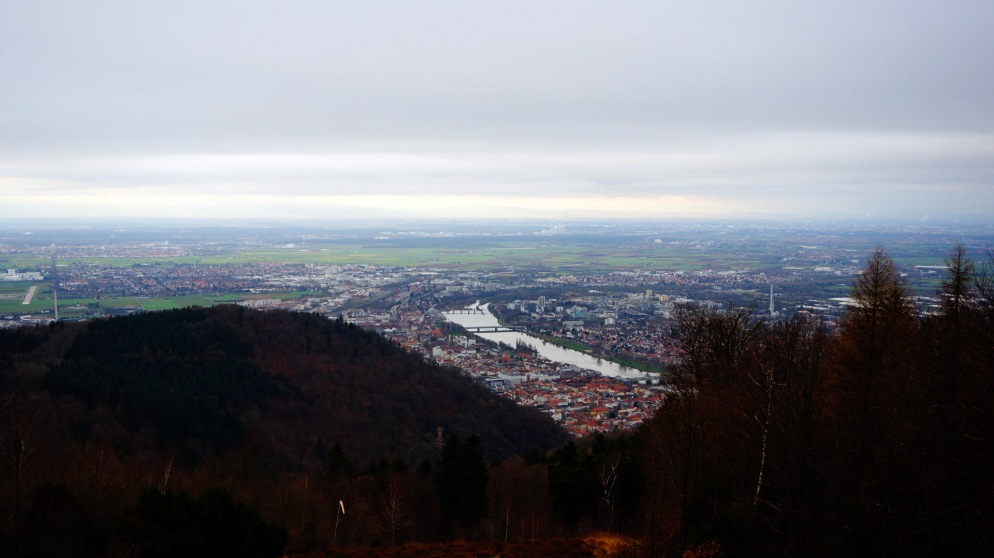
The Heidelberger Schloss Trail is more of a stair climbing route than a trail and leads up to the castle. Feeling the tightness in your chest, you wonder why people chose to build their home up so high, but then you become distracted by the picturesque view and wish that you lived there as well.
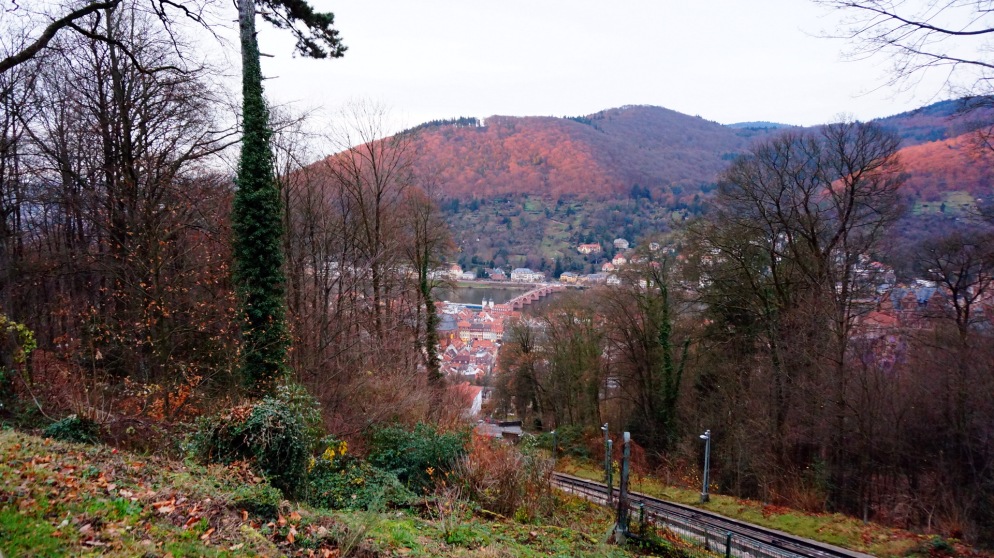
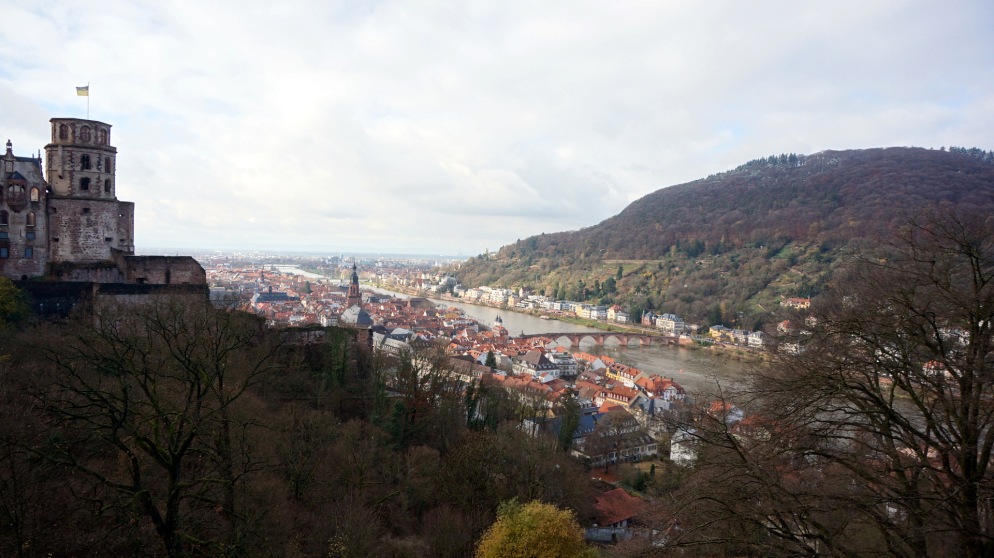
How to access:
- Philosophenweg Trail: Start at 1 (Bismarkplatz) and cross the river at 2 (Theodor-Heuss-Brücke). Find the starting point of the street Philosophenweg at 3 and proceed to climb up. Continue on the Philosophenweg until it is intersected by the path Schlangenweg at 4. Take the stairs down to reach the bridge at 5 (Alte Brücke). Total walking time from 1 to 5: 45 min.
- Königstuhl Trail: Start at 1 (Bismarkplatz) and head off to 6. In the area around 6, you will find many ways leading up to the mountain. From there you can take whatever route you want to reach 7. For those wishing to be speedy, take stairs; other can stick to paths of steady ascent. There are also designated paths for mountain bikers, so be careful not to take those! After about half of the trail you will start finding signs telling you which way Königstuhl is. Total walking time from 1 to 7: 90 min.
- Heidelberger Schloss Trail: When you are in the vicinity of 8 (“Kornmarkt“), you will find brown signs saying “Schloss“. The most common routes are via “Kurzer Buckel” and “Burgweg“. Total walking time to reach the castle: 15 min.

Good to know:
- Use GPS to navigate, especially for the Königstuhl Trail.
- The Philosophenweg Trail and the Heidelberger Schloss Trail can be done in consecutive order.
- After having reached Königstuhl, you can either go down the same path, or you can follow the sign “Schloss” to go down another road to reach the castle. Pre-marking of this part of the path is recommended, as the crossing to the castle can easily be missed.
- The Heidelberger Bergbahn runs between station “Kornmarkt” and station “Königstuhl“, connecting the old town with 7 and 8. One- and two-way tickets are available.
Singapore: Lasting Impressions
I spent more than two weeks in Singapore, so in the end I got fairly accustomed to staying there (which made it all the more difficult to leave). To close up the Singapore series here are some lasting impressions and uncategorised thoughts on things that may elude the radar of tourists.
Underground air conditioned bunker system
Say, you are in Singapore, and you just cannot adjust to the climate fast enough, but you still wish to get around the city and soak in some Asian flair. No problem at all! You can spend all day by navigating through the underground air conditioned (I call it) bunker system without sniffing more than two puffs of overground air. If your accommodation happens to be near a metro station, just dive underground right away. Most MRT stations in city centre are connected to nearby shopping centres and tourist attractions by underground walkways. These walkways are the opposite of what underground tunnels near train stations might be associated with in other parts of the world (as in being nasty places misused as a toilet and for drug dealing). They feel like the extended arms of the shopping mall they connect to, and are just as clean as the streets above. You can take your time browsing through the variety of shops or grab a bite at the restaurants and eateries. In fact, during the particularly hot hours of the day, there seem to be more people underground than overground.

To be fined or not to be fined
One of the first questions I popped was whether the fine system was as rigorous as it is rumored to be. So my cousin recounted two stories.
One time she was waiting at the traffic light for pedestrians in a residential area and crossed the red light due to absent-mindedness (do not try this at home), where the sidewalk-to-sidewalk distance was about 3 cars wide. An undercover police officer came out of nowhere and issued her a fine of a few hundred Singaporean Dollars (SGD). Nevertheless, I oberseved many people crossing the street at red light especially in downtown areas. I have, however, not seen anybody getting caught.
Another time my cousin was with her mother in the metro, and as her mother is not a regular Singaporean resident, she forgot about the non-drinking rule and took a sip of water. After some time, a conductor came by and told them that he had observed this behaviour via the surveillance camera. Since my aunt was an elderly person and it was only water, they only received a warning.
My suggestion is to be on the safe side and respect the local rules and customs. Also, do not go spraying graffiti on trains.

A dab on social issues
My stay in Singapore was too short and my research done on this matter way too insufficient to properly cover such an multi-facetted topic in a satisfactory manner. Still, I want to address some aspects of life that are faced by people who are trying to make a living in Singapore.
Cities or countries, including Singapore, that lie on the higher end of the wealth and prosperity gradient hold promises of high payment and plentitude of opportunities for personal development, therefore inevitably attract labour forces from the countryside or neighbouring countires that lie on the lower end of the wealth and prosperity gradient. In such cases, locals are also less keen on taking up manual labour jobs, which in turn will be filled by a seemingly endless supply of cheap workers. The poorer, or the more desperate a person is (e.g. urgent hospital payment for elderly mother), the more likely he will put up with bad working conditions or fall victim to general mistreatment. Construction sites that I had come across seem to employ exclusively dark-skinned (I assume) Indians or Bangladeshi. Often they receive only a project-based contract and are housed in designated dormitories. I cannot even walk around a park for too long without feeling overheated, let alone building Marina Bay Sands and the like in dazzling height and blazing heat. For us passerbys, I feel it is important to keep in mind on whose shoulders the city was built when wandering around these modern, illuminated streets.
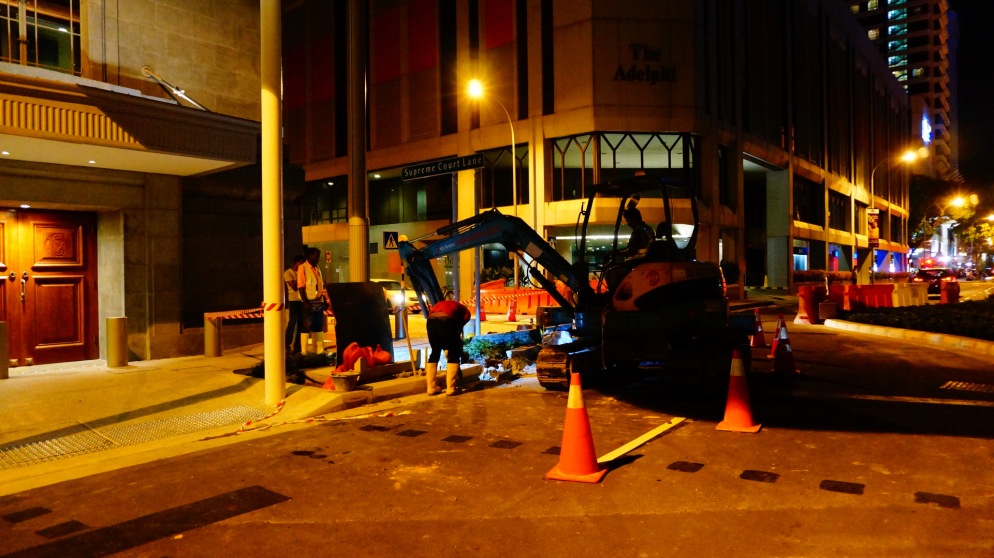
Hotel or hostel room prices are often also a reflection of the costs of living for locals (so we got a taste of that). In a country with such limited space, housing prices make up an unsually high percentage of the monthly spending. Students or, in many cases, young workers who are not housed in dormitories cannot afford an apartment that also serves as a personal space. In the suburban region, a bunk bed sleeping place in a four-bed room with a ceiling fan, a shared bathroom and no kitchen usage costs 200-220 SGD per month; a one person bedroom with air conditioning (inside an apartment with many other tenants) costs 600 SGD per month.
Another issue that had been confirmed by acquaintances and my cousin was that some Singaporeans with a Chinese ethnic background, even though they might be second-generation immigrants themselves, to some extent do not endorse especially the new Chinese immigrants. They feel that the newcomers lack manners or disregard local customs. This sentence is applicable to any society with a policy of immigration (just exchange ‘Chinese’ with other words). As cheesy as it may sound, to fix any kind of bad relationships involving two parties, communication and understanding while extending a hand to shake are the key.
City planning
What mesmerized me, and I do consider this criterion a real sign of sophistication, was how every aspect of the city was deliberately planned. You can almost sense the destiny of every brick and every tree. It was straightforward to navigate through the city on foot and by public transport; signs are in- and outside buildings wherever you look. Frankly, you have to be heavily drunk to feel disoriented at any point in Singapore – and that is coming from me, who never knows whether to turn left or right when leaving a shop she has entered a minute ago.
Many efforts are undertaken to create a city that combines a neat outward appearance with practicality. The residential district in wich my cousin lives, for instance, repaints the building every seven years and lets the residents choose the colour. This way, the usual rust stains on outer walls and other traces of an aging building are eliminated nicely.
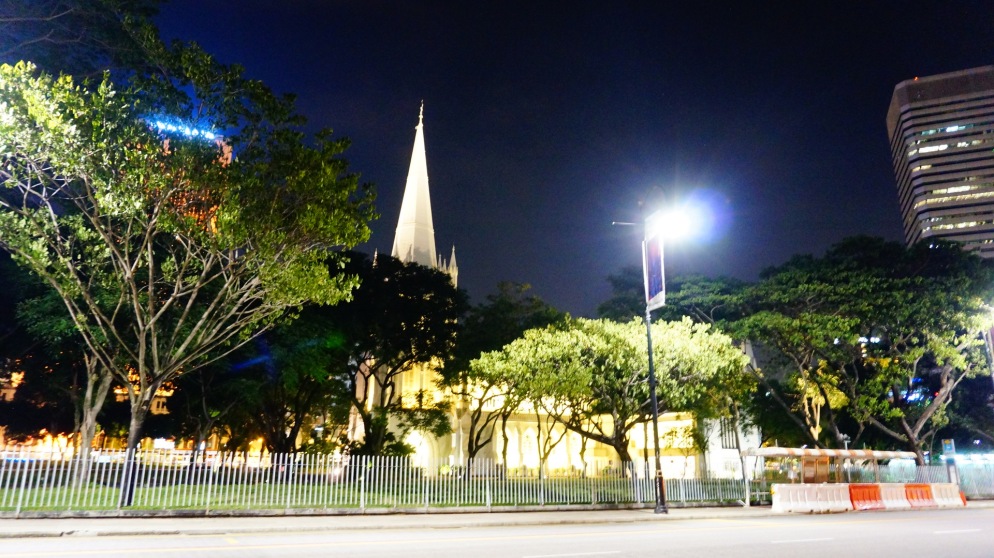
The hot climate makes it necessary to do laundry frequently. The common practice of sun drying laundry takes only a few hours of sunshine to do the job. However, unlike other Asian countries with the same tradition, laundry racks are rarely seen from the street. When creating the blueprint of a new residential district with many building complexes, the apartment layouts are designed in such a way that each apartment has the possibility to sun dry clothes, that the clothes rack spot is never visible from the street, and that every spot will receive a designated minimum hours of sunlight per day. Furthermore, the ground floor of the buildings is open space aside from sporadic facilities such as daycare centres, allowing wind tunnels to naturally cool the district. To reach your destination, you can also walk long distances entirely within the residential complexes joined by gardens and playgrounds, far away from the noise in the streets and protected from harsh sunshine.
Additionally, as my cousin recounted to me, when units within a residential building are offered for sale, the government regulation stipulates the distribution of apartments among buyers of different ethnic groups. In that way, you always have neighbours of other ethnicities. In a melting pot like Singapore, such measures seek to prevent the formation of ghettos and the division among different ethnic groups.
Many metropolis have designated parks and gardens to help creating a relaxing environment and pockets of peace amidst the traffic and haste. But I find that, although such parks are great in themselves, you immediately leave behind the feeling of ease once you step out of it, if the city is else devoid of greenery. Singapore, too, is abundant in highrises, but I did not experience the same claustrophobic feeling as in other cities with this level of prevalence of highrises.

The usual orderliness is accentuated by rows of tall trees with lush crowns, which not only shade pedestrians from the sun but also hides buildings from sight. The colour of the leaves after a heavy rainfall was so vibrant that I had previously only found it possible for such richness to exist in paintings. Parks and plazas do not feel forced. Instead, the greenery seeps through the city like threads of a gifted tailor.
Tropical downpour
Speaking of rainfall, when the weather forecast tells you that it will rain, you’d better trust it to be true, even if you cannot find a single cloud in the sky when you are about to leave. Heavy clouds appear in apocalyptic fashion. Umbrellas are maximal 5% effective in the kind of tropical downpour.
Mostly the clouds are very decisive. They pour their hearts out, and after a short period decide that they are done and happily move on. The water-space-time continuum creates such a high amount of water per unit space-time that the only legitimate footwear to survive the aftermatch are sandals and flip flops. It was after the first rain that I had experienced in Singapore when I finally understood the Singaporean likings for open footwear.
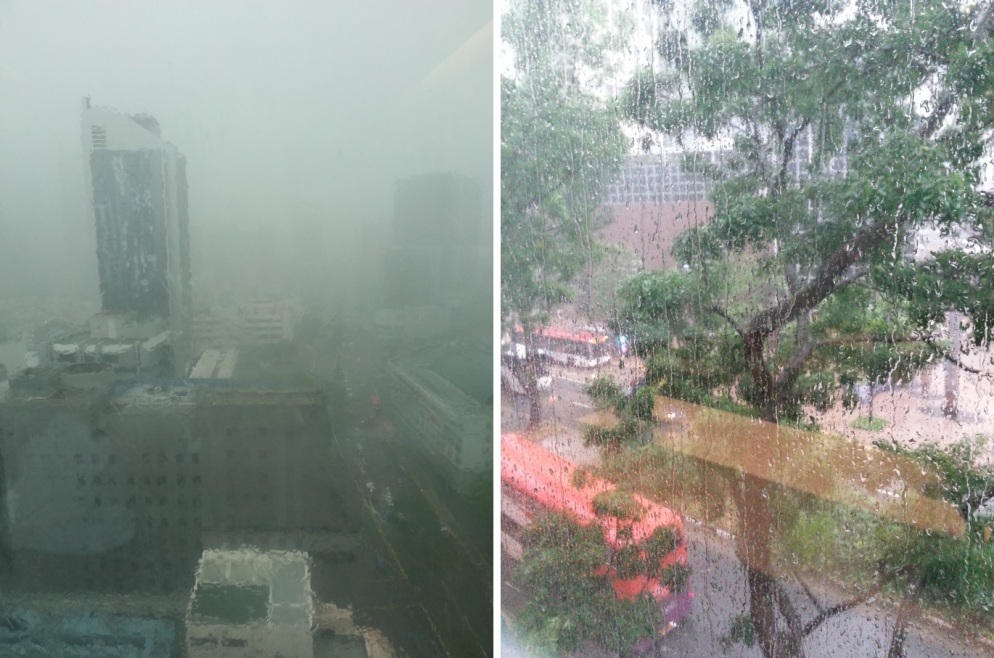
You know that sense of freedom when the world feels refreshed after the rain? The air is cool and crisp, and the earthy smell takes you back to the days when you rummaged through dirt as a kid? Nope, not in Singapore. After rainfall the humidity (as if that had not been high already in dry times) skyrockets, and the only confusing sense of feeling slightly less hot than before is most likely accounted for by your increased perspiration. Again, welcome to the never-ending summer.
I visited Singapore in 2016. For other parts click here.
Singapore: Culinary Delights
Singaporean food is heavily influenced by Chinese, Malay and Indian cuisine. In many cases, dishes have evolved to suit the local taste, and in other cases, intercultural exchange has created new dishes. Go nuts while giving your tummy a treat all the way through Singapore!
Hawker centres, foodcourts or restaurants? Why not all of them!
Roughly speaking, there are three types of places where you can eat: hawker centres, foodcourts and restaurants.
Hawker Centres
Hawker centres are where the locals eat most frequently. In these open-air food complexes, you will find rows and rows of food stalls with seating areas inbetween. You order food at the food stalls and then sit down to eat wherever you manage to squeeze yourself in. Most hawker centres are dominated by one country of influence. But say, you are with your friends at a Chinese hawker centre and are not in a mood for Chinese food? No problem at all. You will still find enough Malay and Indian food stalls to choose from.
Hawker centres are equipped with fans instead of air conditioners, so for tourists who are more contend in a colder climate, it takes some time and willpower to adjust to eating hot dishes while drenching your t shirt. When it comes to science though, it might not sound like such a strange idea to eat hot food and drink hot tea when you are trying to cool down. The increased perspiration helps you to cool off in a natural way. (And if you observe the eating habit of sub- and tropical regions, you will find that people there more often than not have developed a preference for spicy and hot dishes.)
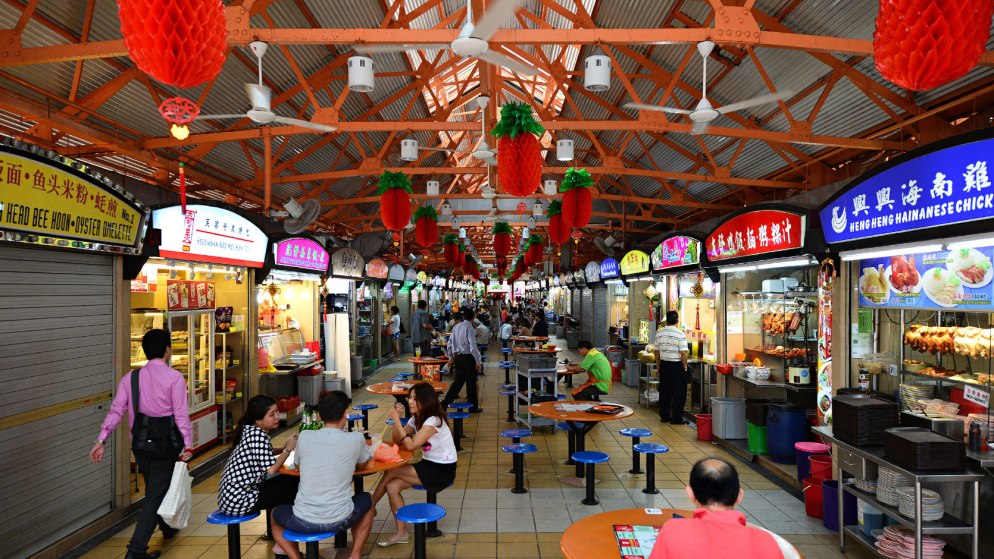
The biggest challenge when going to a hawker centre, especially if you are not quite familiar with either of the three types of cuisine, is to choose a food stall and order something that will not give you instant food regret. If you feel unsure, best search for some videos on Youtube beforehand, or (literally) trust the guts of others by queueing wherever others are queueing up. A long queue is generally a reliable indicator of good food. If you feel adventurous, you can also politely check out what others are having, and then casually strike up a conversation with a stranger about their food. That way you can make sure to receive a proper recommendation from a local. Besides, people love to inspire others to eat the things they love themselves!
Food courts
All sorts of self-service places with densely distributed food stalls apart from hawker centres will be referred to as food courts. (Technically, hawker centres are also food courts.) They are air conditioned, slightly fancier than hawker centres and can be found most commonly in the basement or top floor of a shopping centre or incooperated in underground walkways connecting metro stations and/or department stores. The convenience of their location is evident: on your way home from work or after an extensive shopping tour, quickly grab a bite at the food court next to the metro station you take the train at. They are essentially the same as food courts in, for example, North America. Often, you will find pictures of the dishes on display or in a laminated, condensed menu.
Restaurants
This one is self-explanatory. Being served and having a waiter whom you can ask questions are certainly convenient. Restaurants are not necessarily much more expensive than hawker centres and food courts. Apart from Chinese, Malay and Indian restaurants, you can also find restaurants dedicated to Japanese and Korean cuisine.
That looks like something I know from home. Wait, this tastes nothing like that!
It is better to try something whose taste you cannot make out in your mind than to pick something that resembles something you are familiar with. In the former you can be positively surprised like a child who just had their first ever ice cream melting on their tongue; in the latter, unmet expectation can be disappointing.
Here are two things that might be a bit different from what non-Singaporeans, particularly tourists from a Western country, are used to.
Kopi
Kopi is the Singaporean coffee. Depending on the version, you will get kopi with or without (condensed) milk and/or sugar. People who are used to espresso or black coffee will find even the unsweetened version very sweet-tasting and unusual. If you are very keen on getting your cup of wake-up coffee to go prepared in the way you are more accustomed to, better pay a visit to Starbucks and the like.
Bread
Singaporean bakeries sell baking goods that are essentially the same as those sold elsewhere in (South?)East Asia (I have not been to every corner of that region, so this is only an educated guess). In most bakeries you take a serving tray and a pair of tongs and pay at the register for what you have put on your tray. (One thing I found bothersome was the amount of packing materials wasted. First they put each individual bun into a plastic bag, then they bag the small plastic bags with a big plastic bag.) People who are more accustomed to baguette and wholemeal bread are usually surprised by the fact that everything tastes “slightly sweet”. Nevertheless, give it a try as a short snack inbetween!
My personal favourites were:
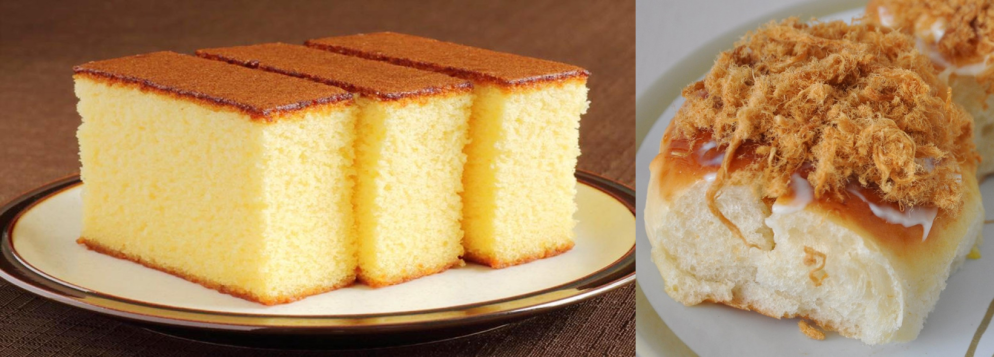

What I Enjoyed
I would love to include more of my own pictures in this section, but most of the time I ate my meals the way meals had been eaten until the invention of Instagram and #filters.
My cousin lives in a typical residential area, so when I stayed with her, she took me out for food in places tourists usually do not get lost in. And that is absolutely fantastic.
Kaya toast, Milo and soft-boiled eggs
One of the typical Singaporean breakfast is presented neatly in the following picture:
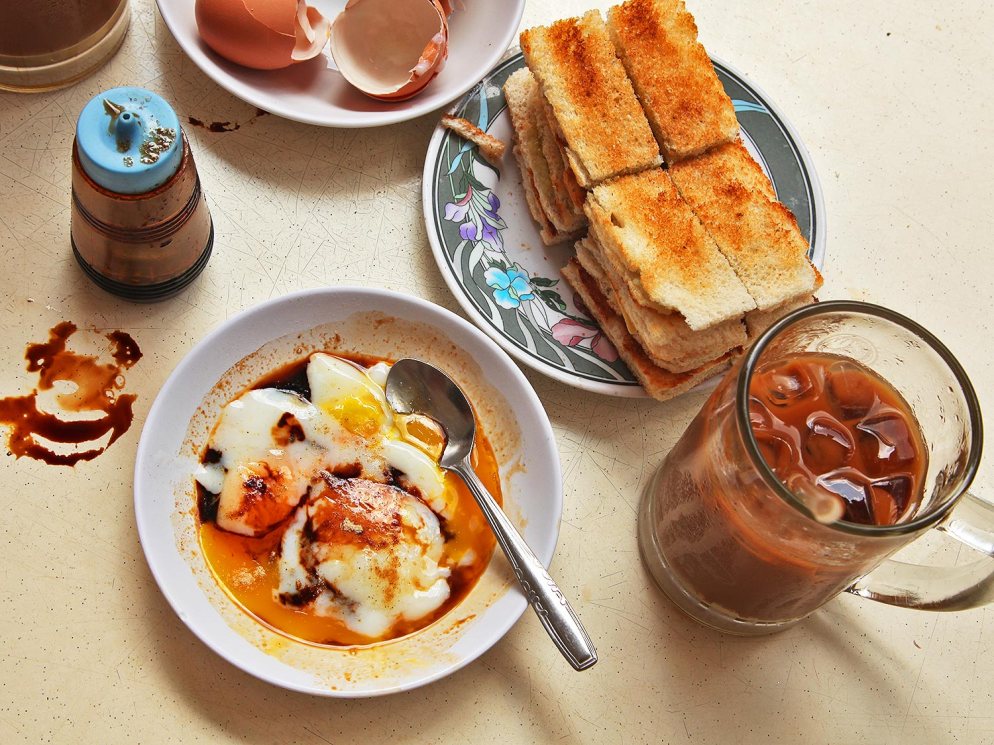
Treat yourself with a few slices of toast with butter and kaya (coconut jam), a cup of hot Milo (milk with chocolate and malt) and two soft-boiled eggs. The eggs I had were served in a big tin cup of hot water. They were left in the hot water for a couple of minutes. Usually, soy sauce is added to the eggs of soft texture.
Rice congee
This is one of my favourite childhood comfort food. My bowl of rice congee with salted pork and century egg was gigantic. I am sad to this day that I did not manage to finish all of it. Often, such congee is eaten with buns or, as in this case, Chinese fried breadstick. The fried breadstick tastes very similar to the Hungarian fried breadstick lángos. If you do not feel like trying the infamous century egg, there are other versions without it that taste just as good. I had this dish at the hawker centre near Bugis MRT station. The food stall had quite a long queue (especially for serving such a simple dish), and three lively middle-aged women cooked and served.

Fish head curry
Fish head curry was a dish on my bucket list. My cousin took me to a place where she found served the best fish head curry among the many places where she had tried it at. Additionally, we ordered a vegetable soup and ate the fish head curry with rice. It truly tasted as good as I had imagined it would. The spices were on point, the fish was tender, and the vegetables in the curry were soaked with spices and just as good as the fish itself.

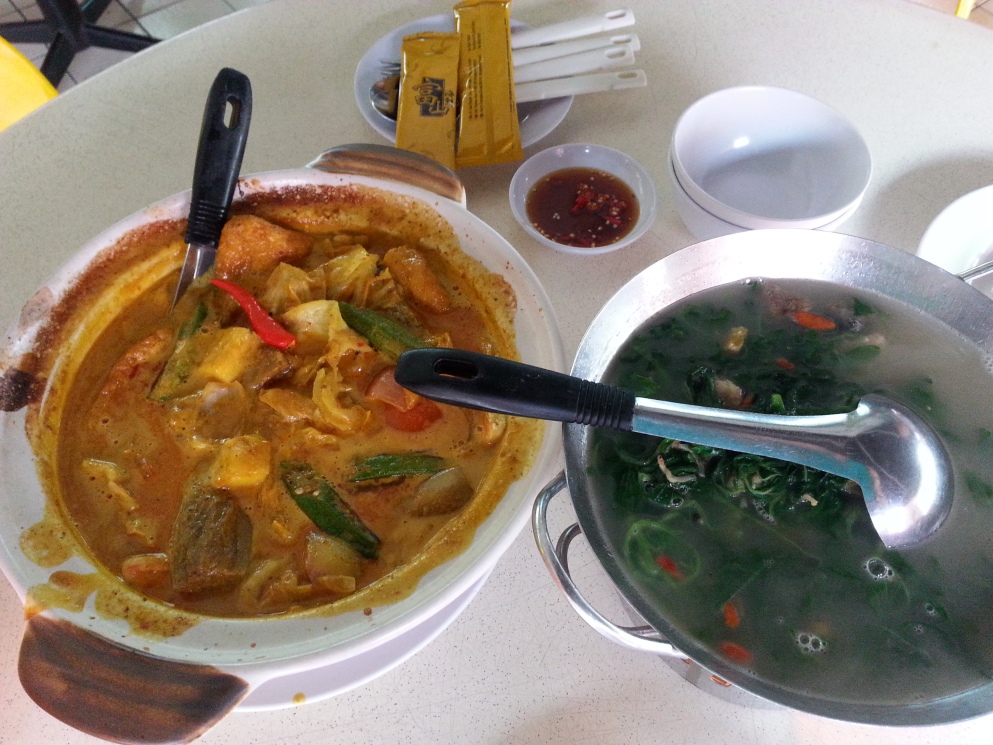
Hainanese chicken rice
This dish can be found in most foodcourts and hawker centres. I took a special interest in it because Hainan is the sland on which I had spent many years of my childhood. This dish was brought to Malaysia and Singapore by migrants and ever since undergone some transformation. I do not know if it is because childhood memories tend to be covered in a big colourful bubble or because chicken rearing used to be less industrialised, but no Hainanse chicken rice dish that I had tried after the youthful days was a match to the original I had in Hainan. The one I had in my childhood did not involve any additional sauces. It consisted simply of chicken and rice. The rice was cooked inside (or at least together with) coconut shells and subsequently obtained a unique aroma. When being topped by the delicate chicken pieces, which were neither fatty nor dry, the rice was simply heavenly, as it took up both the fruity aroma of coconut and the essence of the chicken.
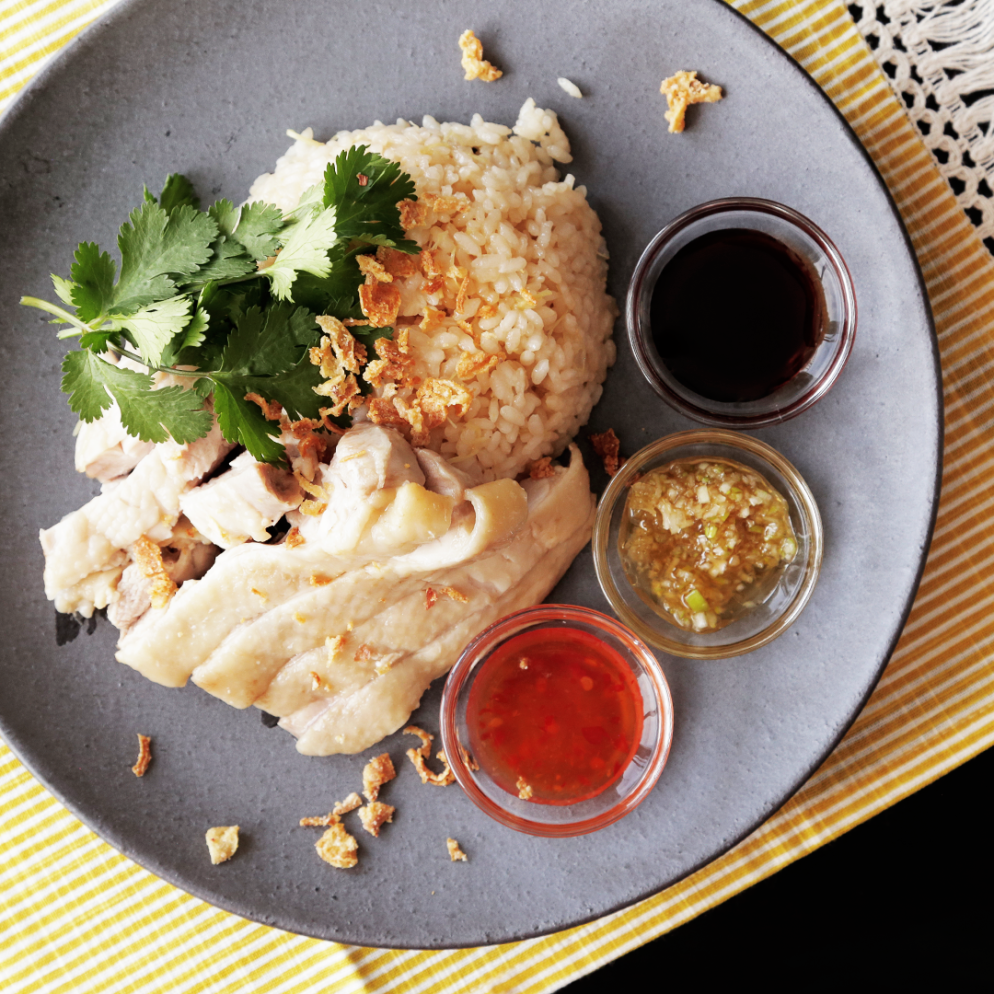
Modern day Hainanese chicken rice rarely gets the coconut treatment anymore. I tried the dish at two places in Singapore and found that the quality can vary quite substantially. When it is not especially well done, the meat can be bland or the chicken skin overly fatty, and the lack of taste has to be compensated by either dipping the meat in sauces or chosing the fried version of the chicken instead of the plain one. However, if you are served high quality Hainanese chicken rice, it might just become the best dish you are going to try in Singapore.
Dim sum & dumpling
Dim sum specifically refers to savoury and sweet (steamed) dumplings and pastries popular with the Cantonese (and therefore in Hong Kong). There are many restaurants serving dim sum and dumplings in Singapore. They tend to be one the more expensive side. If you are keen on trying out authentic dim sum in Singapore, take a look at this extensive guide.
I did not do my research on dim sum before going to Singapore, so I only managed to have it at one restaurant located in spots easily randomly stumbled upon by tourists. For a quick take away lunch I ordered ‘congee with lean pork, century egg & salted egg’ and ‘rice with chicken, sausage & mushroom’ at Tim Ho Wan (添好運). I am a big fan of this type of Chinese sausage and had hoped to find more of it in my dish. Overall the food tasted very good and I would pay it another visit to try out the other dishes. The congee was also delicious, though I preferred the one I had at the hawker centre, which had more of a mom’s kitchen touch to it.
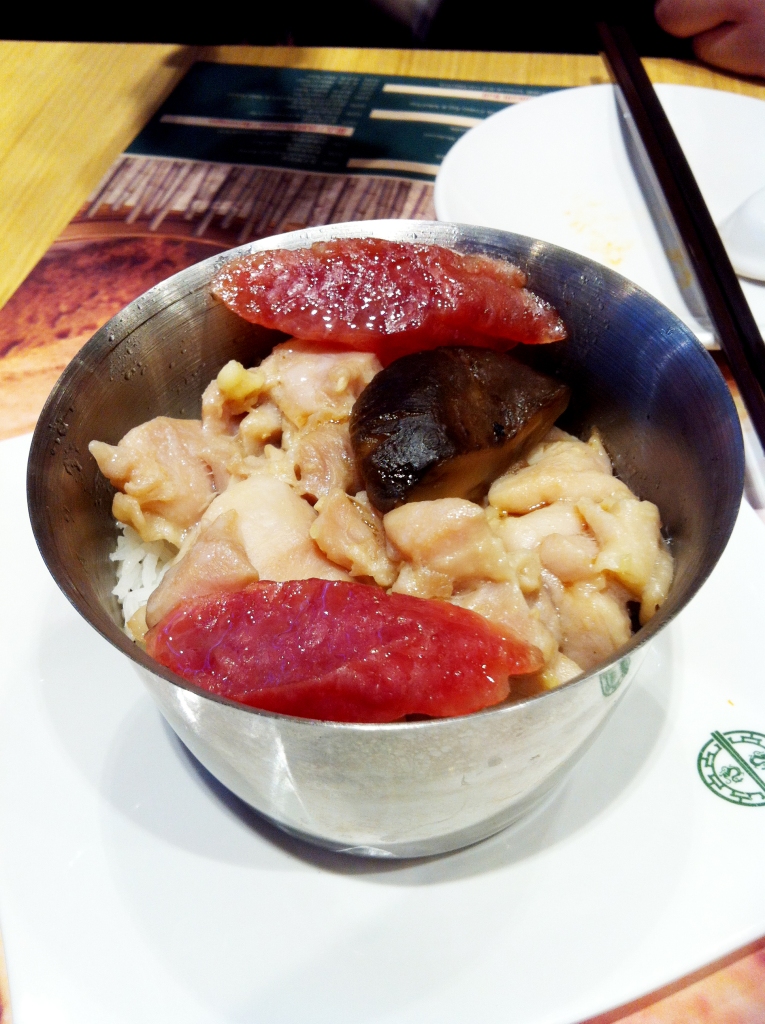
Chinese dumplings in a more general sense can be had at Ding Tai Fung (and many other lesser known restaurants). I had previously eaten at the original Ding Tai Fung (鼎泰豐) in Taipeh, so I was happy to find that the food quality in Singapore was of the same, high standard as that in Taipeh. Part of the kitchen area, where an army of cook magically turned dough and filling into mouth-watering xiaolongbao and other delicacies, was visible through glass walls and in itself an attraction. Being in Singapore, where great food for little money is around every corner, Ding Tai Fung is rather pricy and you would expect to pay at least double the amount to satisfy your hunger than elsewhere, but I still highly recommend it, especially for those unfamiliar with this sort of Chinese cuisine.
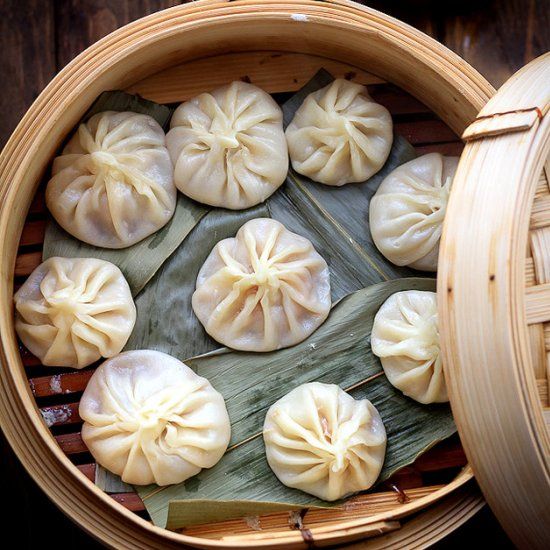
Basically, you cannot do wrong, no matter what you order. Xiaolongbao and other types of buns and patries are shared by everybody, so chose a small serving size of each type of dish and try as many dishes as possible. I recommend you sticking to the categories steamed dumplings (xiaolongbao), steamed buns, steamed snacks / soups in that order of priority. I would not personally stuff myself with rice and noodle dishes however tempting that might be. You can get great rice and noodle dishes also on other occasions, but an authentic serving of xiaolongbao is rare to come by.
Xiaolongbao is also referred to as ‘soup dumpling’, even though they do not come in a bowl of soup like wonton; the reason for this name lies in the rich soup contained by its delicately thin skin. To avoid being burned by the soup within, best place it on a spoon, so that any spilled soup after you have carefully biten it open will be held by the spoon. After all, the goodness of a xiaolongbao is judged by the quality of its soup within! You can, of course, put the entire xiaolongbao in your mouth without the intermediate step of using a spoon.
If I went to Ding Tai Fung again, I would definitely include these four dishes in my order: “steamed pork dumplings”, “steamed angled gourd & shrimp dumplings”, “steamed chicken or pork rib soup” and “sweet Chinese delicacy (八寶飯)”. The so-called “sweet Chinese delicacy” is a very ambiguous translation that fails to reveal any aspect of the multi-facetted goodness of the dish. The literal translation of the Chinese name is “eight treasure rice”. It is a dessert traditionally served on Chinese New Year. Glutinous rice holds together many sweet “treasures” such as dried or crystalised fruits, lotus seeds, goji berries, red bean paste, dates, different kinds of nuts and can be addtionally sweetened with brown sugar. Every Chinese grandma prepares this dish slightly differently. It is also one of every grandma’s secret as to why she is popular with her grandchildren. For some people like me, the obsession with this sweet delicacy did not cease after officially becoming an adult.

Fruits and fresh juices
Beverage choices are plenty in Singapore. If you are a big fan of fresh tropical fruits, then you will be overjoyed just like me. Freshly-squeezed fruit juices can be found everywhere you go.
Fresh coconut water directly from the fruit is my lifetime number one favourite drink. The high amount of coconut water inside a young coconut keeps you hydrated in a hot place like Singapore, and its sublime gentle sweetness is furthermore supplemented by a wide range of vitamins and minerals. Many vendors offer coconuts from Thailand as well as Malaysia. Personally I found the ones from Malaysia much tastier.
Sugar cane juice is often offered at juice booths that sell it as its primary speciality. You can watch the clerk driving sugar canes through a machine to squeeze out the juice. If you have never had it before, I definitely recommend you giving it a try.
Other fruits such as watermelon, mango and papaya are common ingredients for juices. You can buy one cup for 1-2 SGD at markets and hawker centres. More fancier juice shops can be found in foodcourts and also offer the addition of milk to the juice.
Packaged, pre-cut durian can be bought from fruit vendors. The smell of the durian is well contained within a very small range surrounding the fruit display; you would hardly feel bothered even if you found the smell unpleasant. I was not too keen on trying it, but others who have tried it said that it tasted better than it smelled, and that the consistency was soft, almost buttery.
Indian cuisine
Now that I am writing this summary of all the things that I ate, I realise that I did not have Indian food as often as I should have. Apart from one short lunch at the hawker centre in Little India, I went to the Banana Leaf Apolo because it had such a good review. They gave me the biggest coconut I had drunken from in my whole life (mind you, it also took them 30 minutes to actually bring it). The dish that I tried was average tasting, and far from the amazing Indian food experience I had had in the Indian district in Paris. Later I told my Indian friend about the experience and he said to me: you went to a South Indian restaurant but you ordered a North Indian dish. Then he gave me a whole list of things that I should have ordered. Guess I should have consulted him beforehand. My boyfriend, on the other hand, found his dish spectacular. So I suppose I really ordered the wrong dish.
Korean and Japanese cuisine
You will find quite a few Korean and Japanese restaurants in Singapore. I had sushi for 1 SGD per plate at a conveyor belt restaurant. Compared to what I am used to in Europe, the price was substantially lower and the quality higher (at least when it comes to sushi that lies more towards the affordable end of the sushi spectrum). I also intended on eating at an udon or ramen restaurant, but did not find the opportunity for it in the end.
Korean food is still new for me, so I only dared to try something that came with a straightforward concept. This rice dish in the photo below was topped by spicy flavoured meat, dry seaweed and two kinds of vegetables. The menu also included a soup and a portion of sour and spicy pickled vegetables. It was very delicious. Given the next opportunity, I would definitely try out other kinds of Korean food.
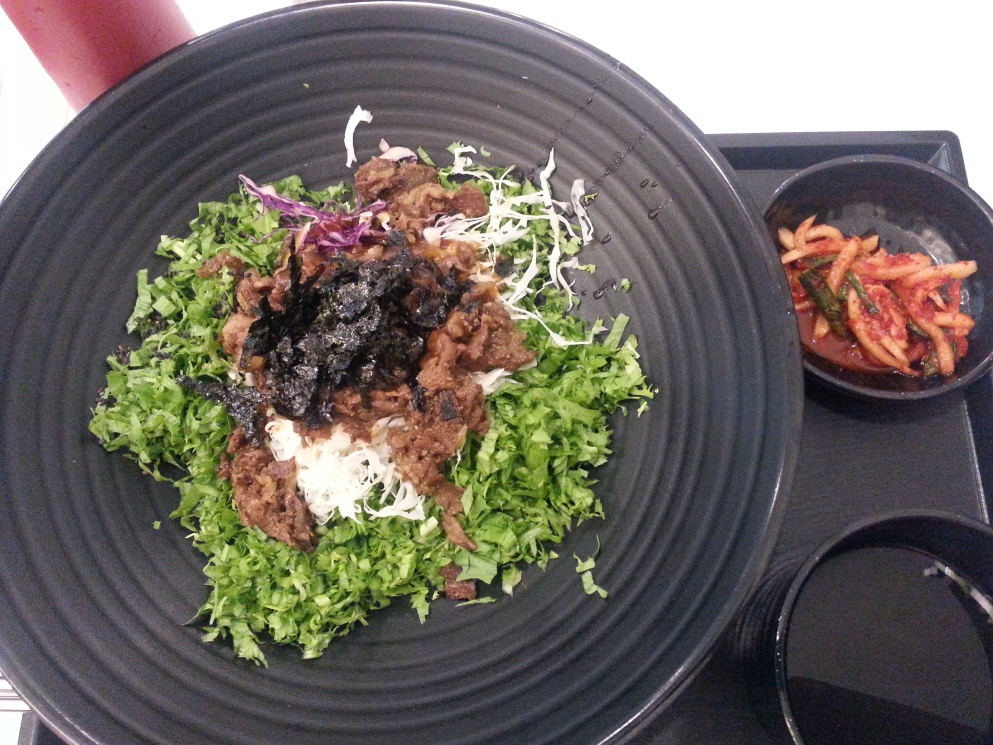
Malay cuisine
I did not try any Malay dish because I was going to go to Kuala Lumpur after my stay in Singapore. But then, due to various reasons, I ended up not trying out any Malay food there either. So much regret…..
(Almost) Hai Di Lao Hotpot (海底撈火鍋)
Situated inside 313@Somerset, a busy shopping mall on Orchard Street, Hai Di Lao Hotpot is an excellent example of ‘location, location, location’. Rumor has it that it serves hotpot worth waiting in a long queue for. Little did we know, that it was not just a long queue, but a looo[…]ooong queue. We wanted to try our luck by turning up on a Friday evening at 8 without a reservation (what could go wrong?). Seating area for the queue covered what felt like half of the entire floor of the mall, and when we finally found our way through the orderly crowd, we were quickly greated by a waitress and informed that we might have had to wait for four hours to get a table for four.
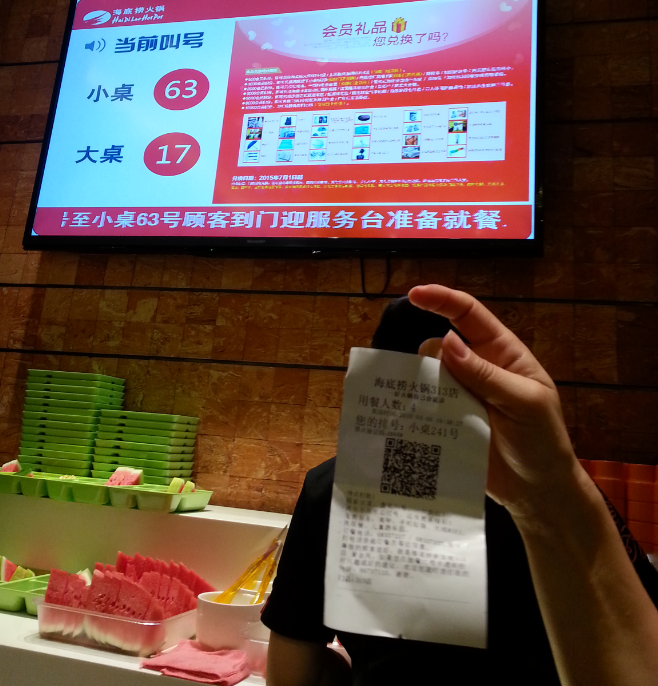
We were handed a note with our table number (241) and observed that the current table number for small parties (63) was barely making an effort to increase. Guests in line were given delicious free snack: watermelon slices, cherry tomatoes, some kind of chips, popcorn and cold, sweetened herbal tea. Four hours of waiting time was a tad too long for us, so we left after having finished the snack boxes. Shortly before midnight that day when we were brushing our teeth at home, we received a text message from the restaurant informing us that our table was ready.
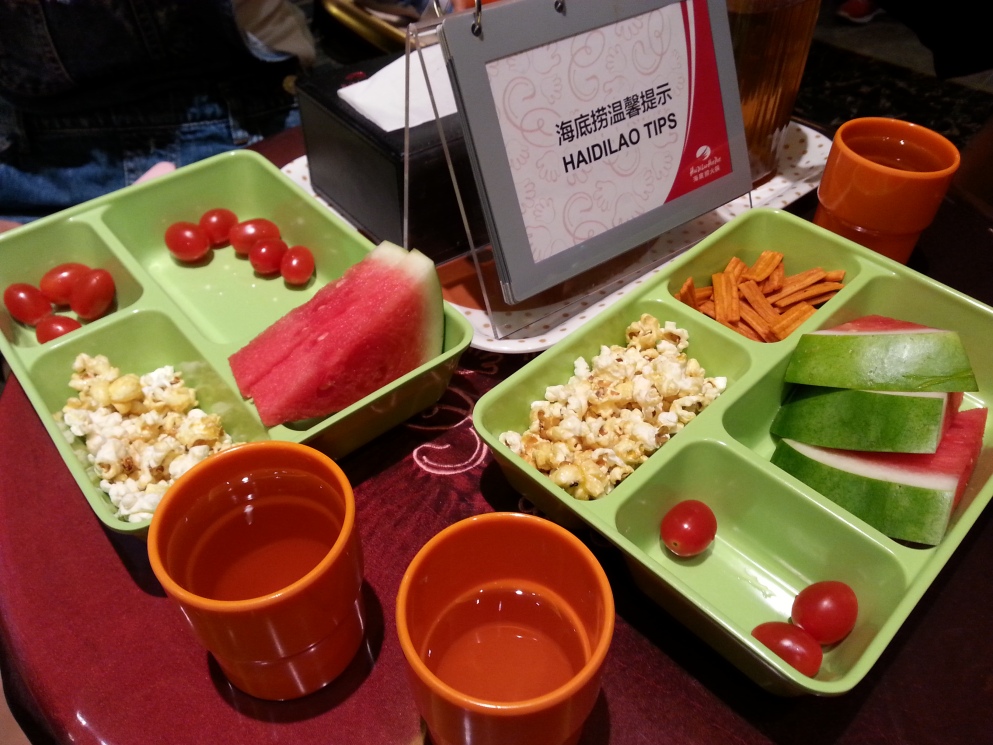
No Signboard Seafood (無招牌海鮮)
A culinary highlight (especially for seafood lovers like me) was a visit to the original No Signboard Seafood in Geylang Road. No Signboard Seafood expanded to other locations in Singapore. However, according to locals, the food quality in the original address remains the highest. It was a pricy visit and doubtlessly nothing I would be able to afford on a daily basis; many thanks go out to my cousin for the generous treat!
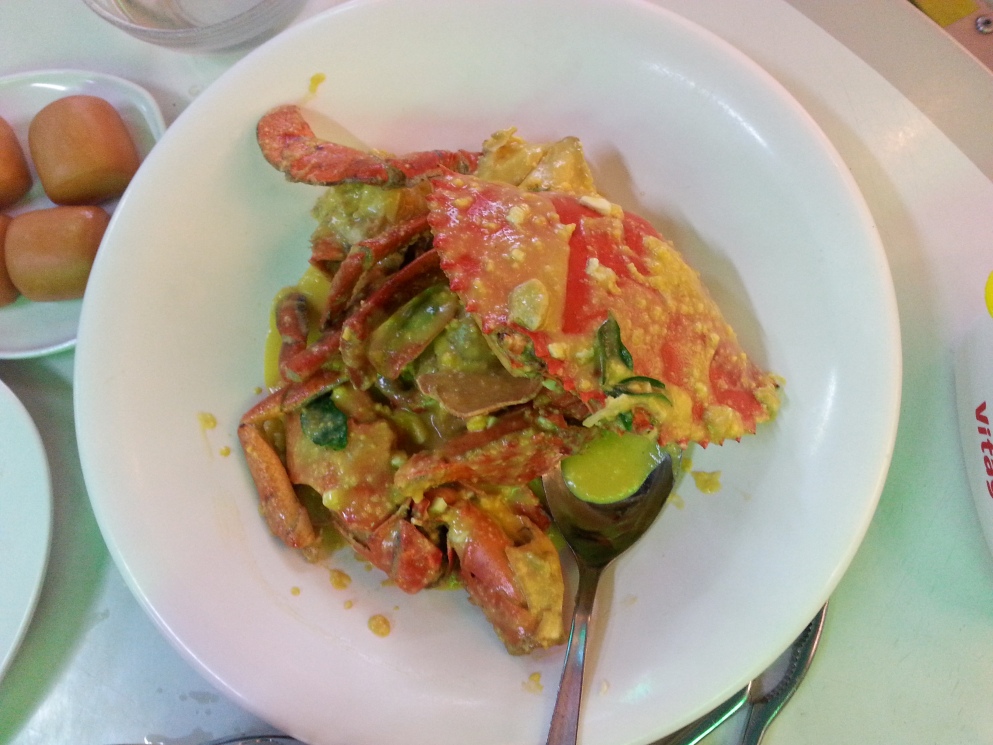
The main reason the majority of people flood this restaurant is its crab dish that comes in various seasonings. The price of a crab dish is determined by the weight of the crab and rested at 70 USD / kg for an “ordinay crab” the last time I checked. If you have tried crabs before, I suggest two people to share one crab, especially when you are planning on trying mussels, fish and other dishes as well. I had never had crabs with such plenty and tender crab meat before! We ordered crabs with two kinds of seasoning: egg yolk crab and pepper crab. They were both exceptionally delicous. If I happened to stay in Singapore again, I would go to No Signboard Seafood to have an egg yolk crab. The egg yolk taste was finger licking good. The golden roasted (or maybe fried) buns were surprisingly yummy and can be eaten plainly or dipped into the crab sauce. We also had some other seafood dishes with mussels or fish which were all fantastic.

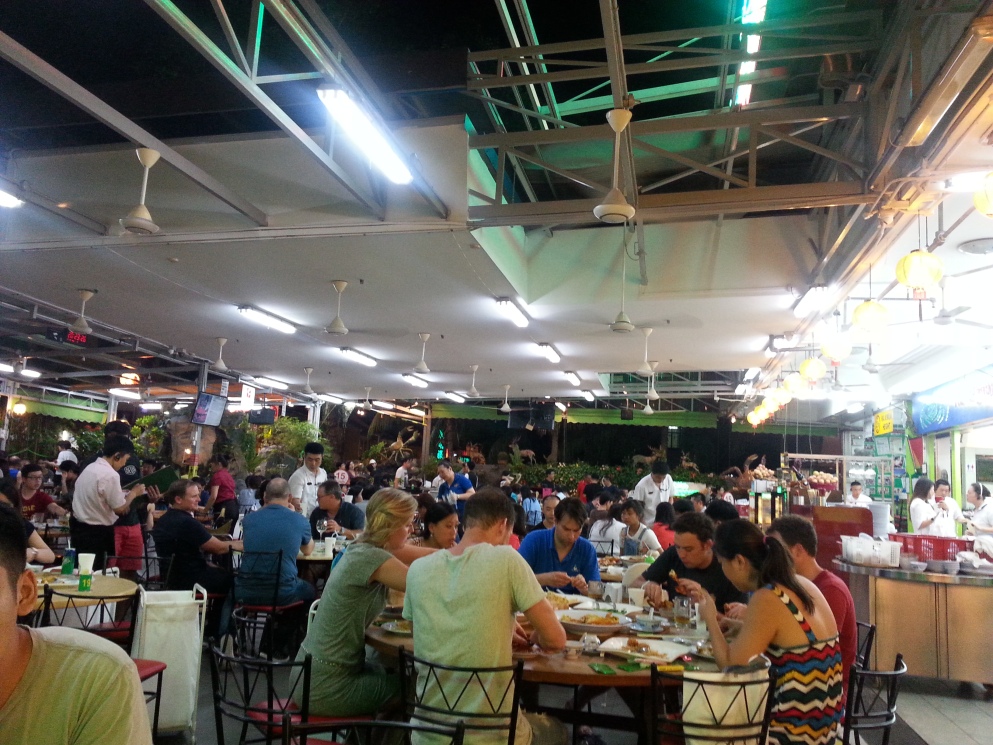
The restaurant has become popular among Western tourists despite the obvious obstacles when it comes to the actual process of eating: you will go home hungry unless you dig in with both of your hands, slurp the soup contained by the mussels, crack open the crab shells with your teeth and spit out bones and shells. Across our table was a group of Westerners accompanied by two Asian women (supposedly Singaporeans juding by their English accent). The Asian women were explaining to the others how to eat the food. The Westerners were so deeply engulfed by their endevour to juggle the crab parts, that they looked like they were studying Einstein’s handwritten notes on physics. Admittedly, it did amuse me to watch them take on a subject like this. At the same time, I was secretly glad that they ventured to try something new (and awesome) while discarding all their familiar dining etiquette.
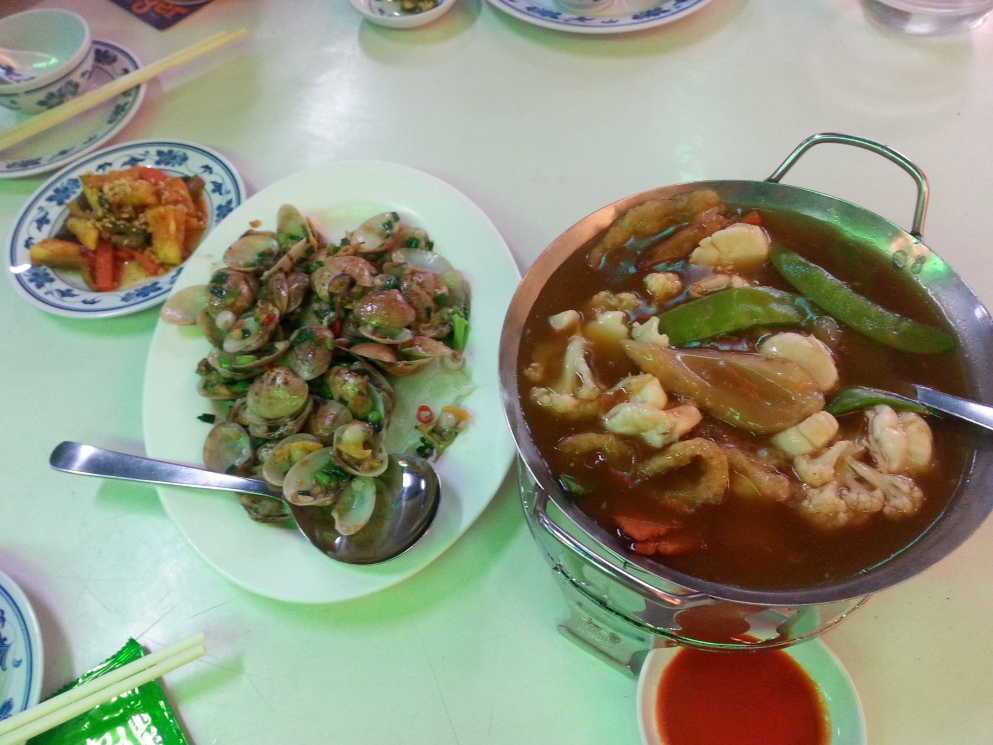
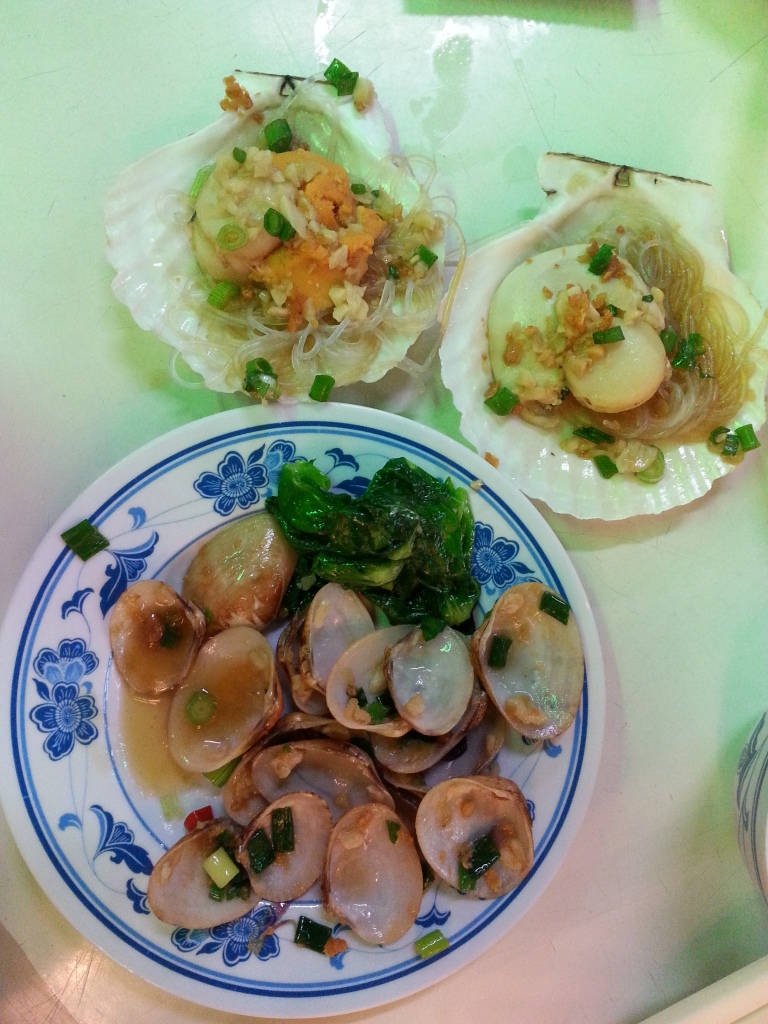
I visited Singapore in 2016. For other parts click here.
Singapore: The Shiny and the Fancy
The area centered around Marina Bay Sands as well as Fullerton Hotel harbour both the historical and the modern treasure of the city. This general area is probably the most visited area for tourists – and I surely understand why. Amazing architectural elements blend in with modern skyscrapers, and the Marina Bay Sands with its infamous Infinity Pool on top has become an icon of Singapore in recent years. Access to the Infinity Pool is exclusively granted to hotel guests. The Sands SkyPark Observation Deck, however, is open to ticketholders. Unfortunately we did not make it to the top, and I can only imagine the breathtaking view we must have missed.
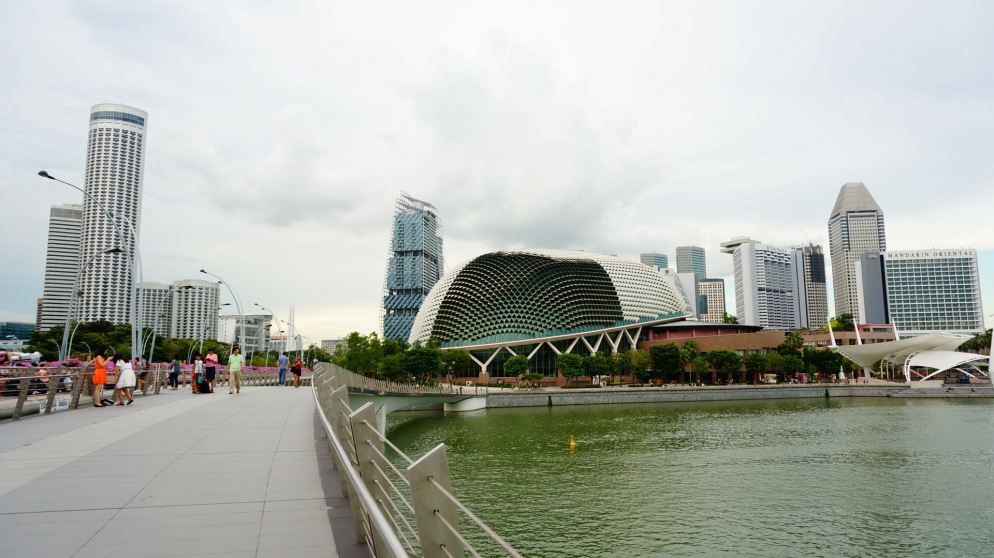
The downtown area transforms into its most magnificent side during nighttime. The omnipresent sparkly lights grab your attention in a non-intrusive and playful kind of way. A lot of malls, buildings, MRT stations are interconnected by passages and bridges, so if you let your sense of wonderment guide you, you will find yourself suddenly in interesting places that you would never have found, had you intentionally looked for them. And to me, the most noteworthy thing about this beauty on a grand scale was that the beauty seeped through every adjustable level of imaginable zoom: the scenery looked needless to say mesmerising from afar, but at the same time when you look down on the pavement, get away from the tourist areas, or use a public lavatory with sanitation requirement upscaled by the blazing heat, you would find that the very things in front of you are just as orderly and neat as the miniscule things on the horizon. It is a weighty task to make the people internalise that it is everybody’s duty to treat the surroundings in a respectful manner, and here, you can see the result of this appreciative attitude.
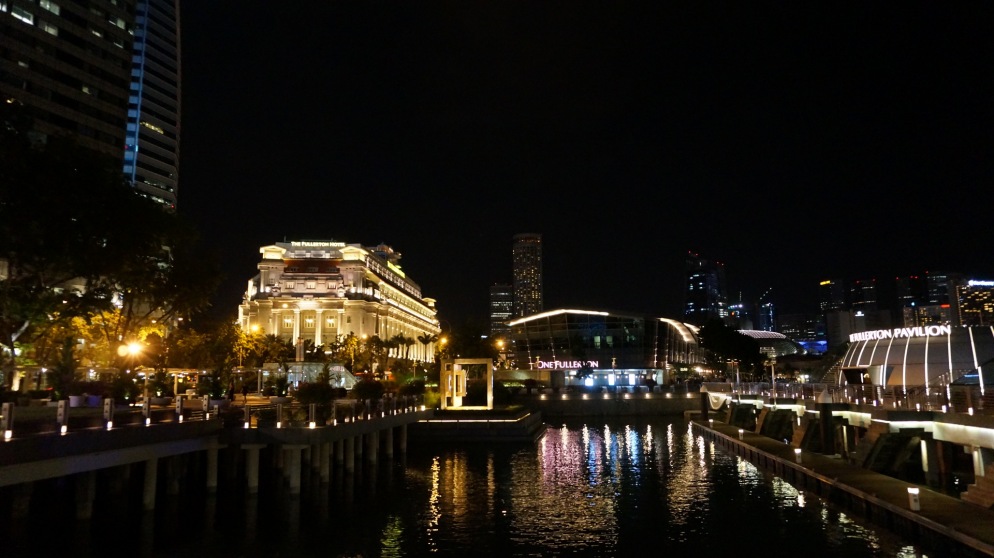

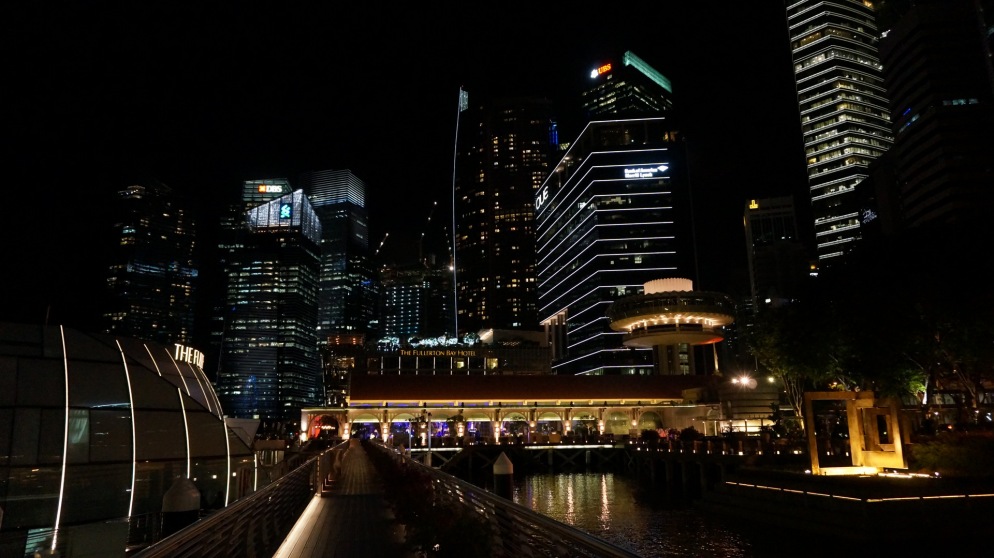
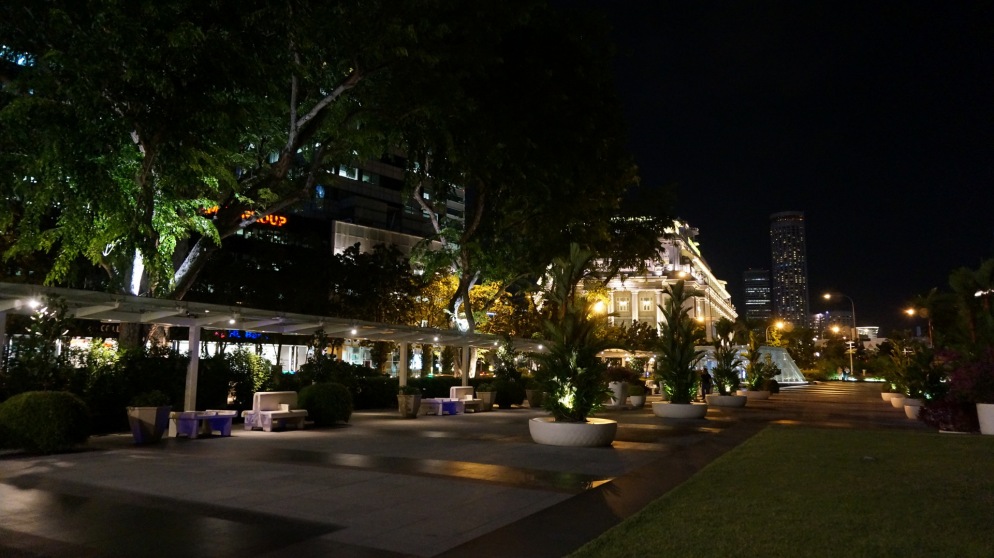
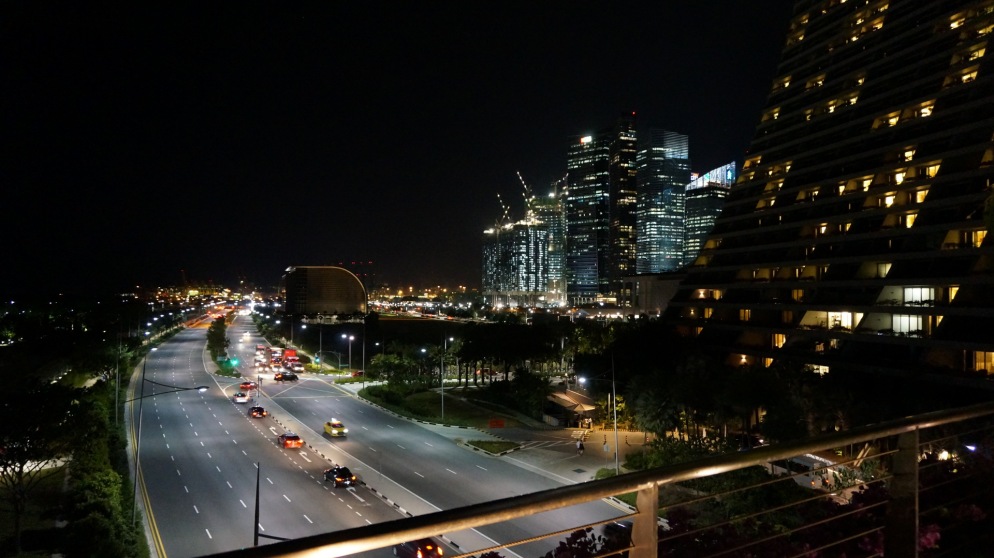



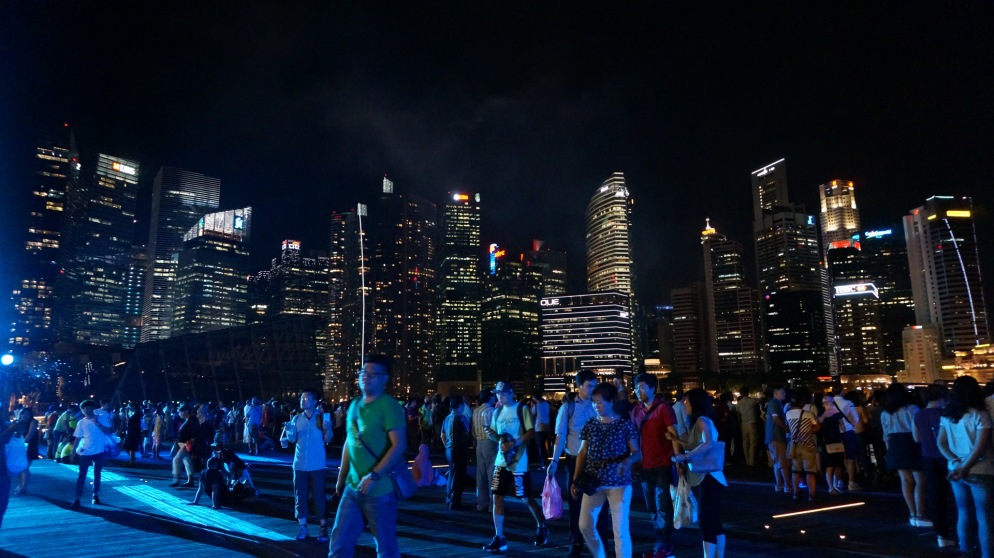

I visited Singapore in 2016. For other parts click here.
Singapore: Alleyways & Nature
Aside from the modern flair centered around Marina Bay you can find the, in my opinion, true charm of Singapore in the small alleyways. The night safari in the Singapore Zoo sounded amazing; unfortunately it did not fit in the schedule. Instead we took a stroll in the Botanic Garden. Sentosa Island, too, was a relaxing alternative when you are trying to get away from the city and was surely not missed out on.
Little India
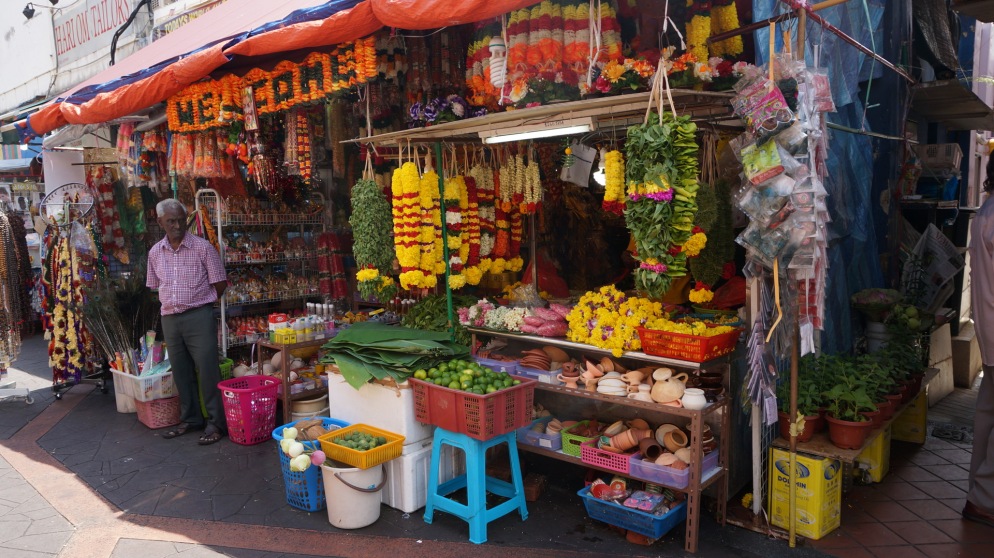
Getting overground from the MRT station I was greeted by a heavy “Indian smell” – if such a thing existed. It smelled exactly like the Indian grocery stores at home where I stock up on spices. Many small stores sold non-specific cheap goodies; a lot of others had a gorgeous selection of handcrafts. You could buy ornamented decors, clothing items, bags, rugs, clay pots and much more. The fresh flower garlands smelled like necklaces from heaven.
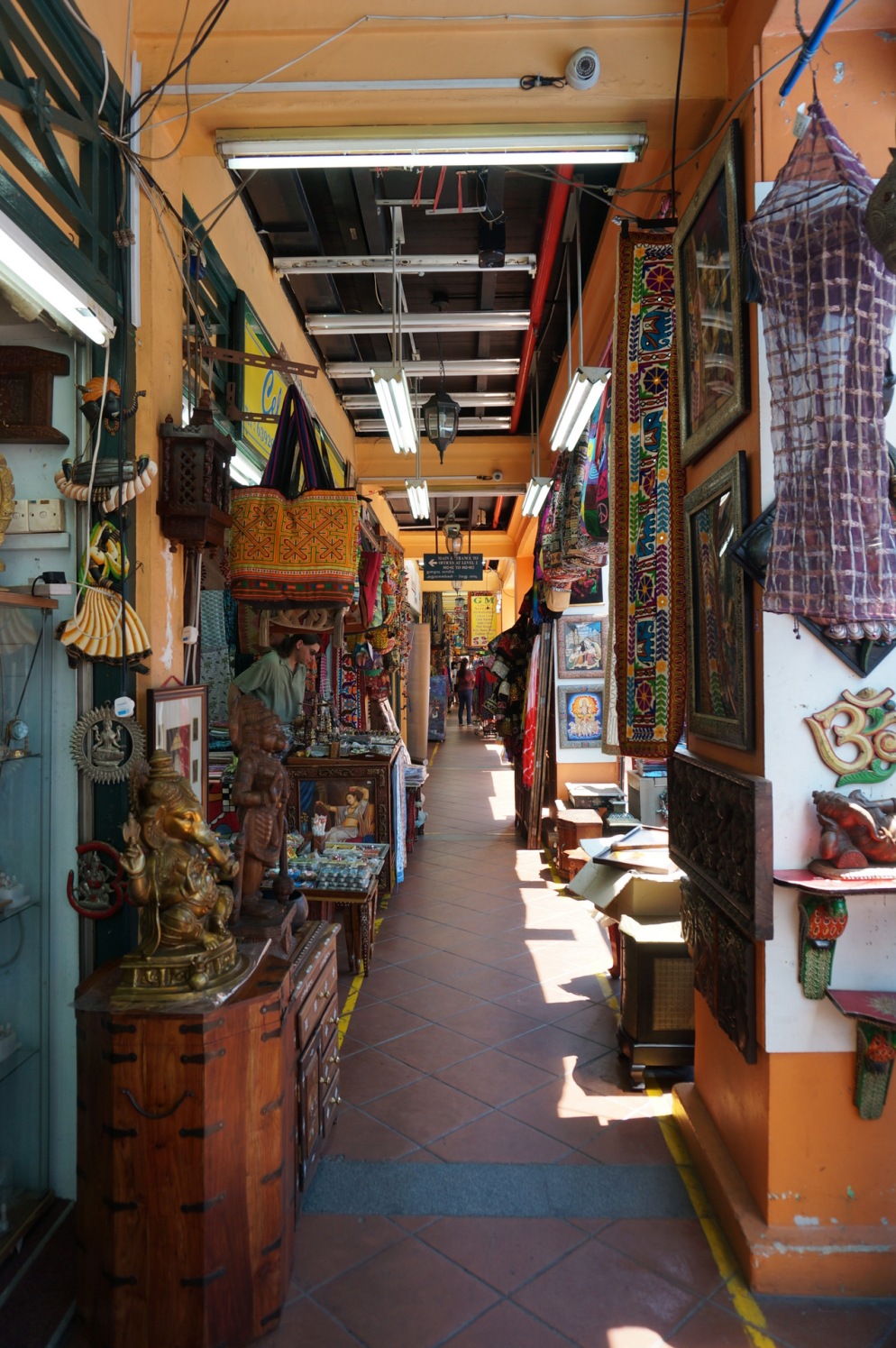
Wherever I looked, it was an overwhelming experience for all the senses. Women were oftentimes dressed in bright and colorful saris, waves of Bollywood music streamed in my ears, and the scent of flowers and spices competed for their turn of domination.
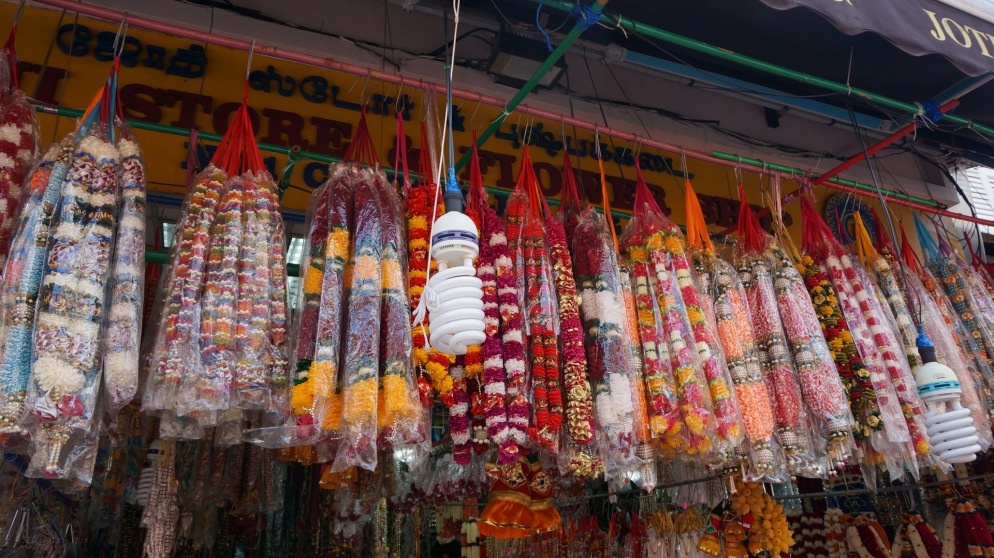
For lunch we stopped by at the Hawker center nearby to get some highly anticipated Indian cuisine. It there where I had an unpleasant encounter with the owner of one of the food stalls. My female colleague and I ordered food from this presumably Indian man of about 55 years, who treated us like we were a kind of untouchable, lowly species. He would not look at us at all, answered the food order with the same effort of mindlessly swapping a fly. After paying, he did not bother handing us the change until we demanded it, and then he dropped the coin into our hand to avoid any chance of touching our hand. We felt that his disdain towards us was explained by sexism. It was undoubtedly irritating because I had not experienced this sort of blatant discrimination, and also because I had only met the most hospitable and kind Indian classmates in university. Well, I guess there are nice and not so nice people in every group of people.
Chinatown
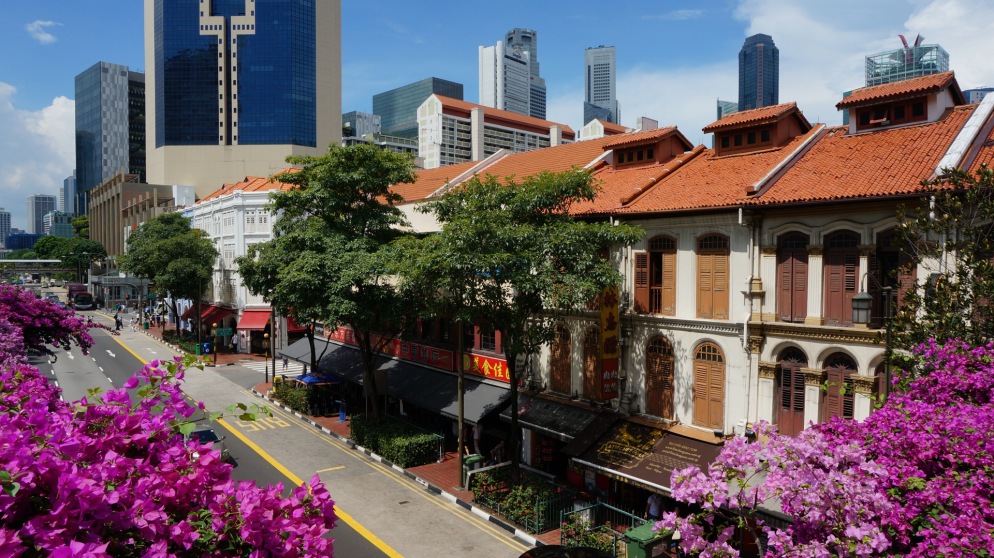
Considering that most of Singapore was already a big chinatown with all the ethnic Chinese running around, it was somewhat odd to have a specific area called Chinatown. It did not look much different from elsewhere apart from the added trains of hanging red lanterns over the street (stereotypical much?). Supposedly you could enjoy some truly great Chinese food there, but honestly, I have absolutely no recollection whether I had a meal there. There are simply too many other places outside this designated area that harboured authentic Chinese and Chinese-inspired Singaporean cuisine. I do, however, remember getting a huge cup of freshly squeeze papaya juice for 2 SGD. It was superbly tasty and helped out a lot against the harsh afternoon sun. Even though personally I was not overly amazed by the area, in all fairness it was the cleanest chinatown I had been to. It was so clean it almost did not feel like a real chinatown (New York, I am looking at you).
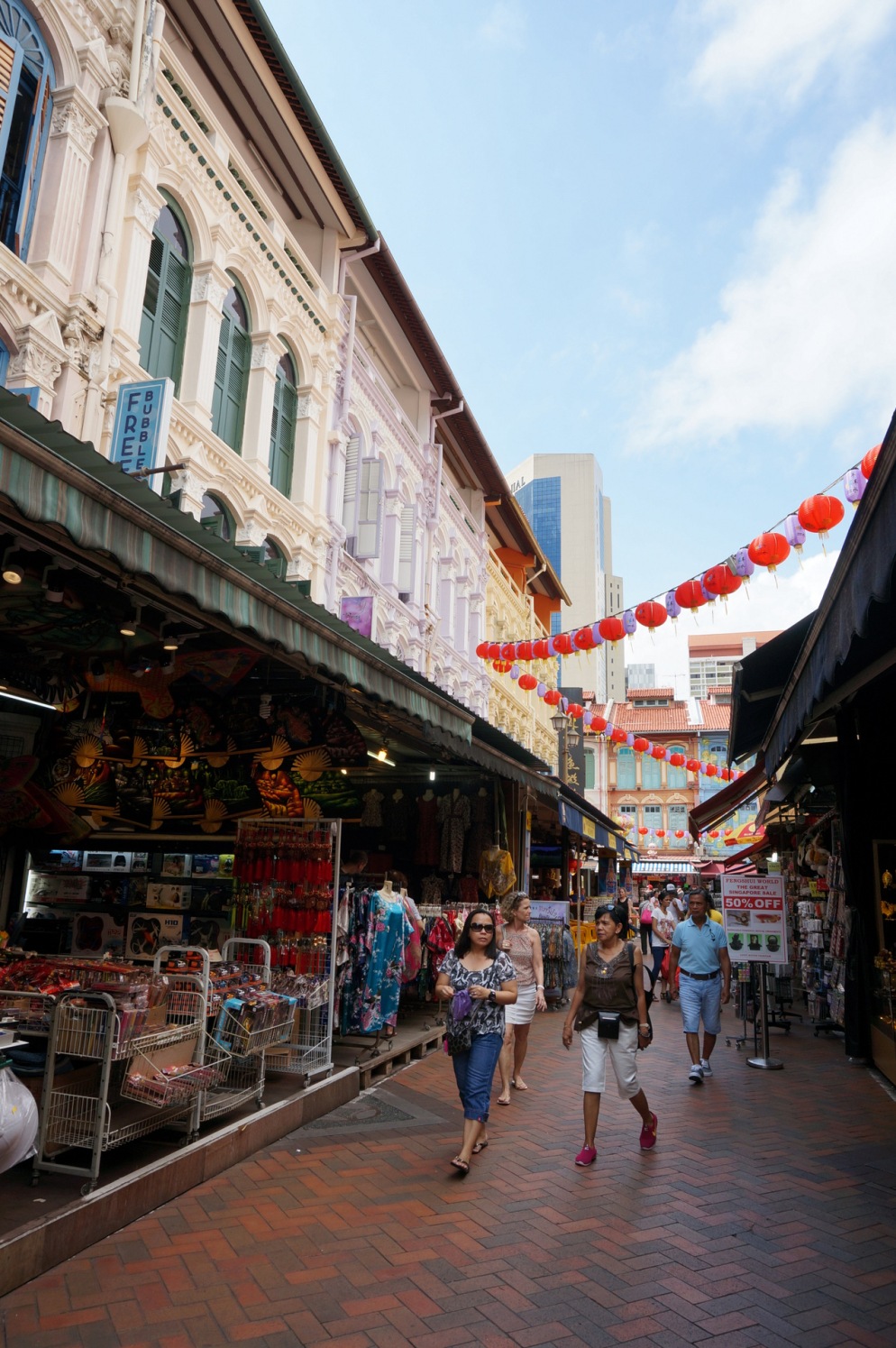
Kampong Glam & Arab Street
Kampong Glam near the Bugis MRT Station is a lively and unique district in Singapore. Many cosy side streets had walls painted by talented artists. The district had a, I would say, hipster flair especially after sunset, when the colourful lamps were lit and western tourists filled the area to enjoy the kind of lifestyle they might feel more comfortable with. Sharing a beer while having pizza, sausages and döner kebap was a welcoming alternative after a long hot day spent at non air conditioned Hawker centers feeling perplexed at the sight endless rows of food booths offering delicacies they might find difficult to relate without locals as tour guides.
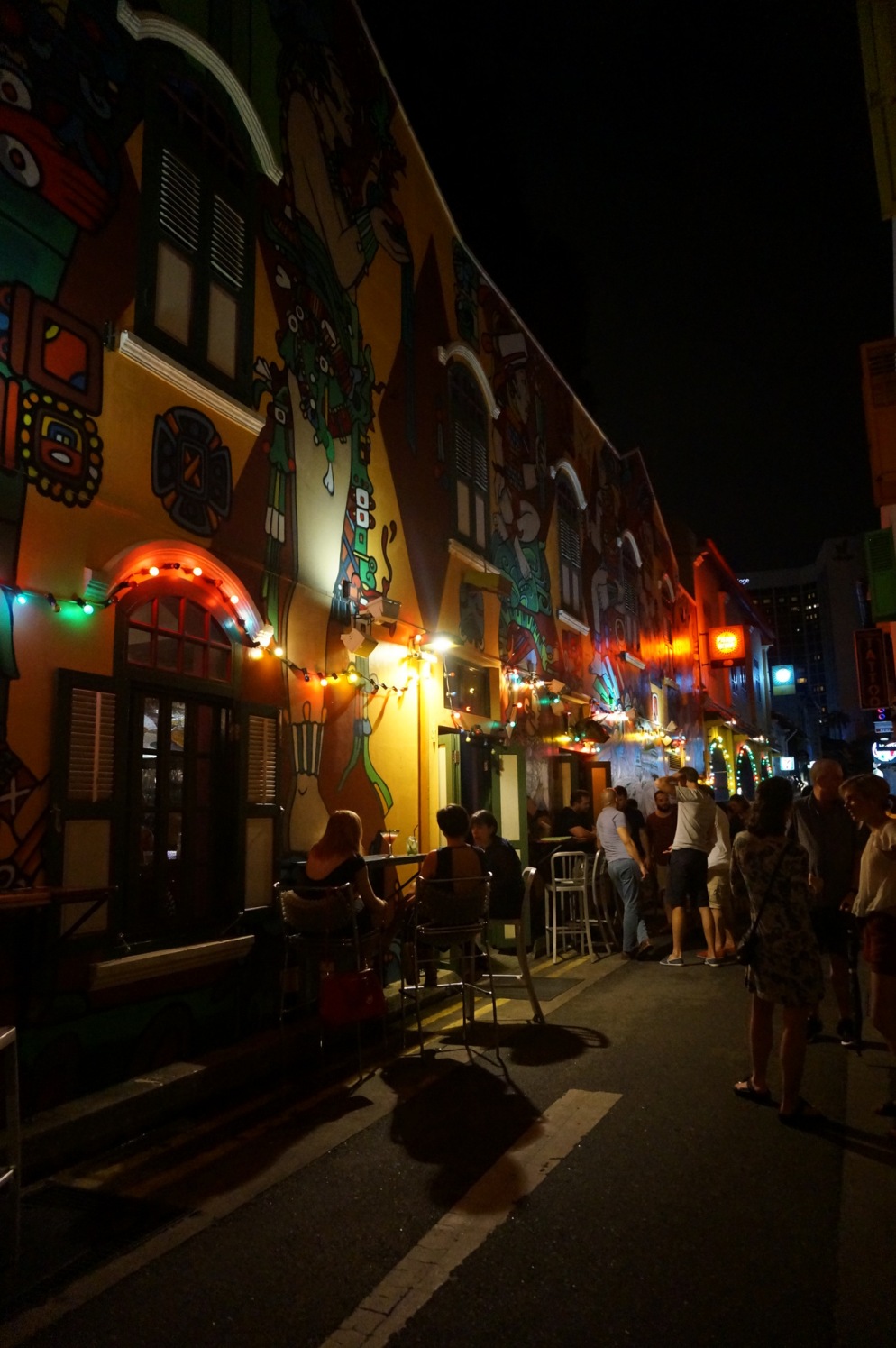
The Arab Street was parallel to streets of Kampong Glam. Masjid Sultan could not be missed by sight and it was even more unmistakenly audible within 15 minutes of walking distance in case you happened upon the area during one of the five daily calls to worship. The recitation resonated beautifully in the entire neighbourhood and evoked a sense of awe.
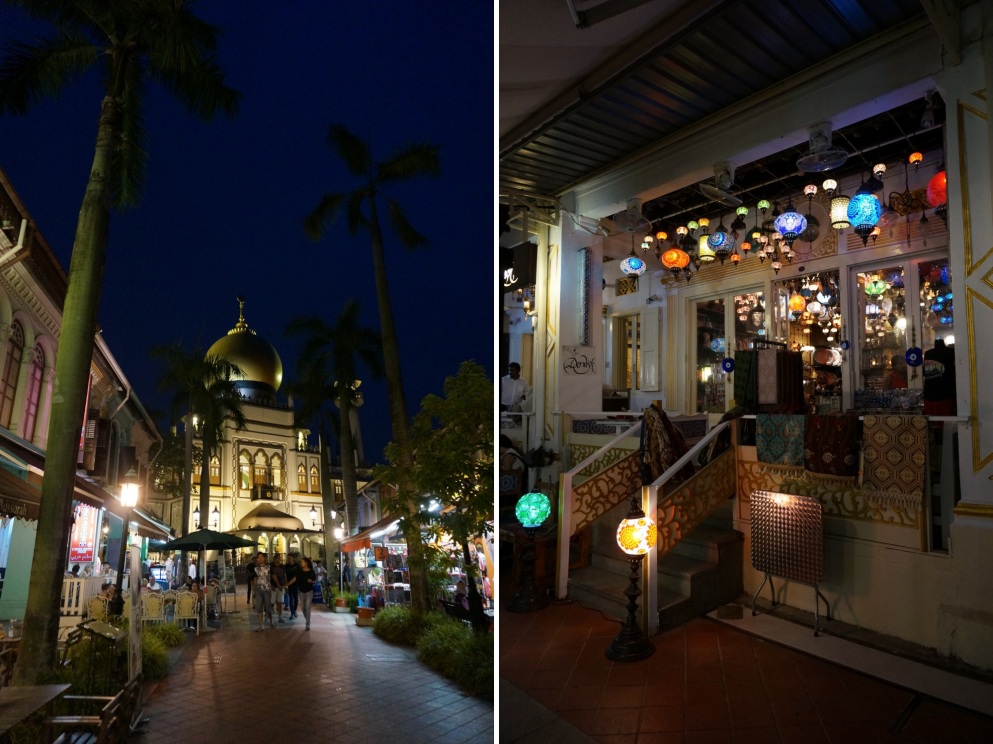
Orchard Road
The Orchard Road is certainly the complete opposite of an alleyway. But I do not know where else to put this section. So here you go.
Dhoby Ghaut, Somerset and Orchard are all MRT stations that will take you to a section of this popular shopping street. Get off at any of the three stations and take your time wandering around. I spent a few hours browsing through the bookstore Books Kinokuniya with its huge selection of (Traditional) Chinese, English and Japanese books.
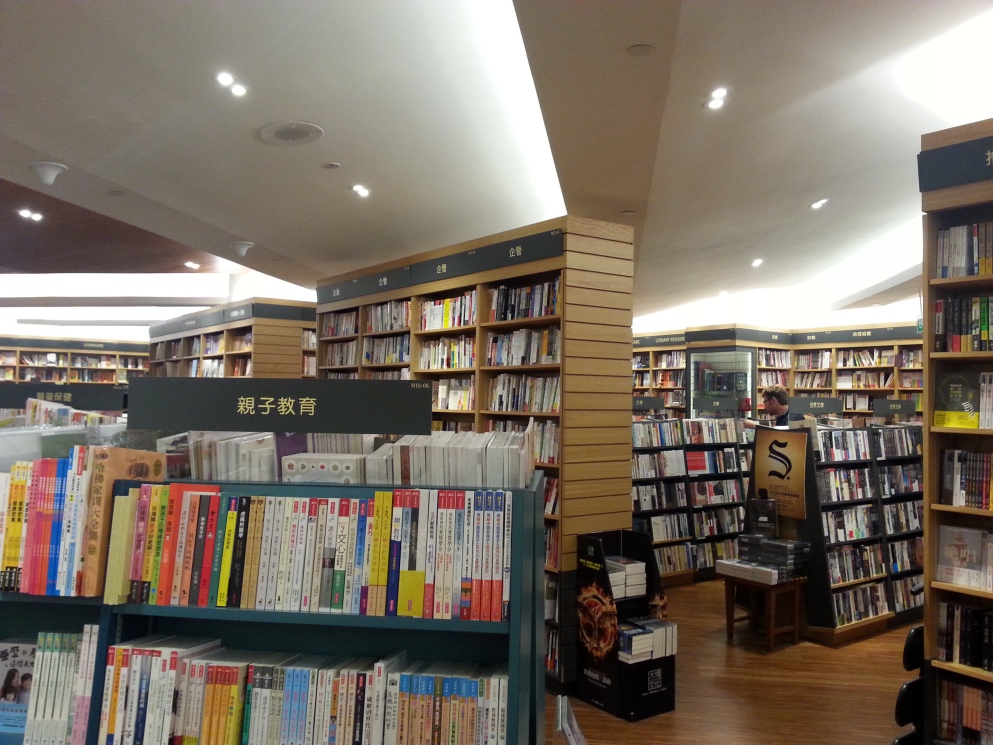
Botanic Garden
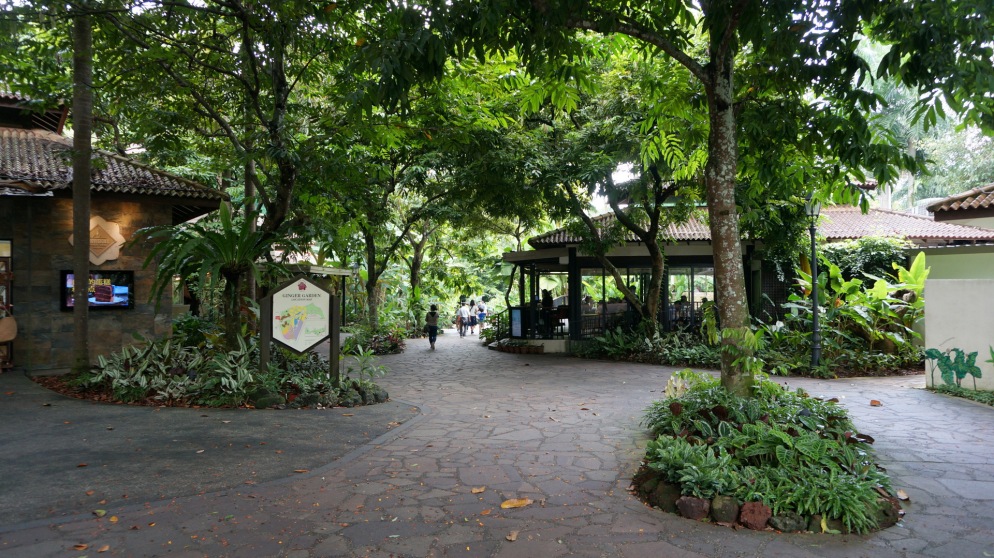
Four things to keep in mind when going for long outdoor retreats in a place like the Botanic Garden: Put on sunscreen (or a hat), bring 50 liter of water for each person, a portable and easily washable towel to constantly wipe away your sweat, and an umbrella both for sunny and raining hours. Alright, these four things apply for any extended trips in Singapore. It might be uncommon to use umbrella as a means to keep away sunlight in other places in the world, but believe me, you will dry up and shrink to a tiny piece of raisin if you feel like embracing direct sunlight for an extended period of time on your tours.
Apart from that, there is not much else to comment on. It can definitely be recommended to those who enjoy the company of trees and chirping birds.
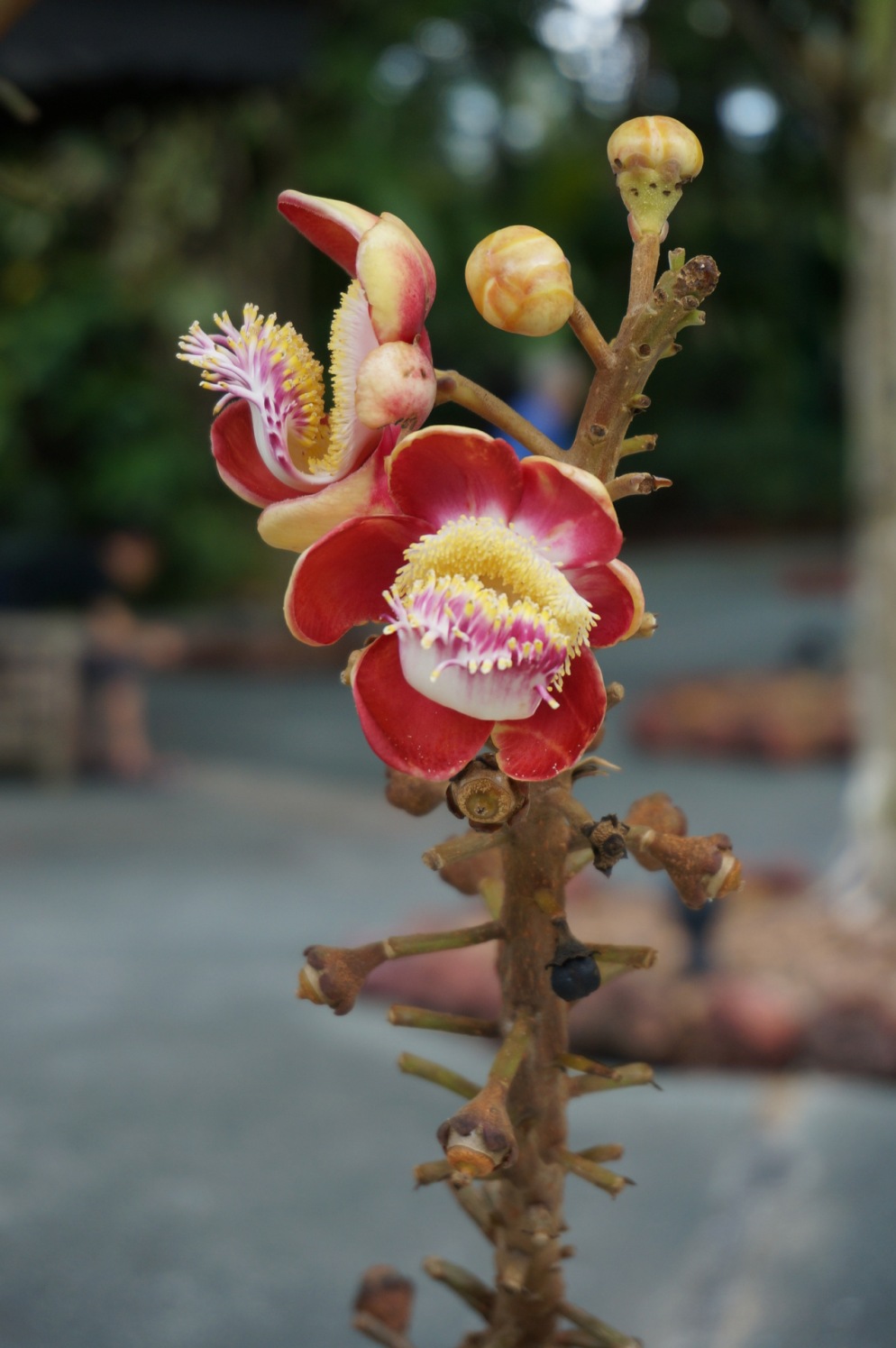
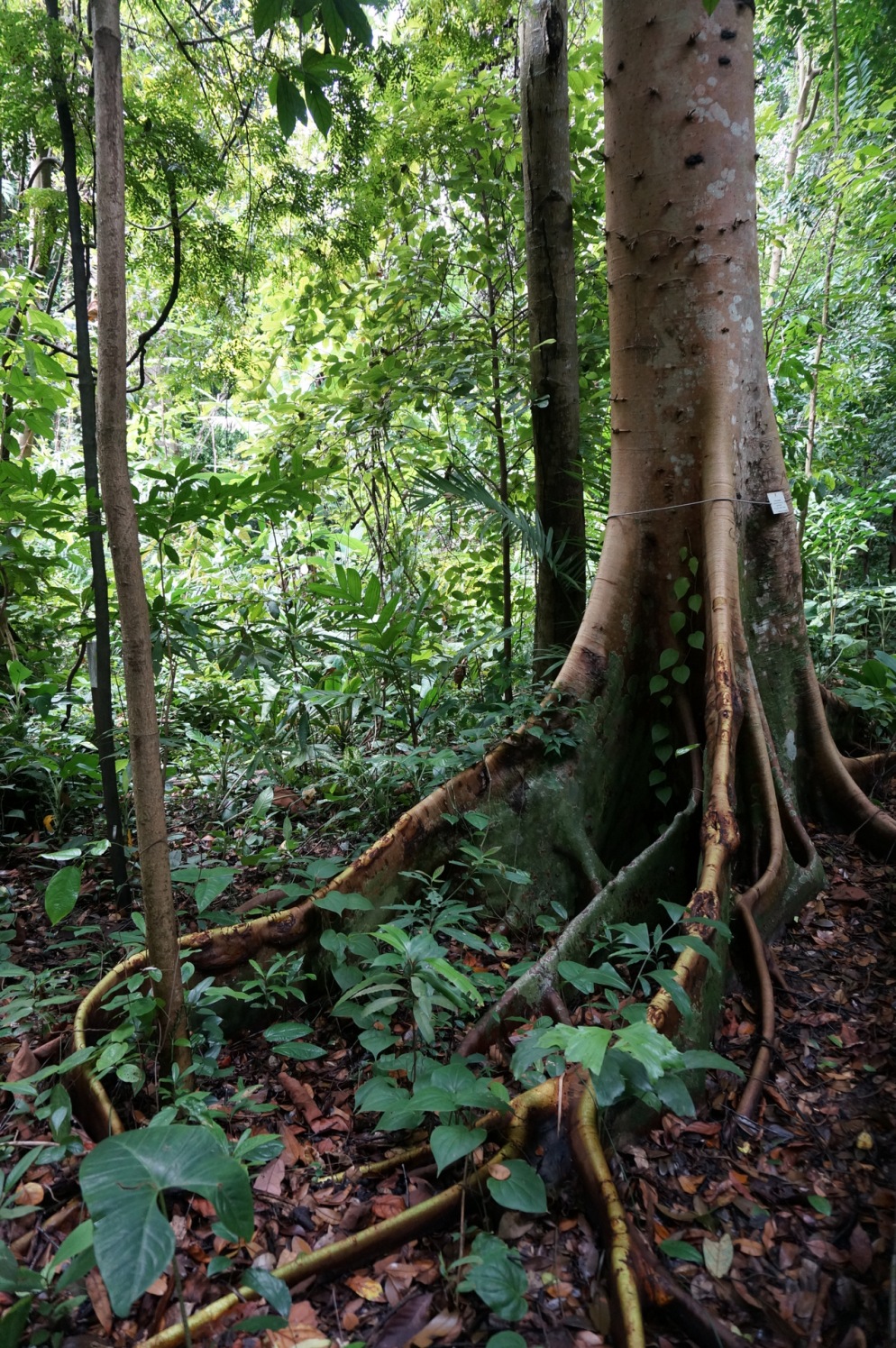
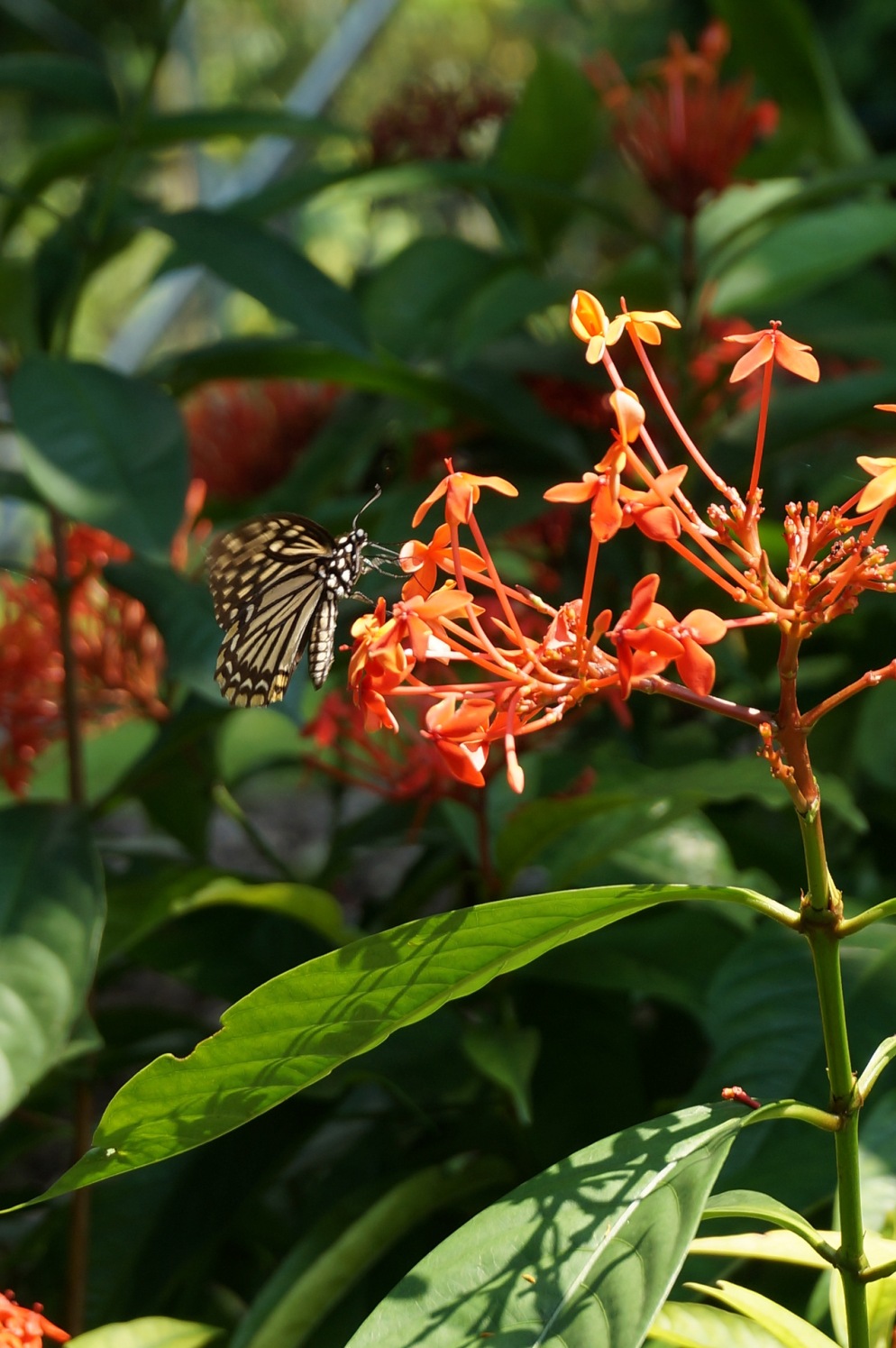
Sentosa Island
I went to Sentosa on two occasions. The first time I enjoyed a fantastic atmosphere at sunset on the beach. The second time I arrived at the same time a thick layer of everlasting blanket of rain cloud swung by. Needless to say, the second time kind of sucked. The typical type of downpour is of such urgency that you would be completely soaked if you dared venturing out for even half a second. In our case, the rain lasted for hours, and we ended up debating the question of whether the rain will stop soon if we were patient enough to wait just a bit longer more often than we could count. Unfortunately the rain won and we left after having exhausted all interesting options of the shopping area (I also fell asleep sitting on a bench).

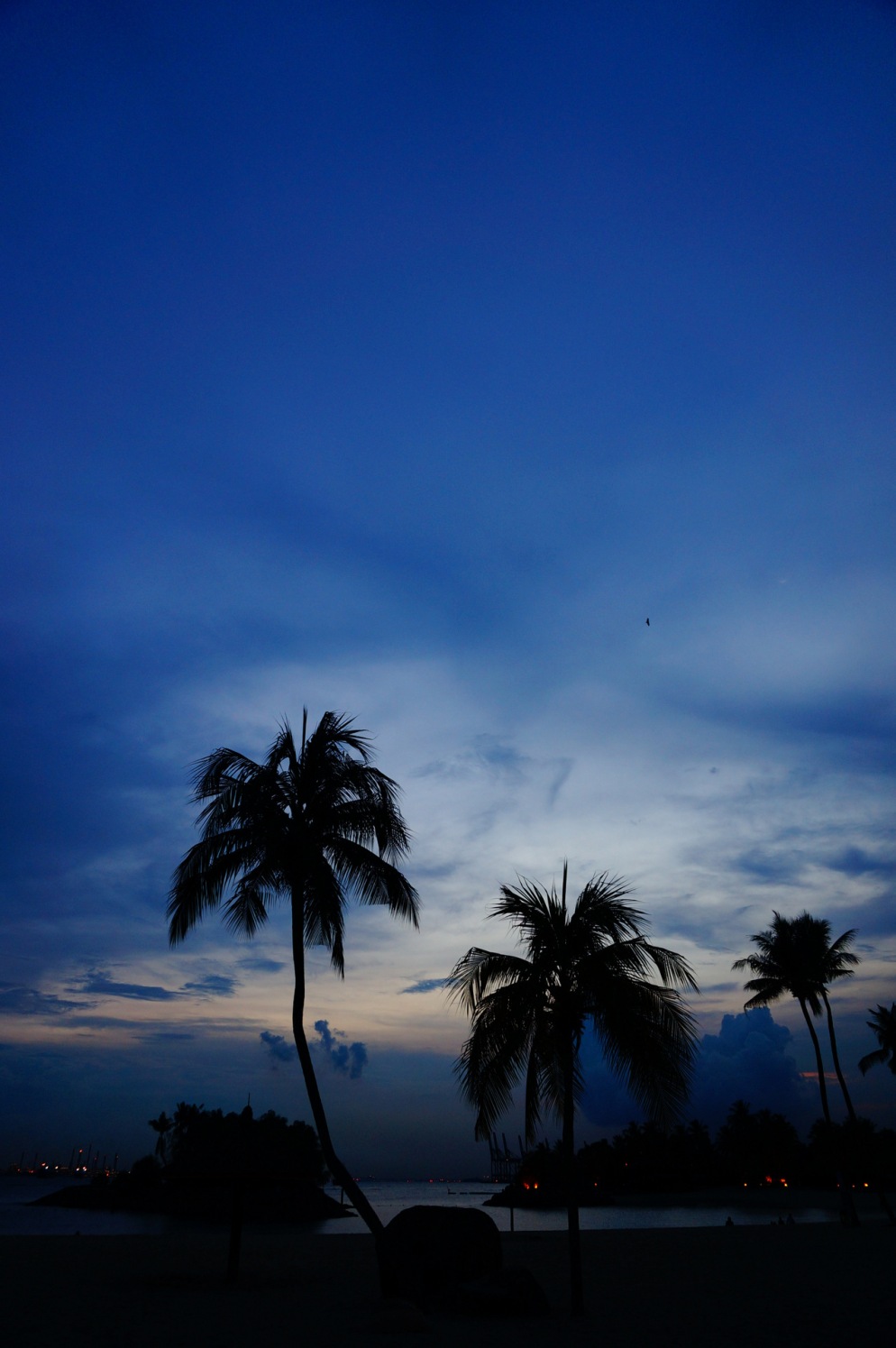
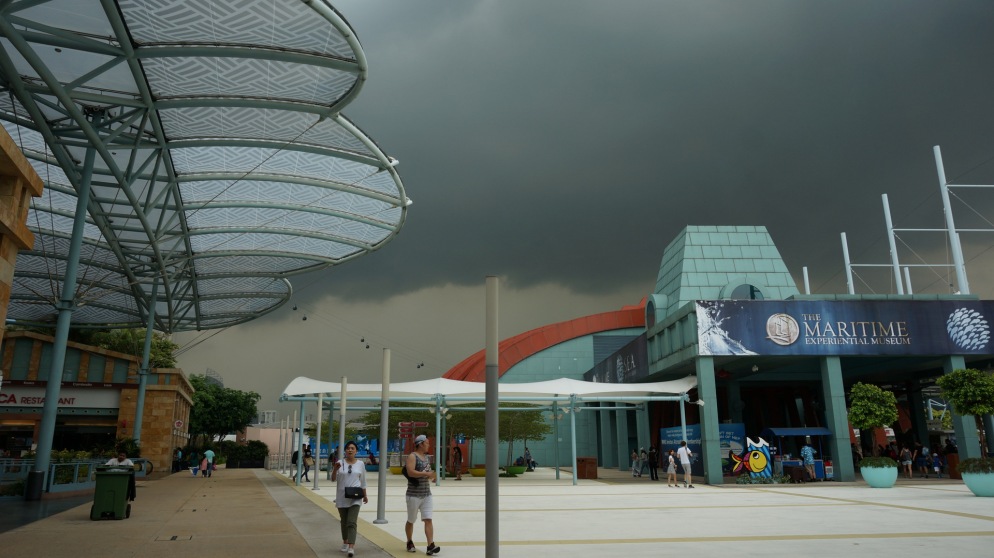
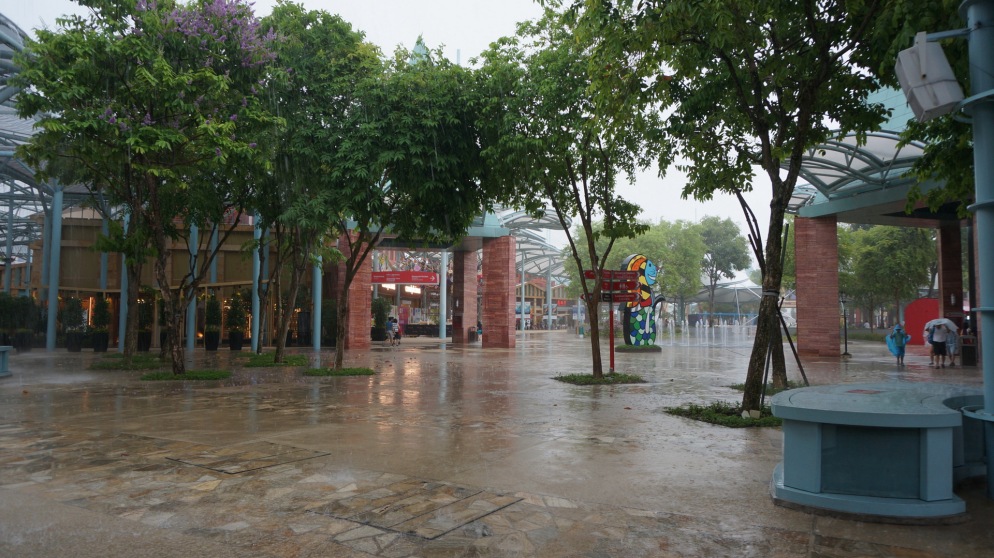
I visited Singapore in 2016. For other parts click here.